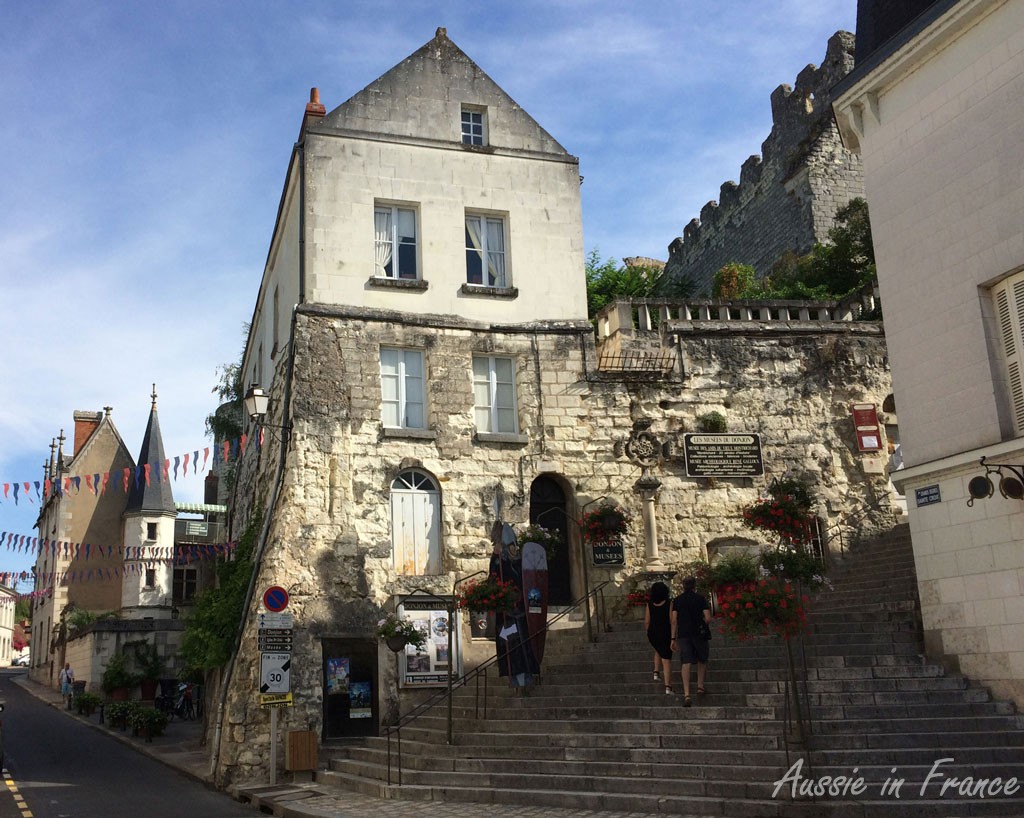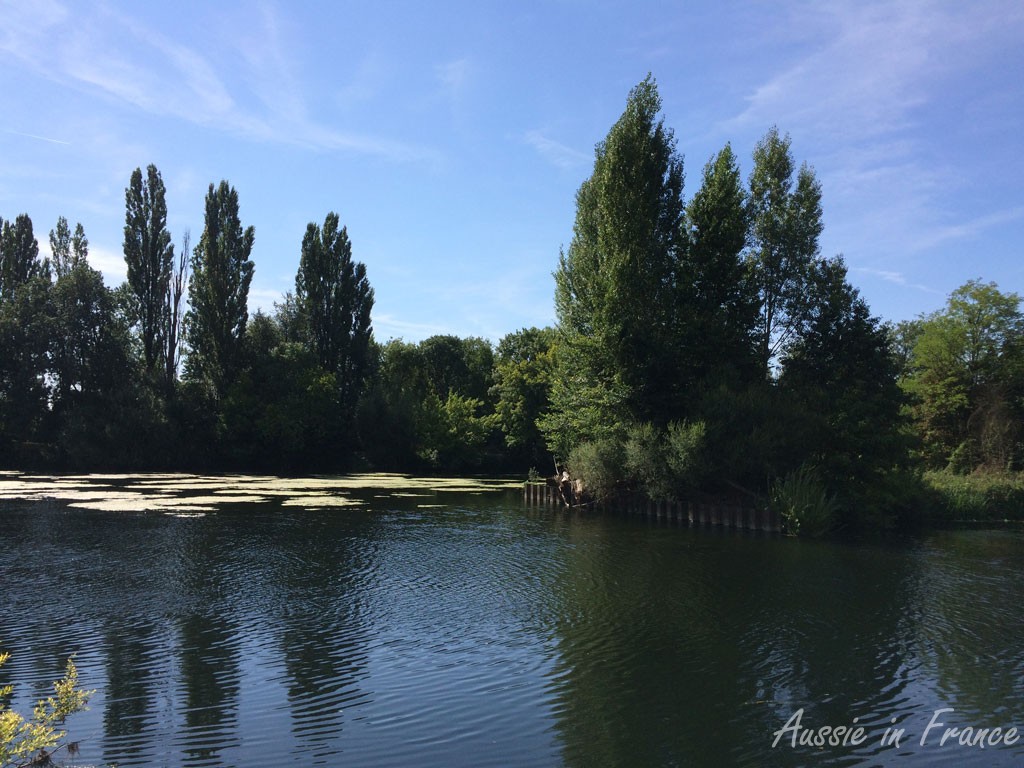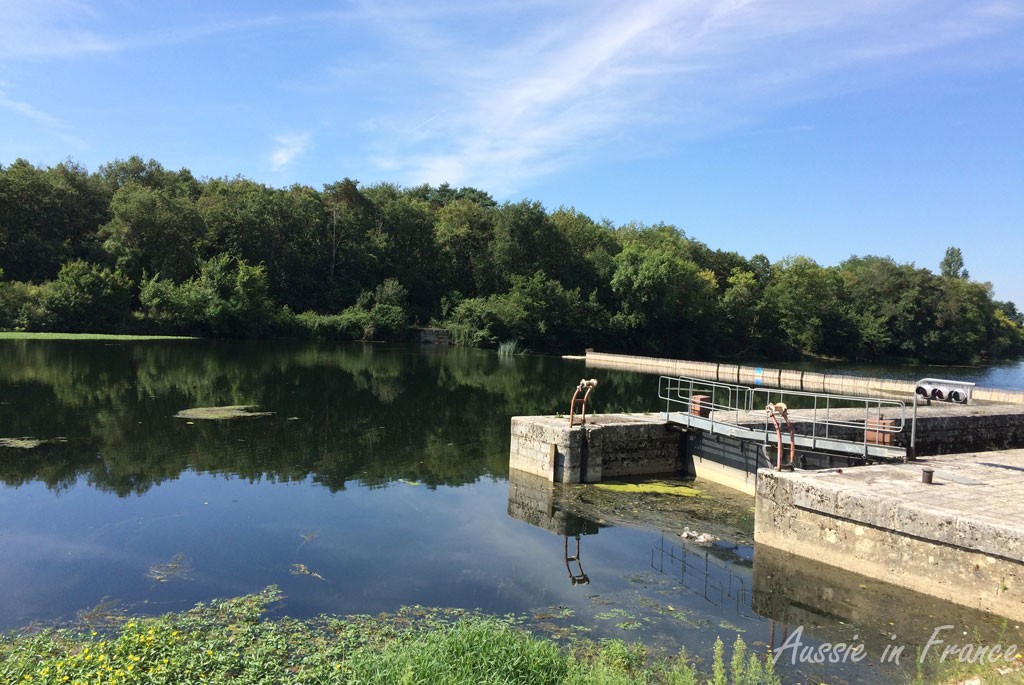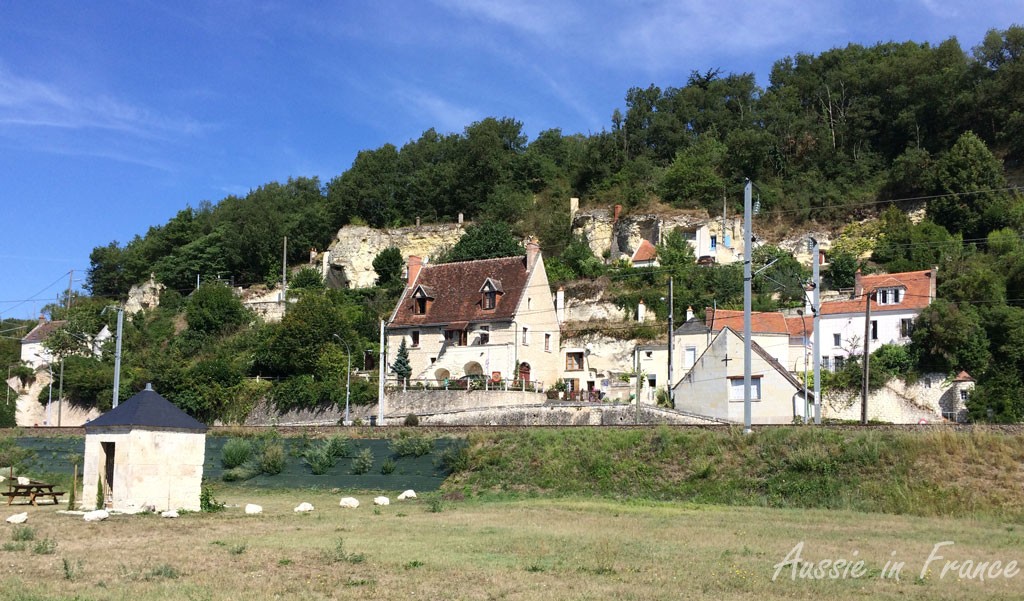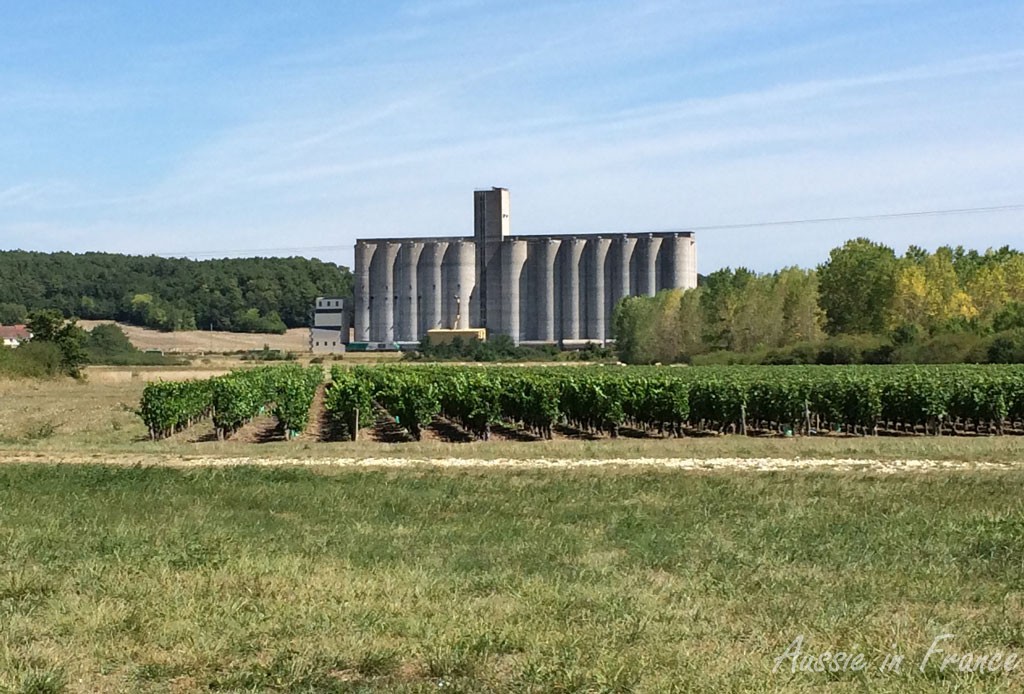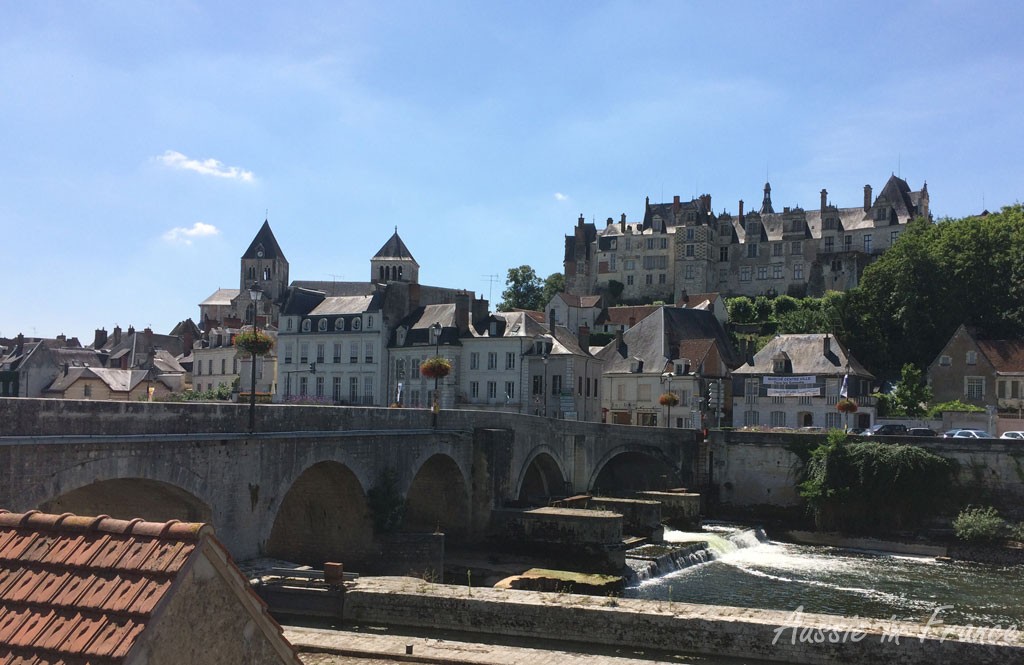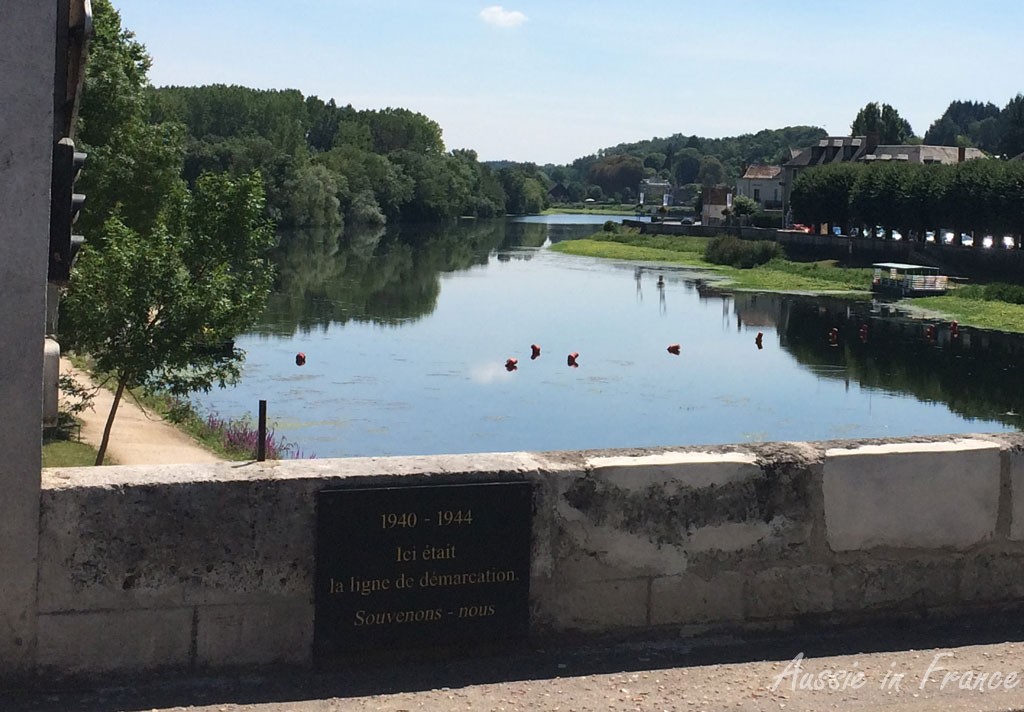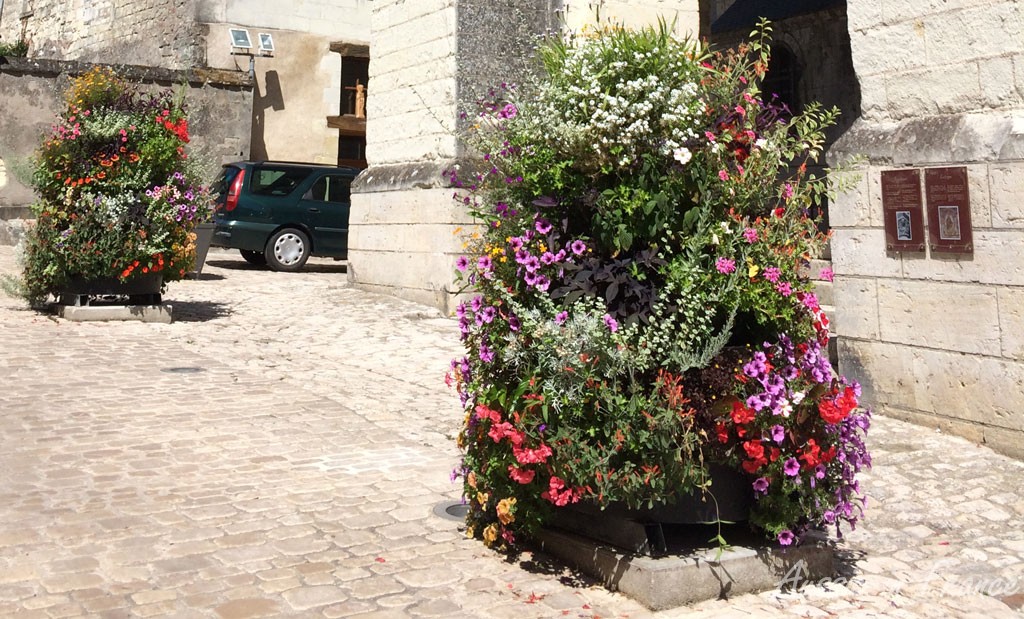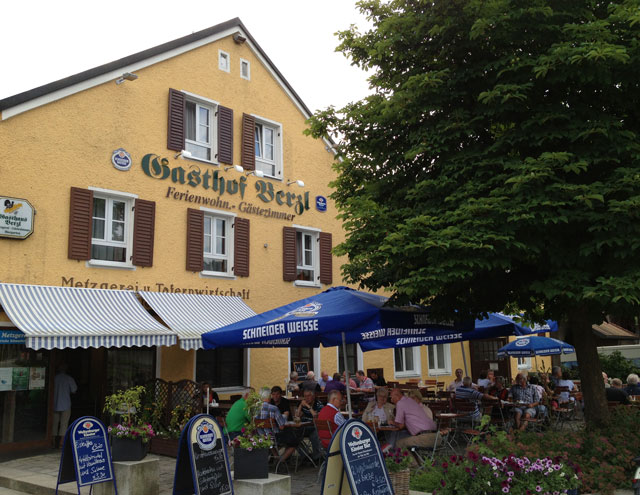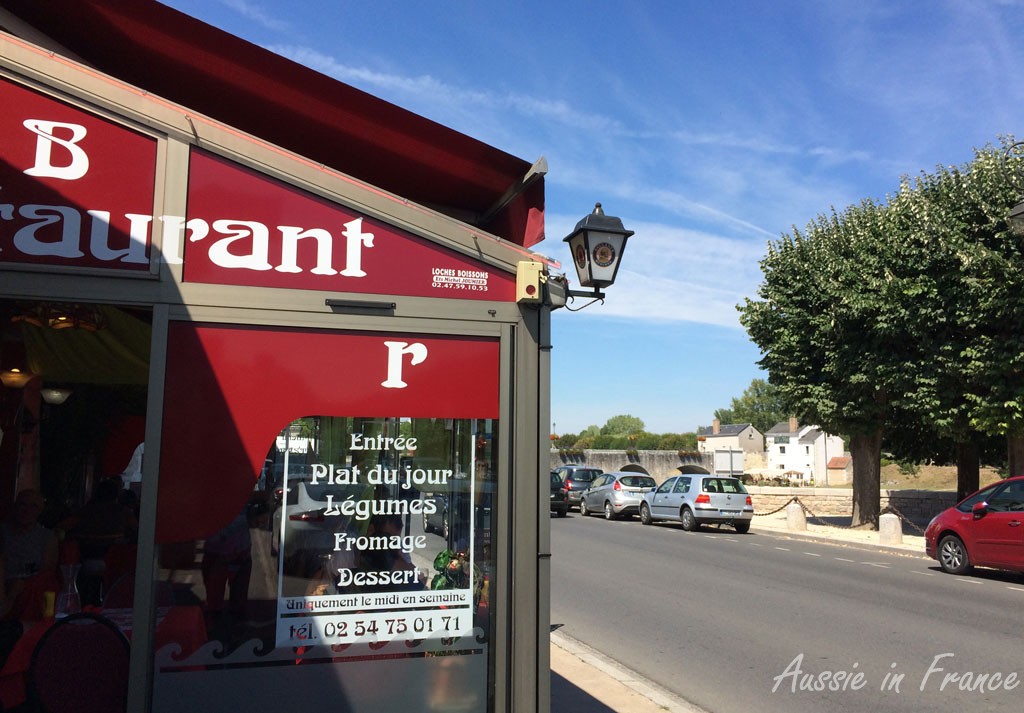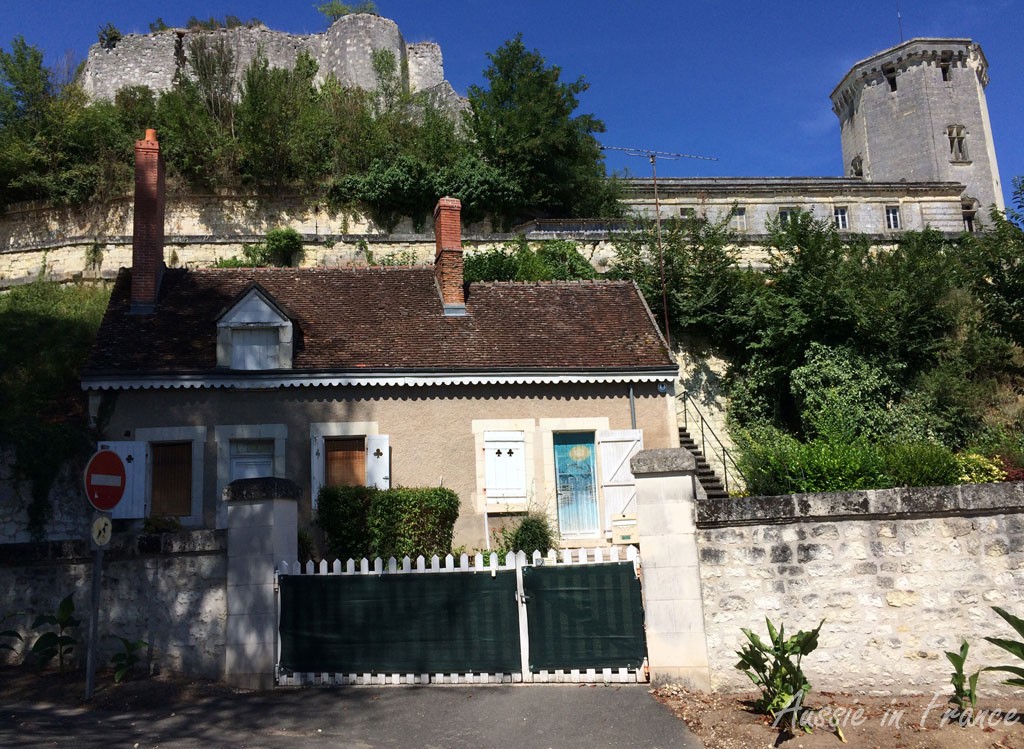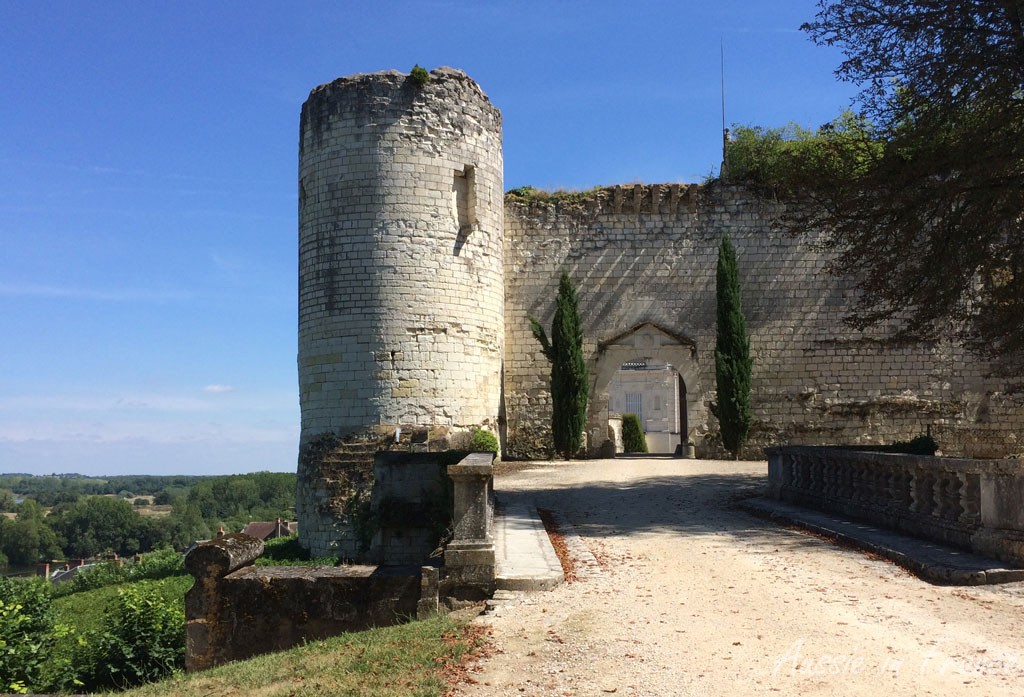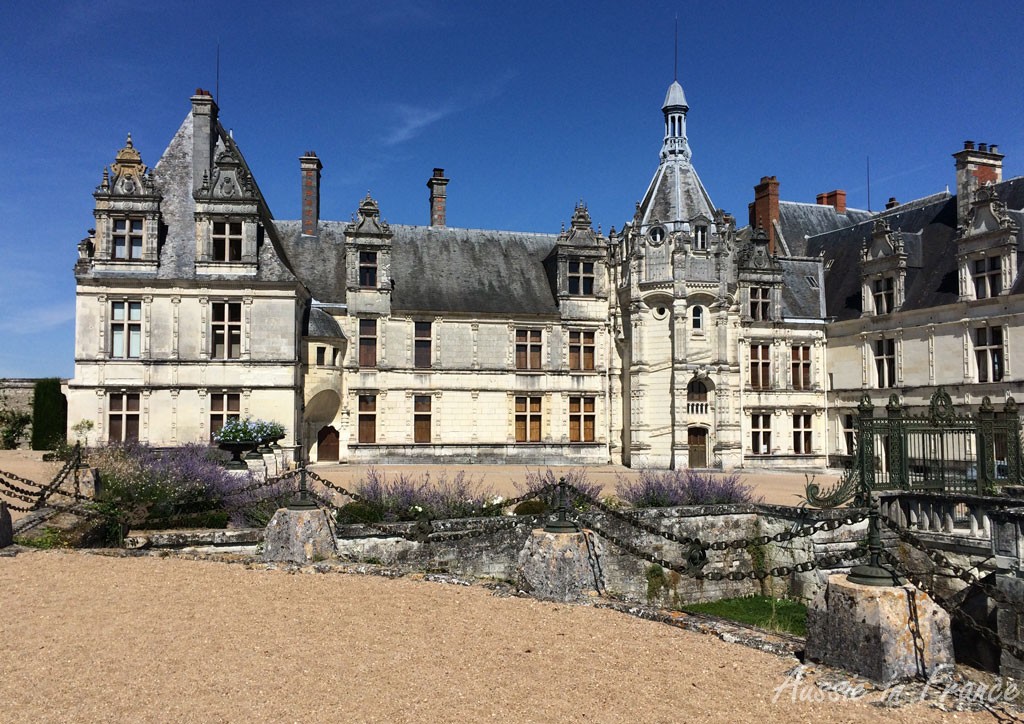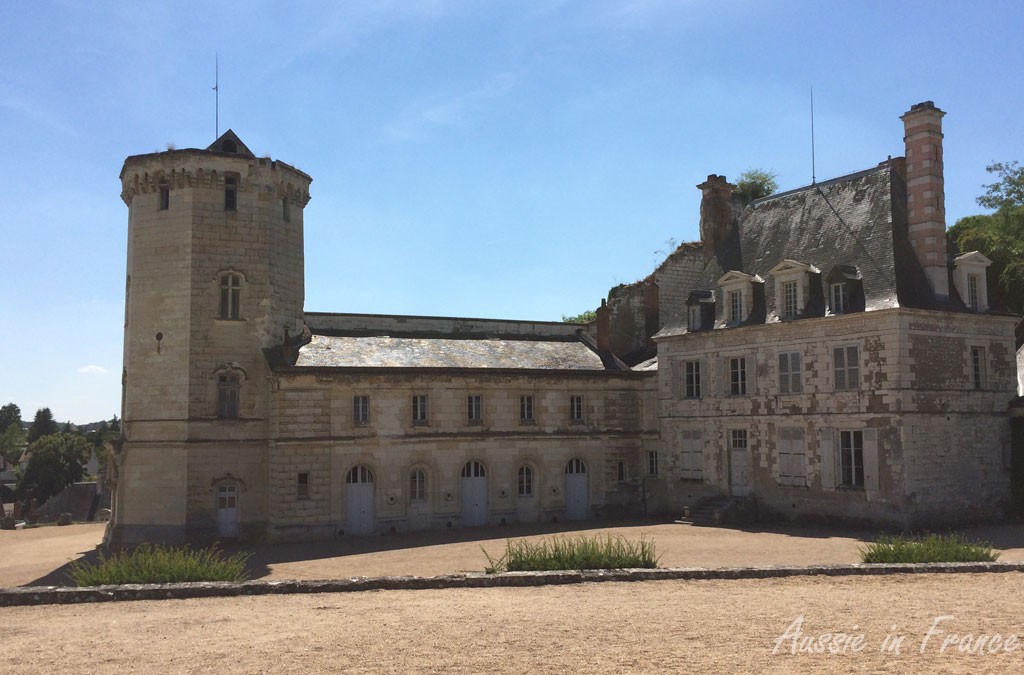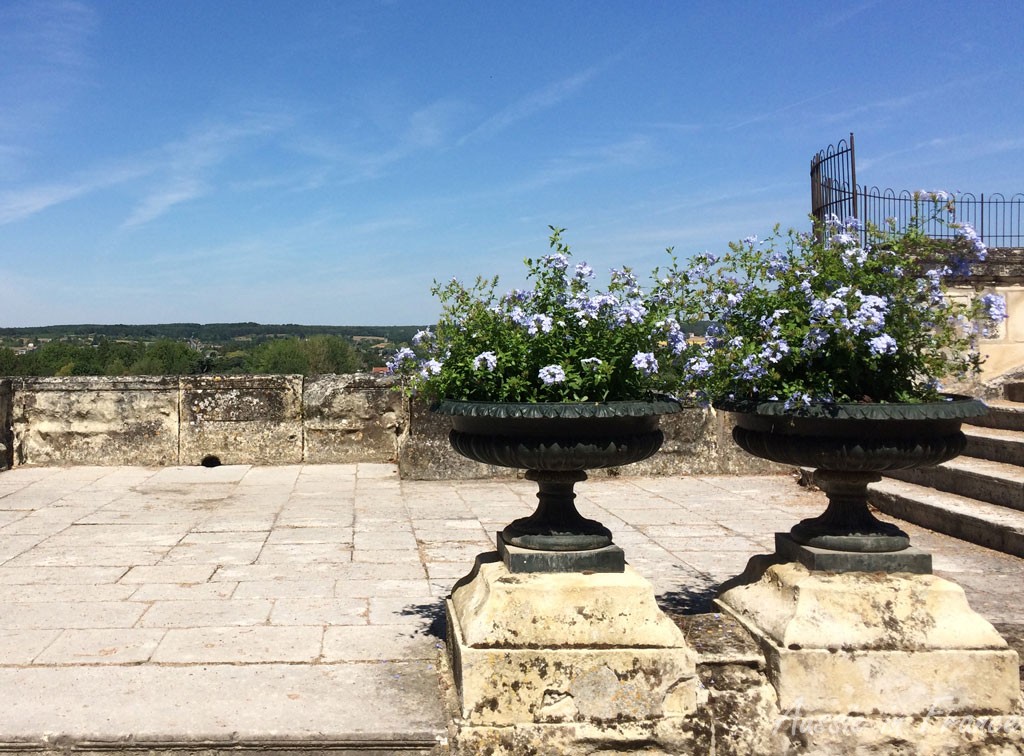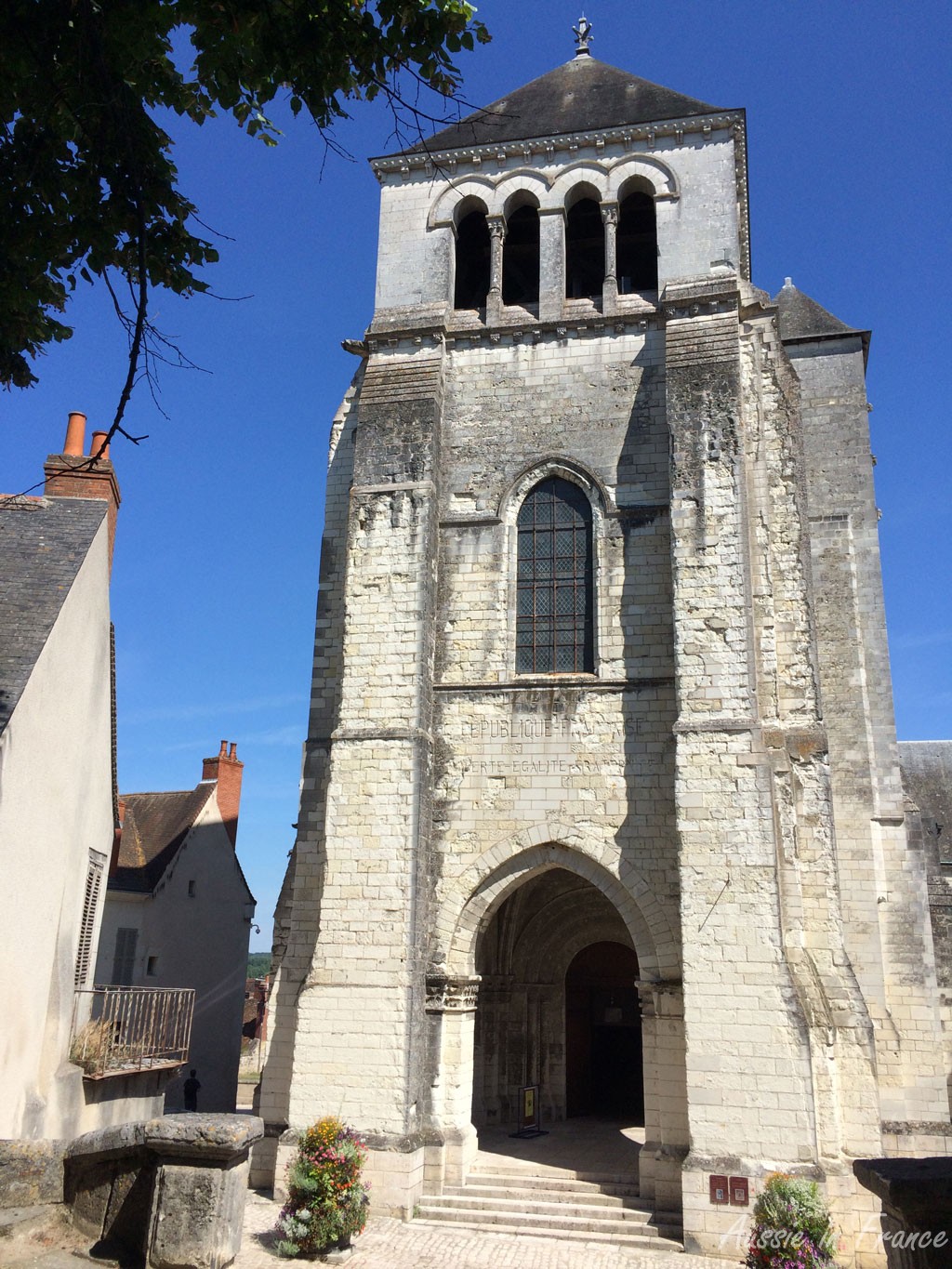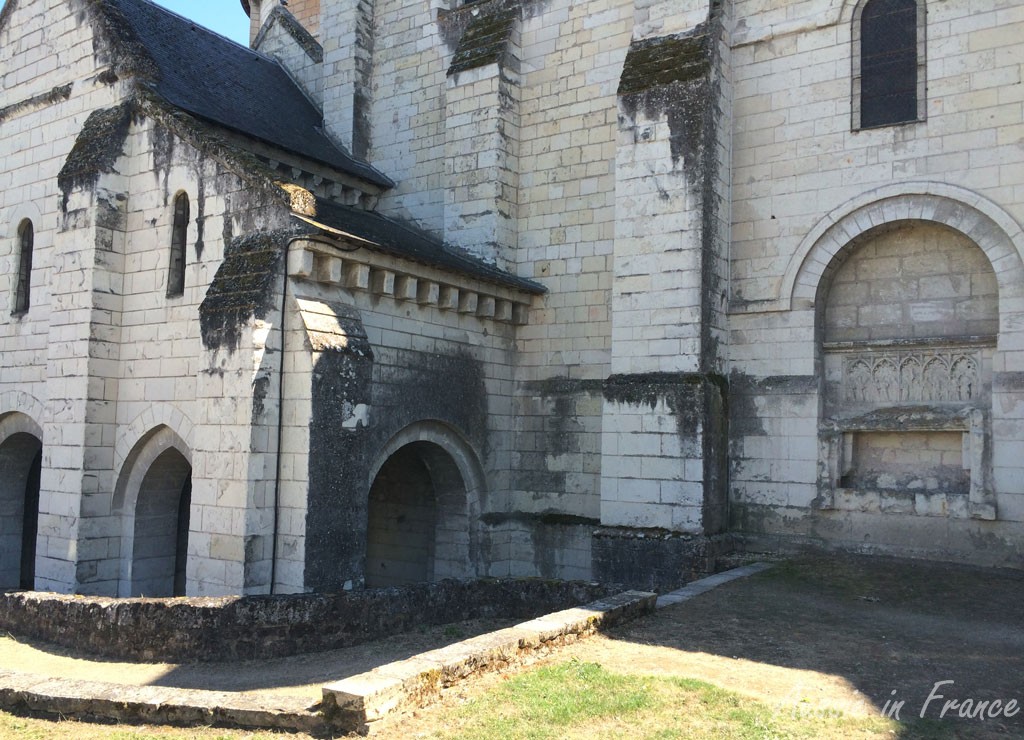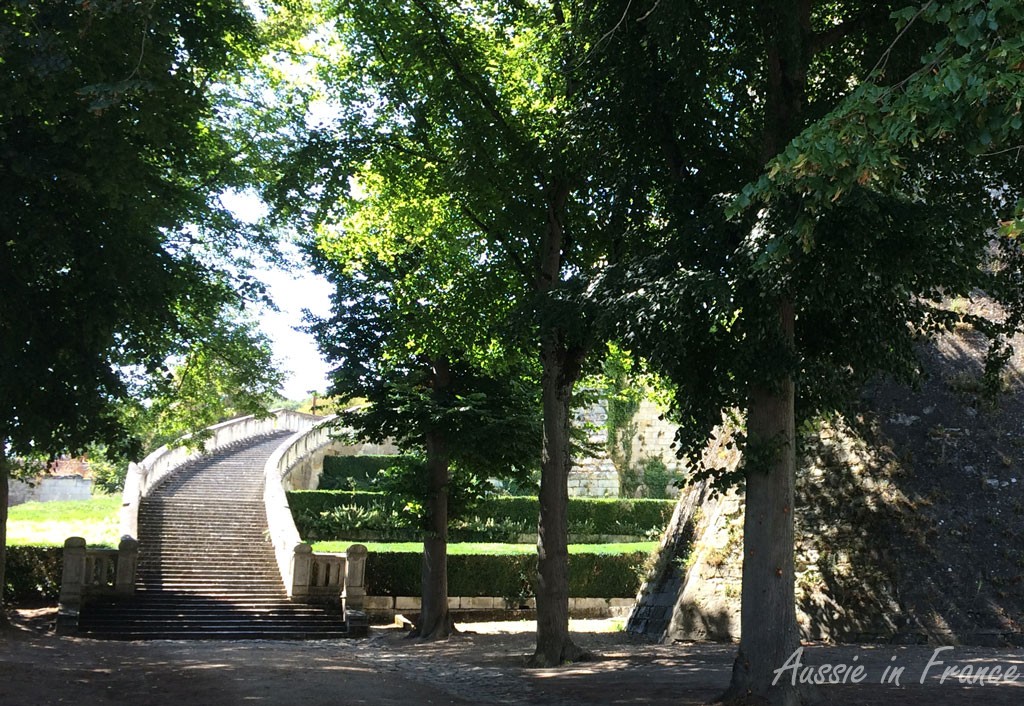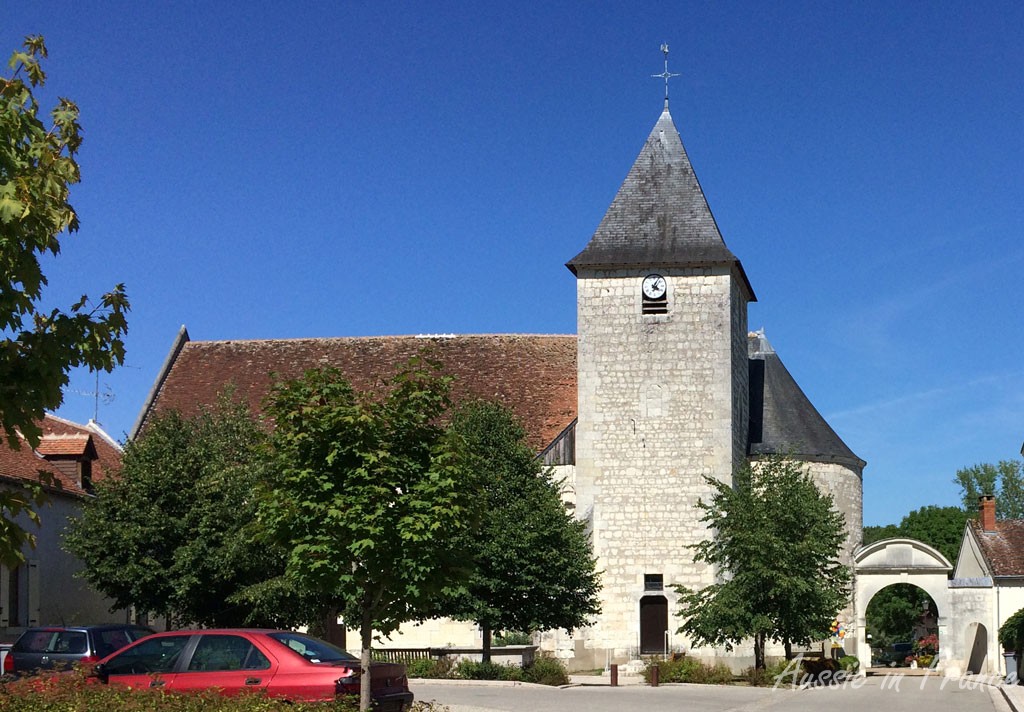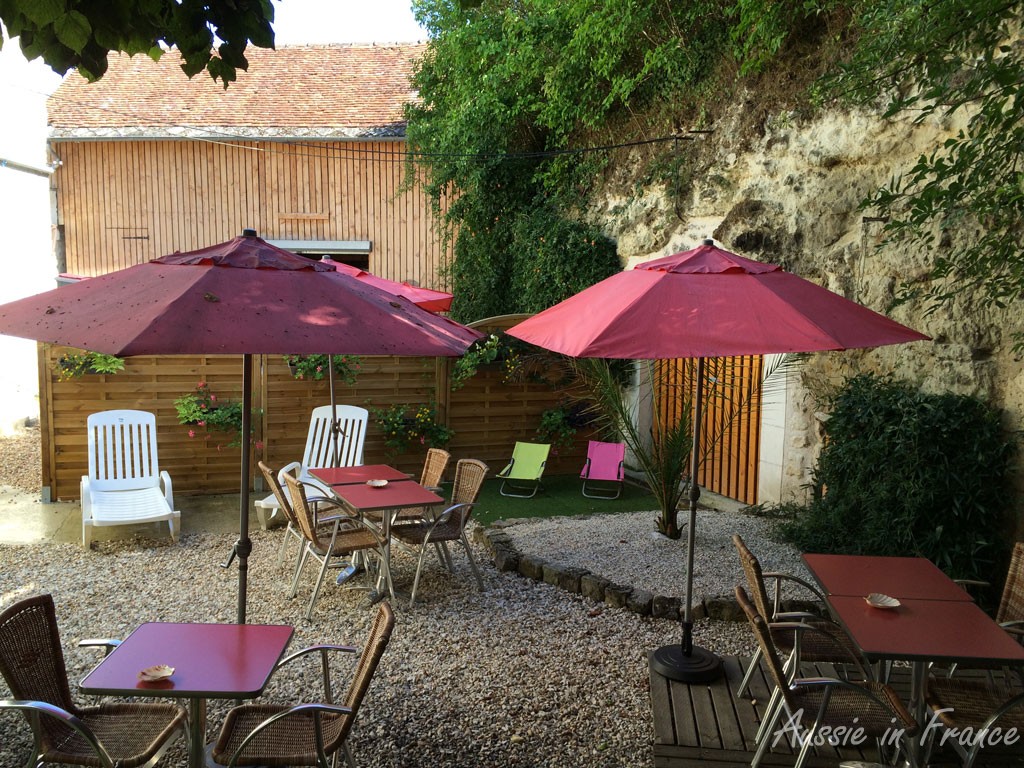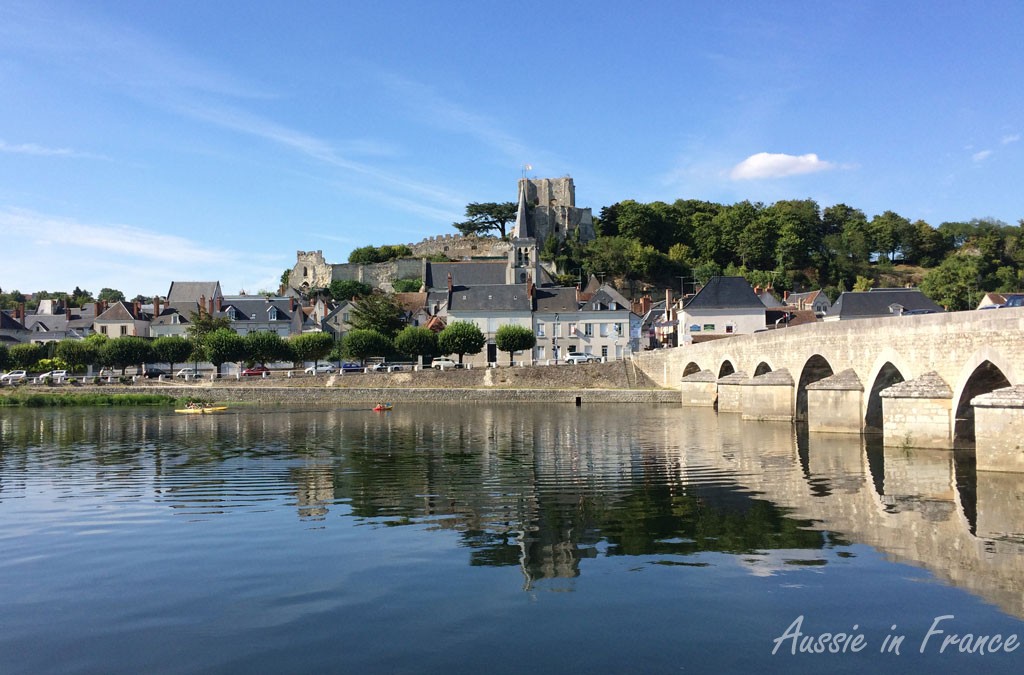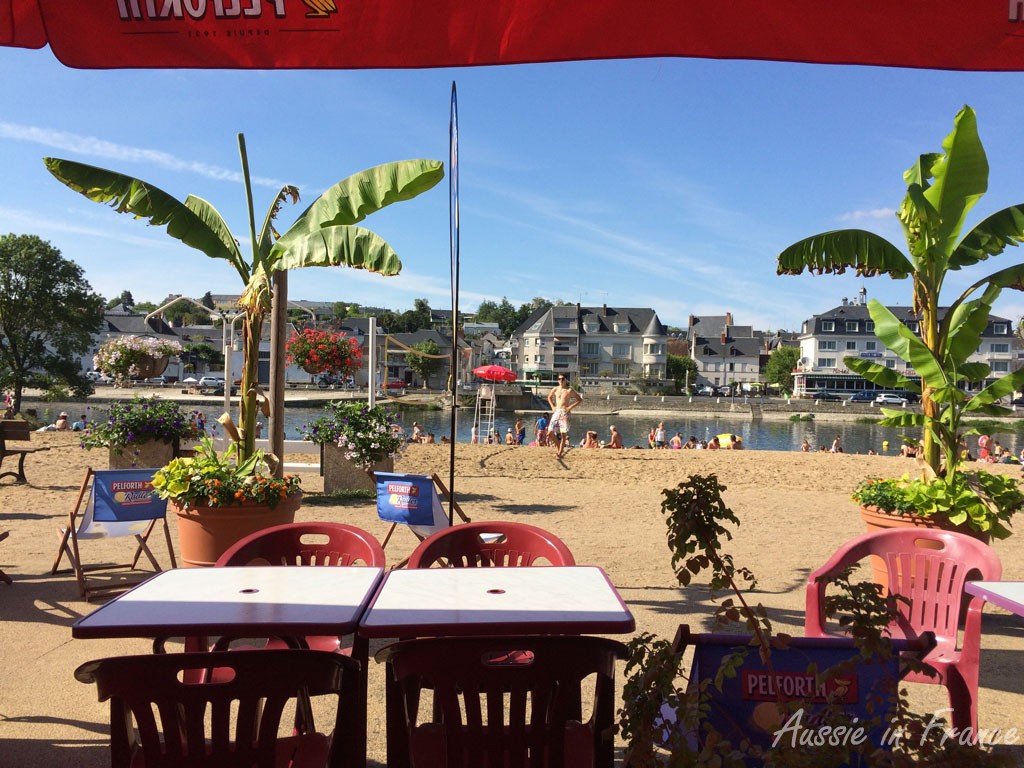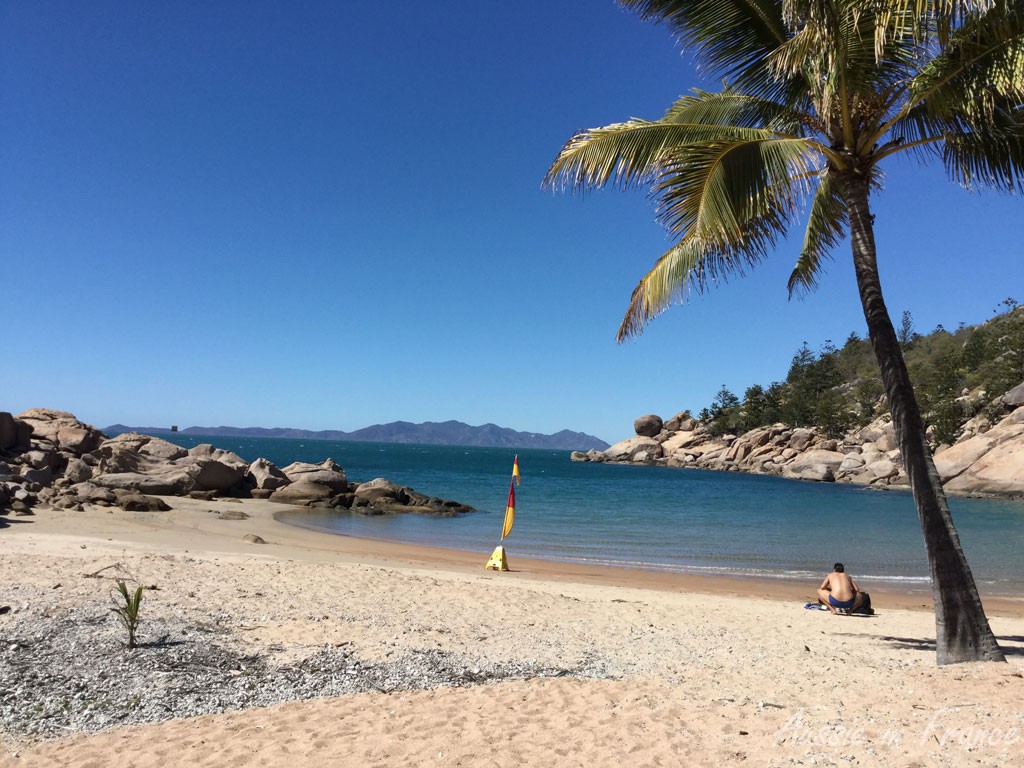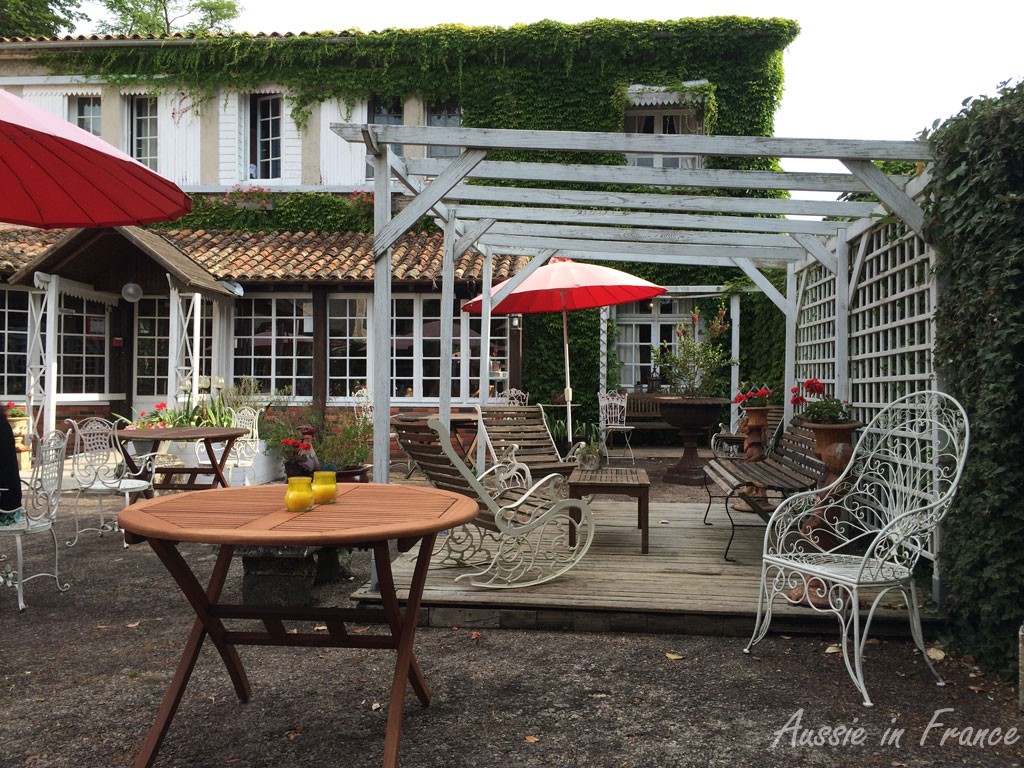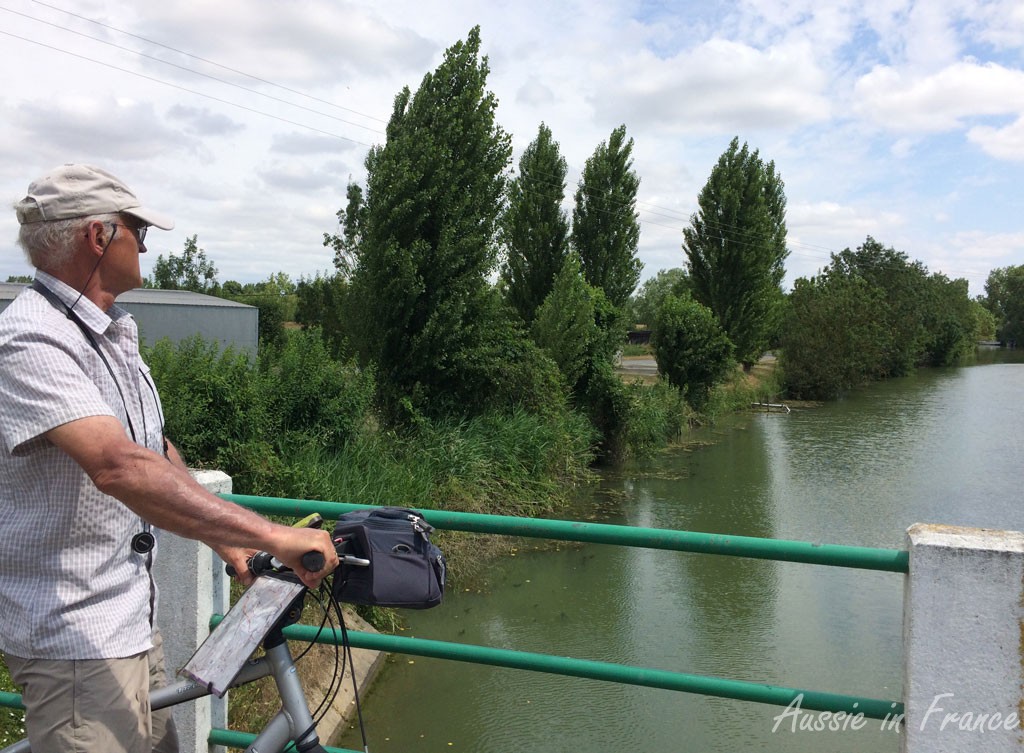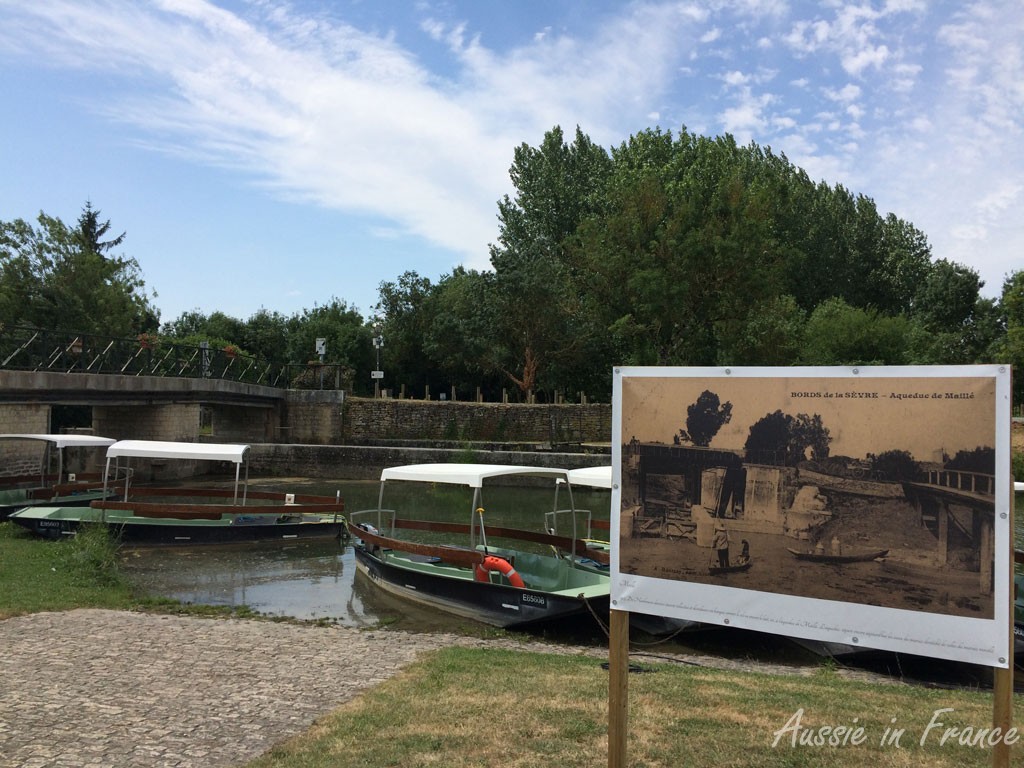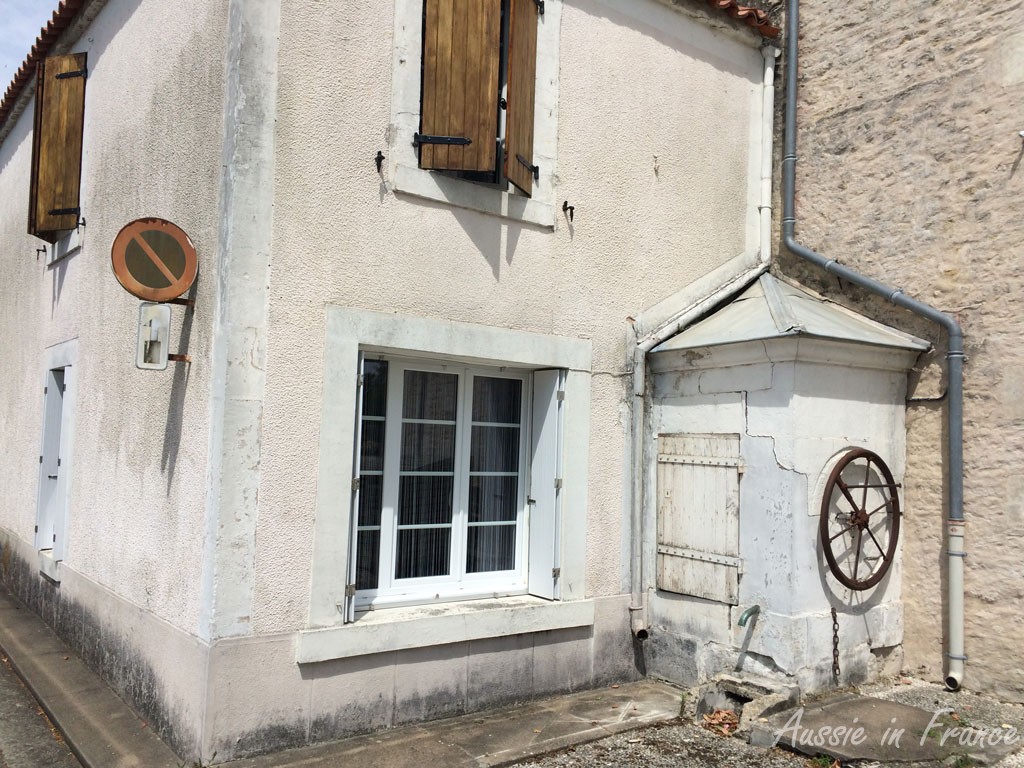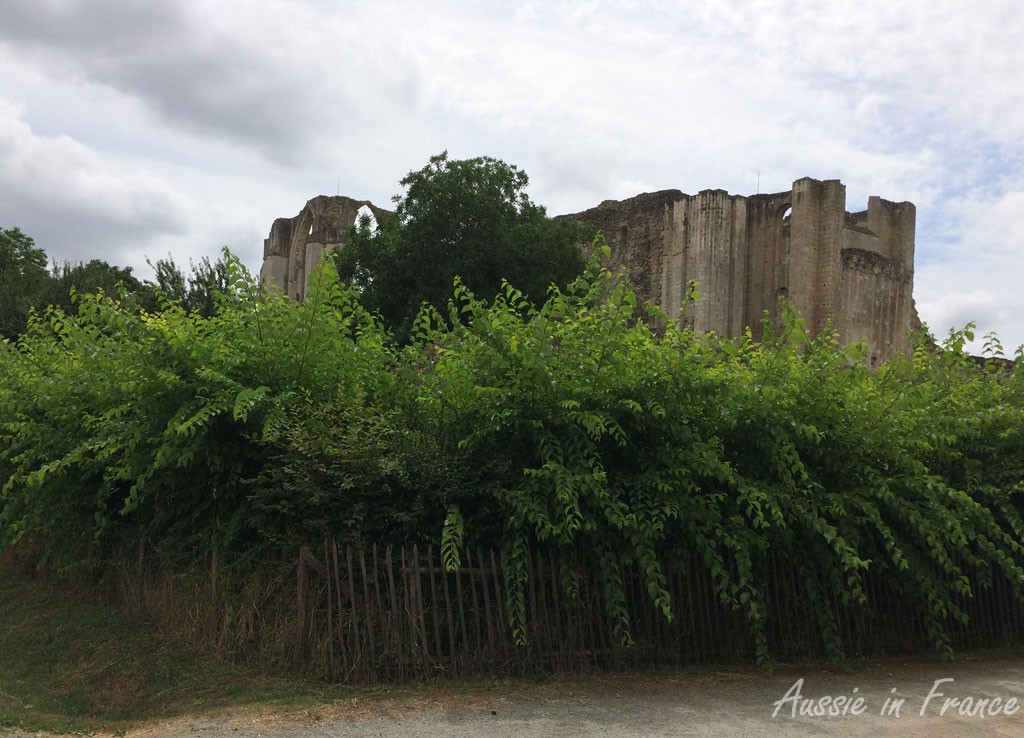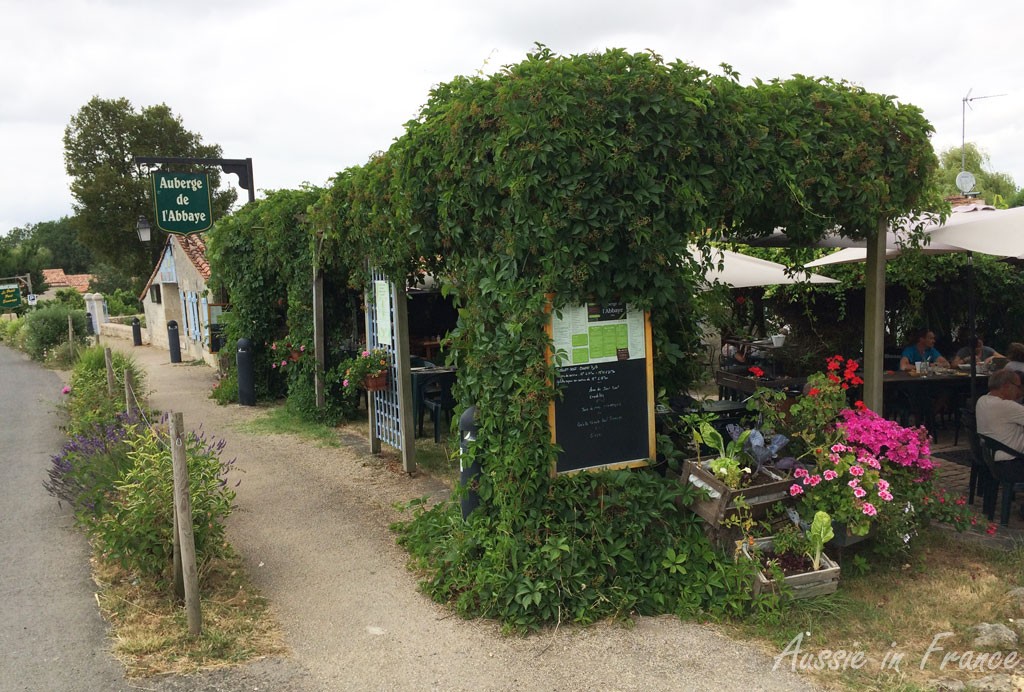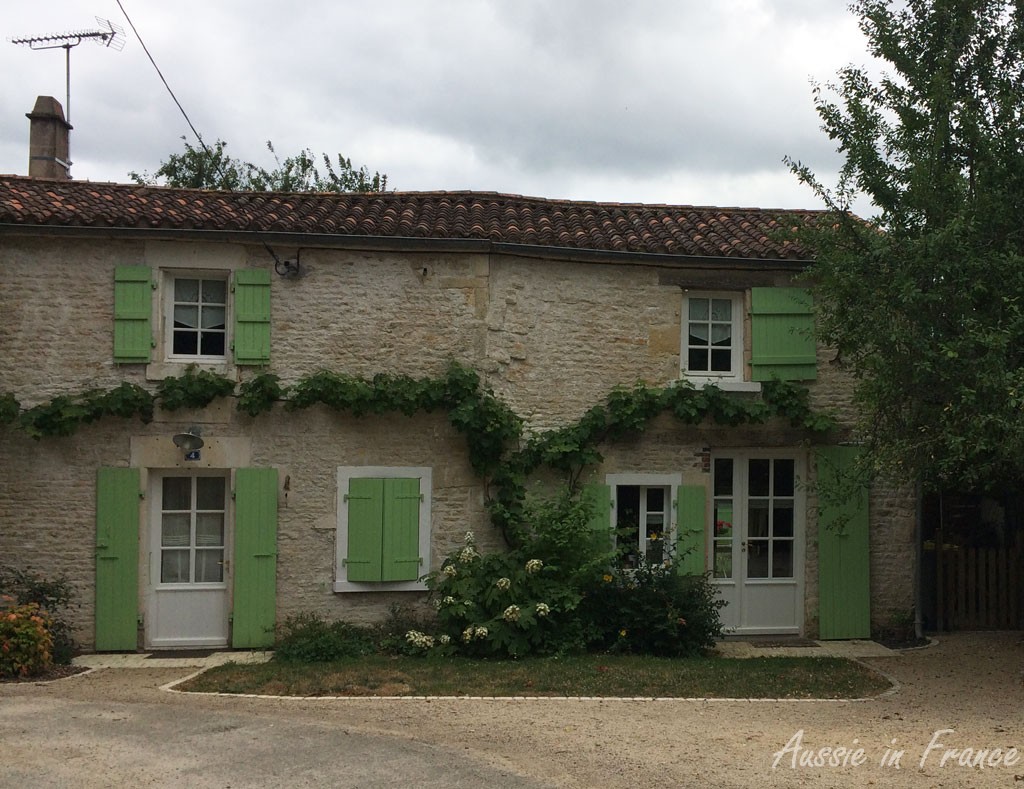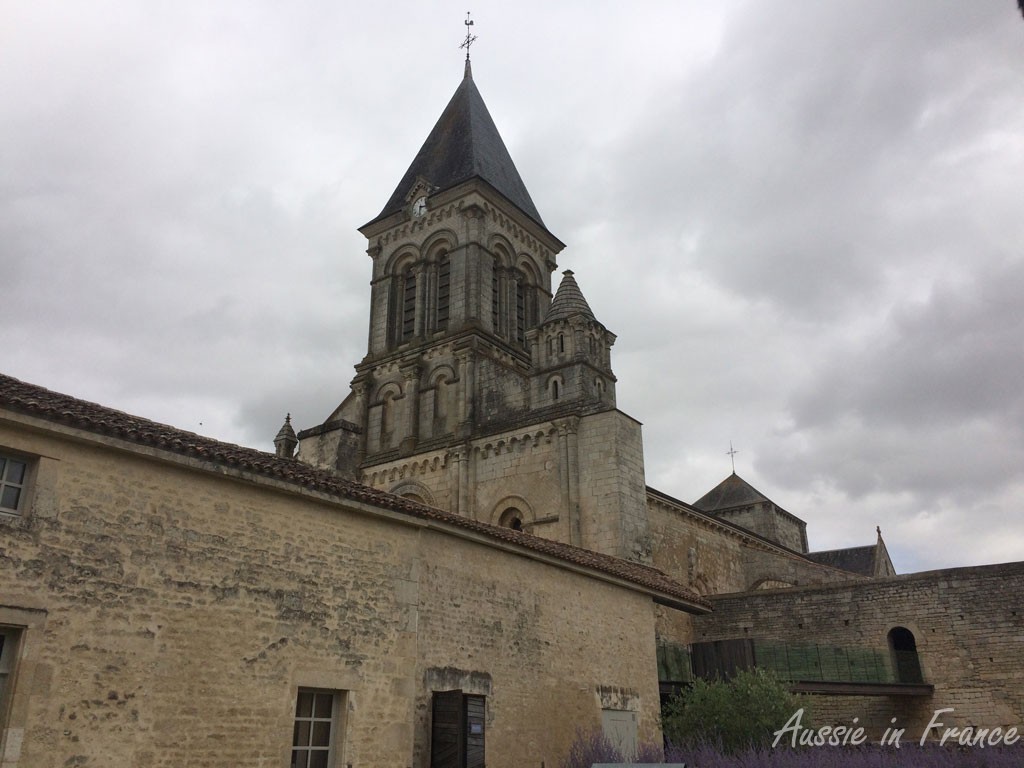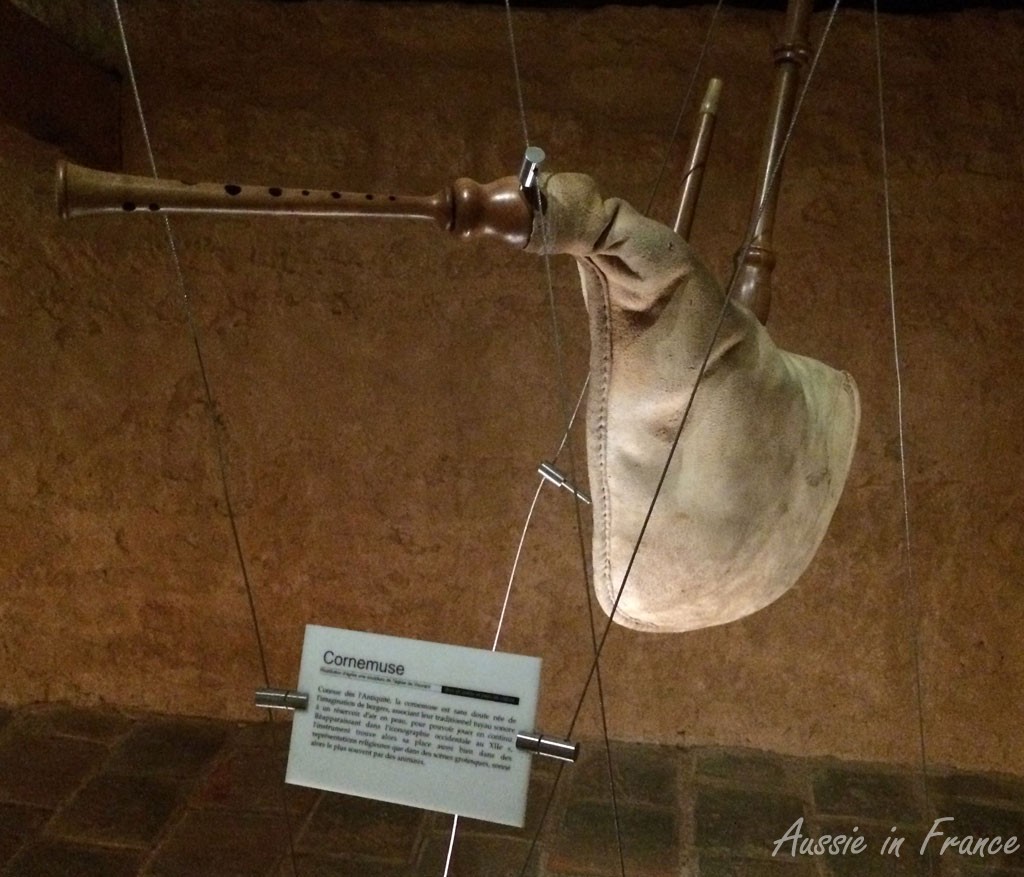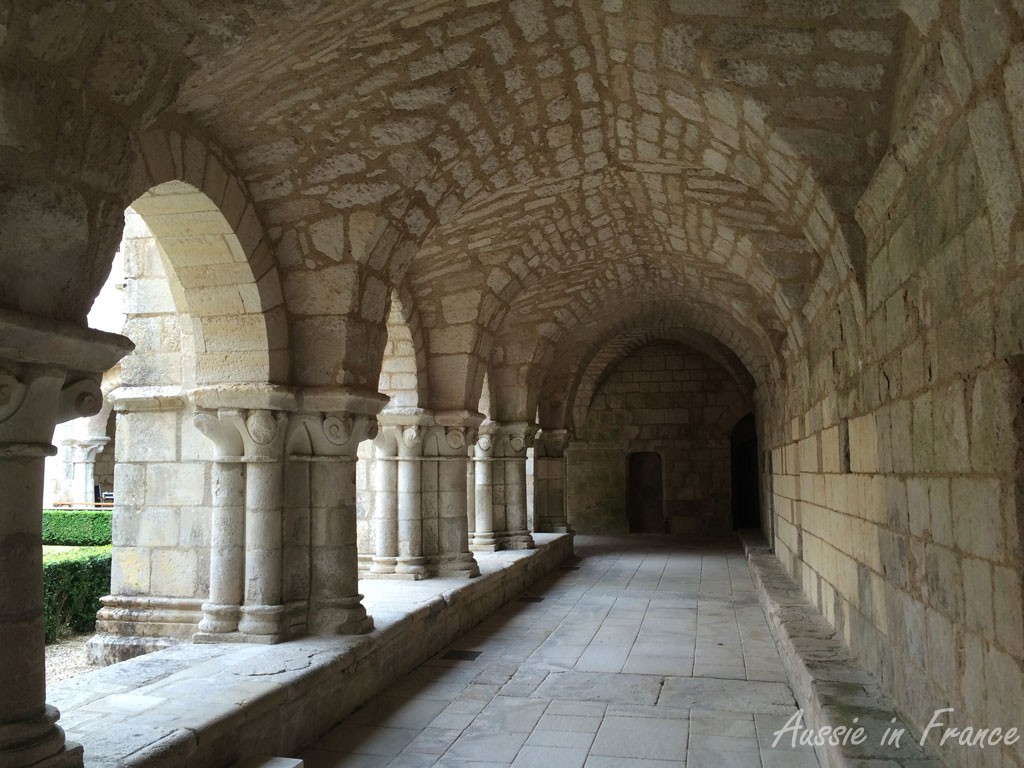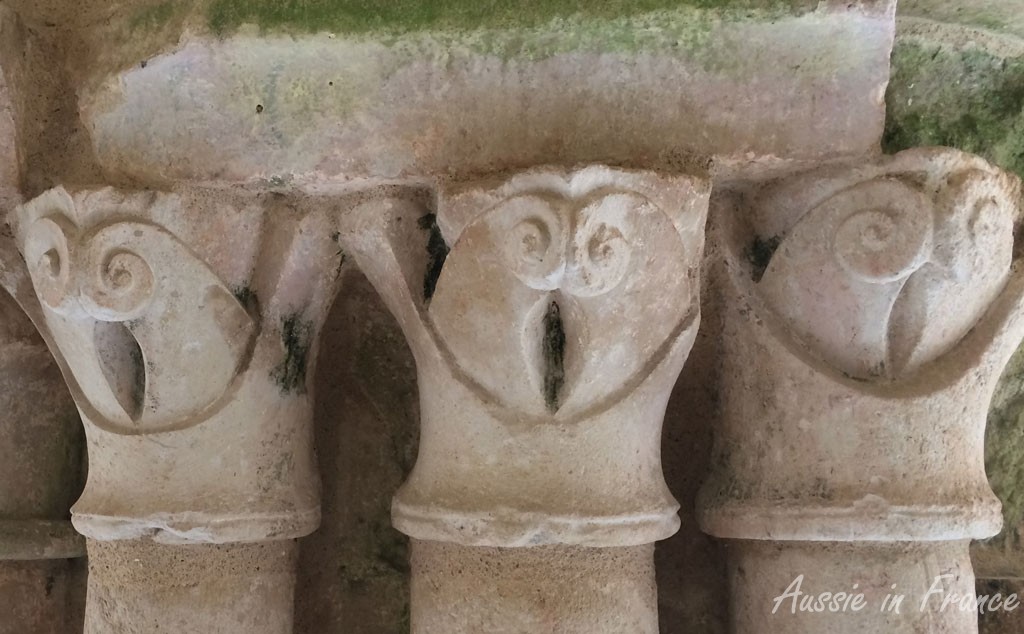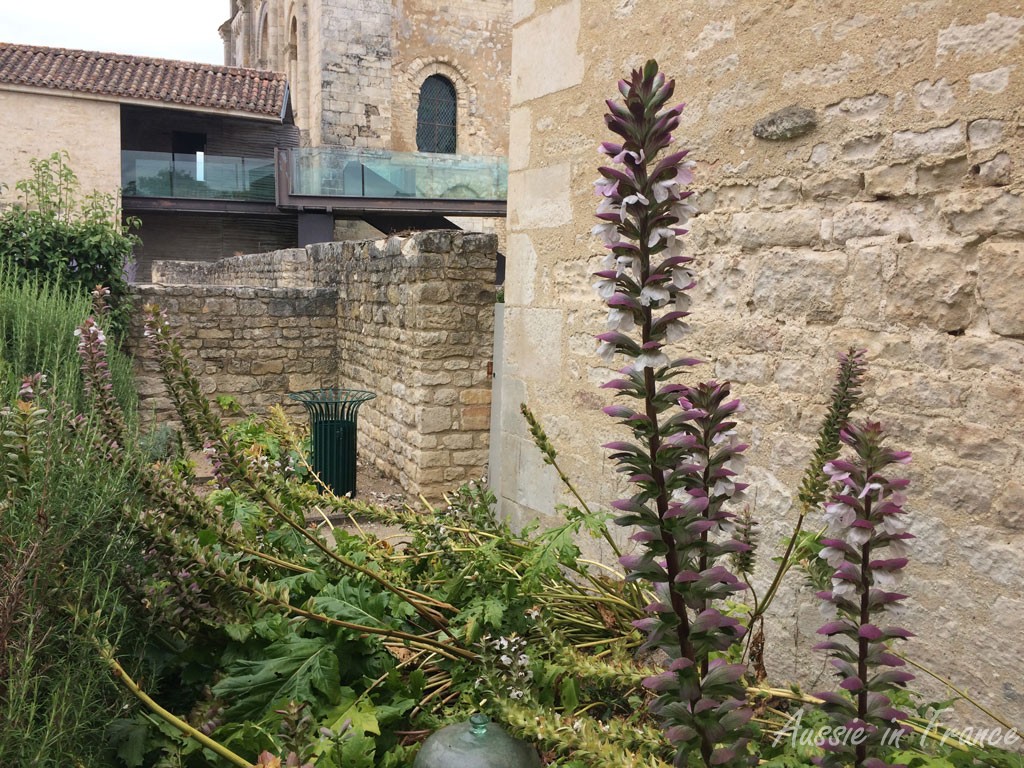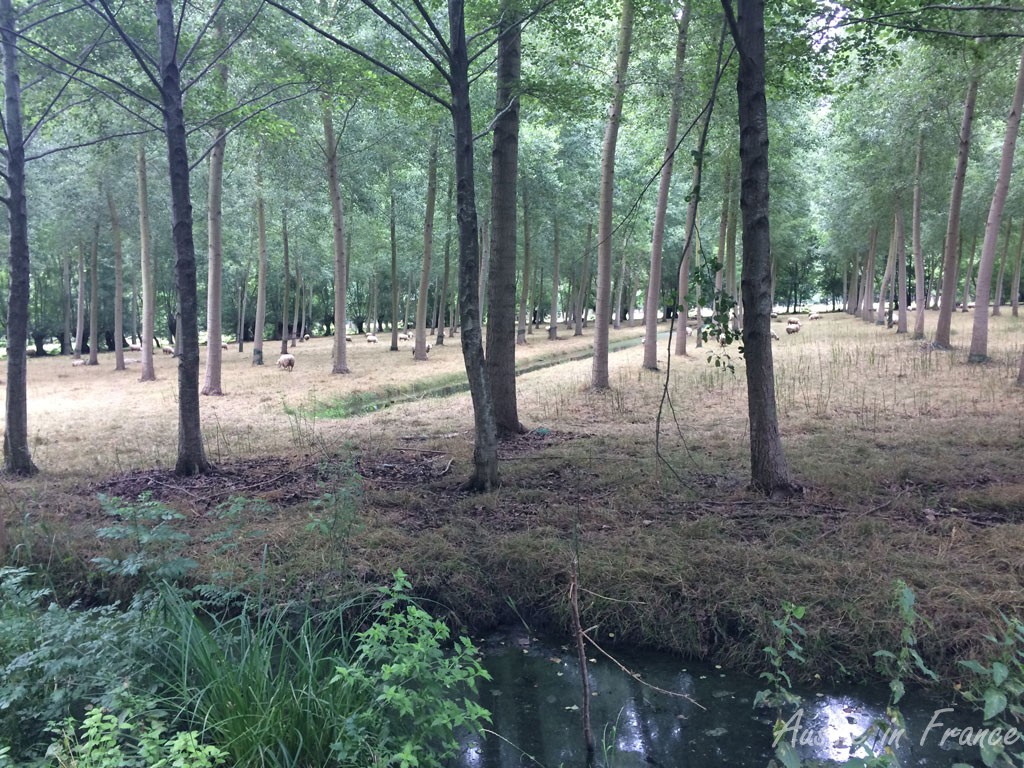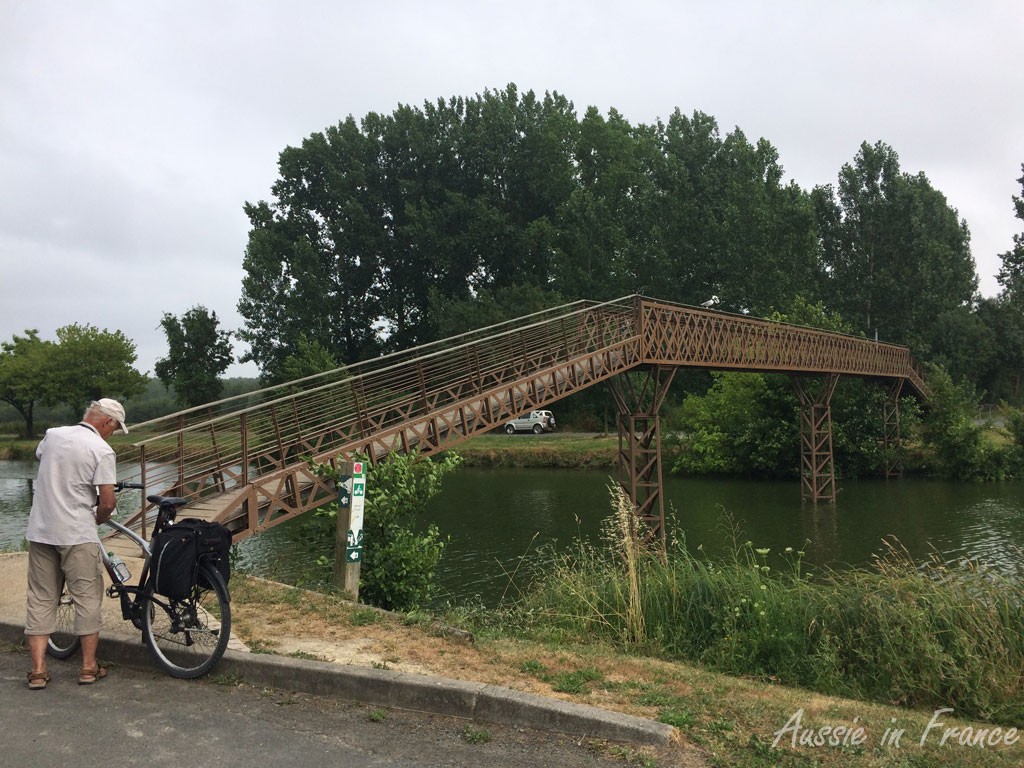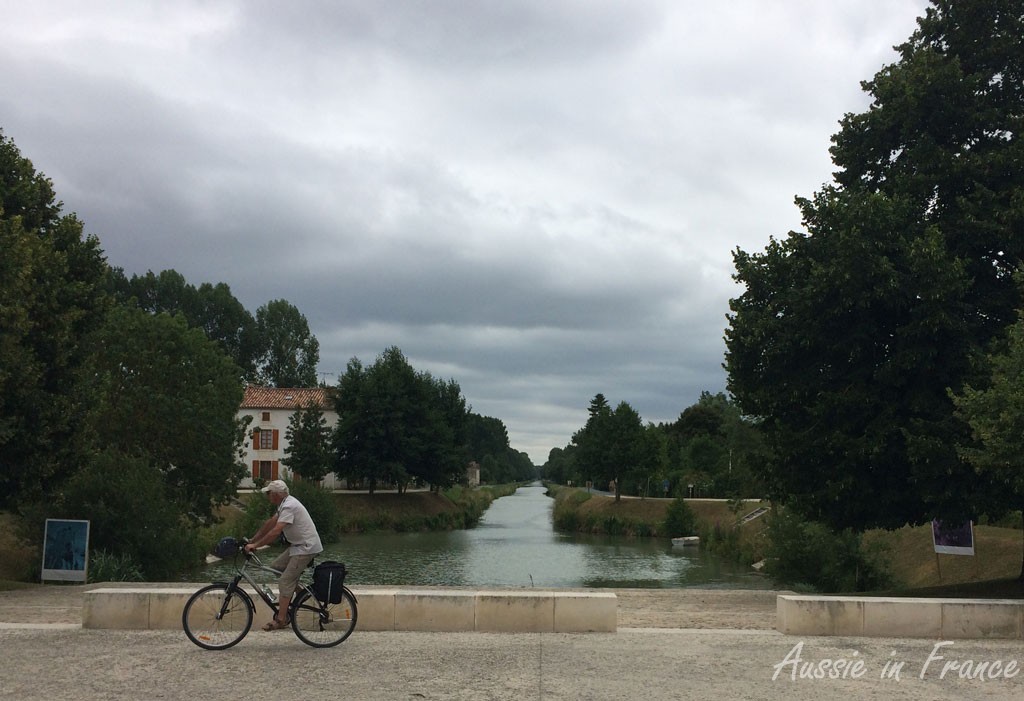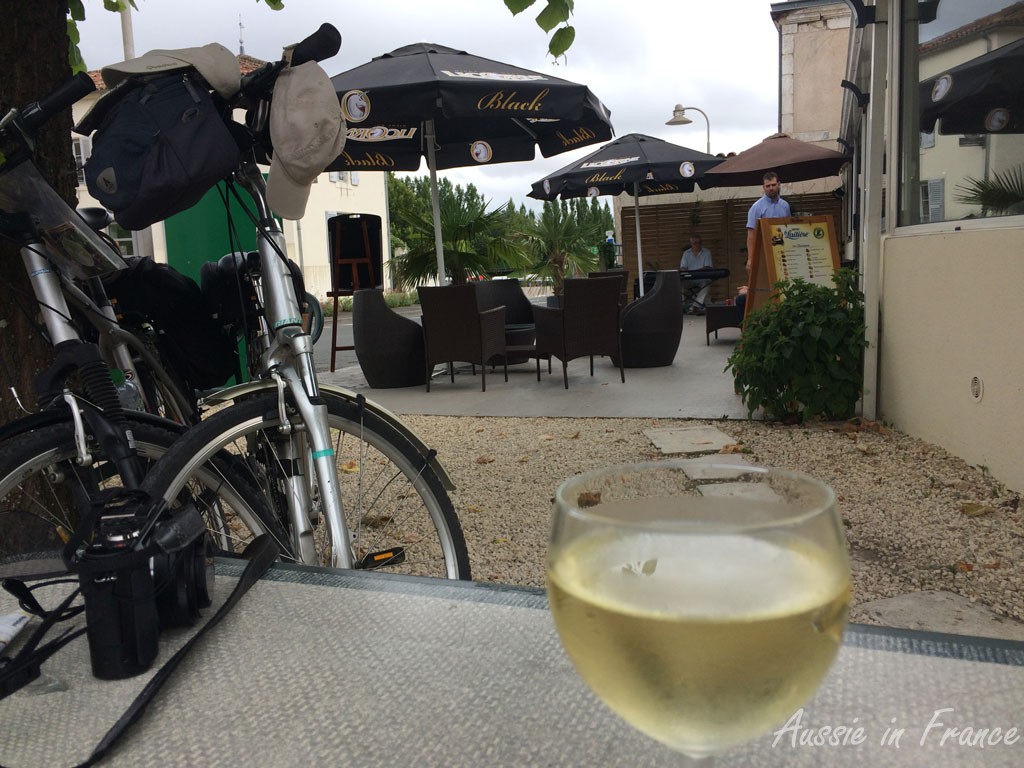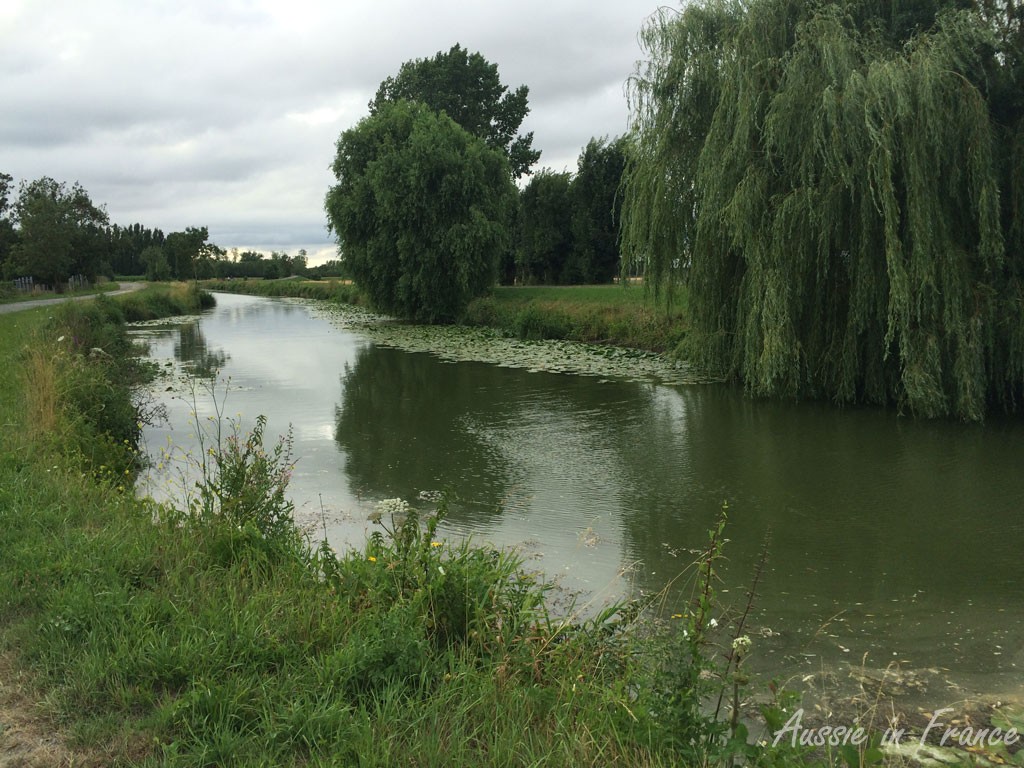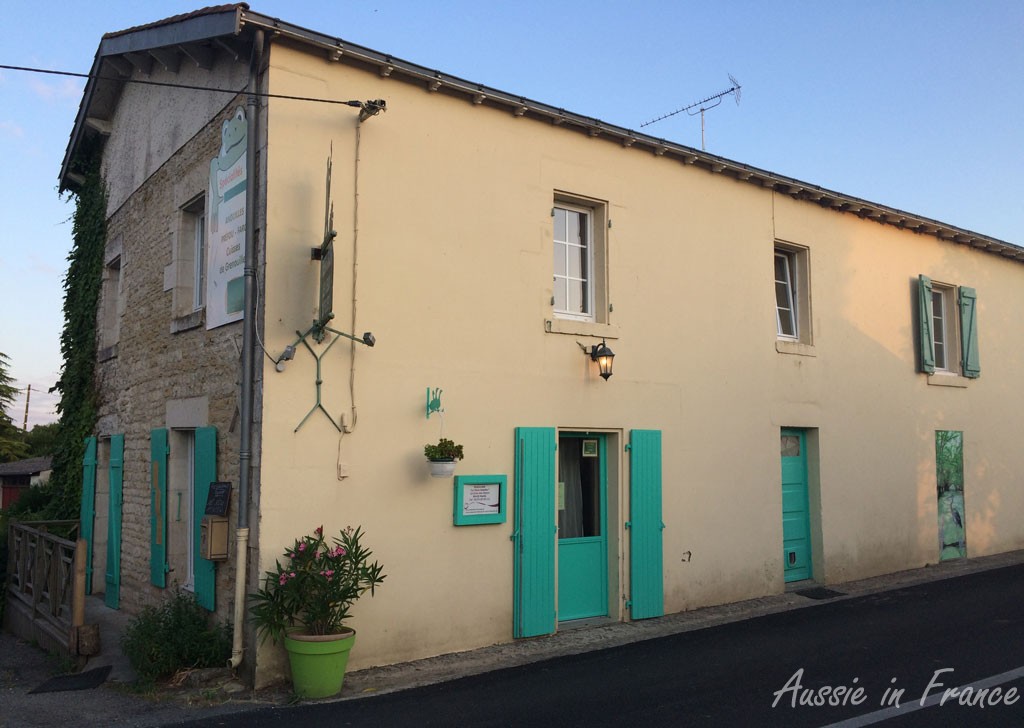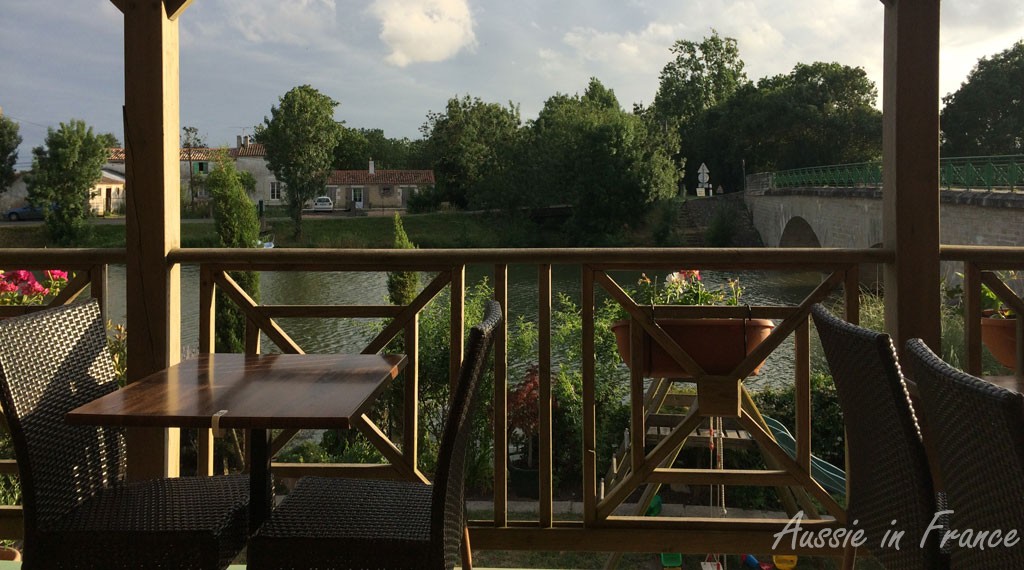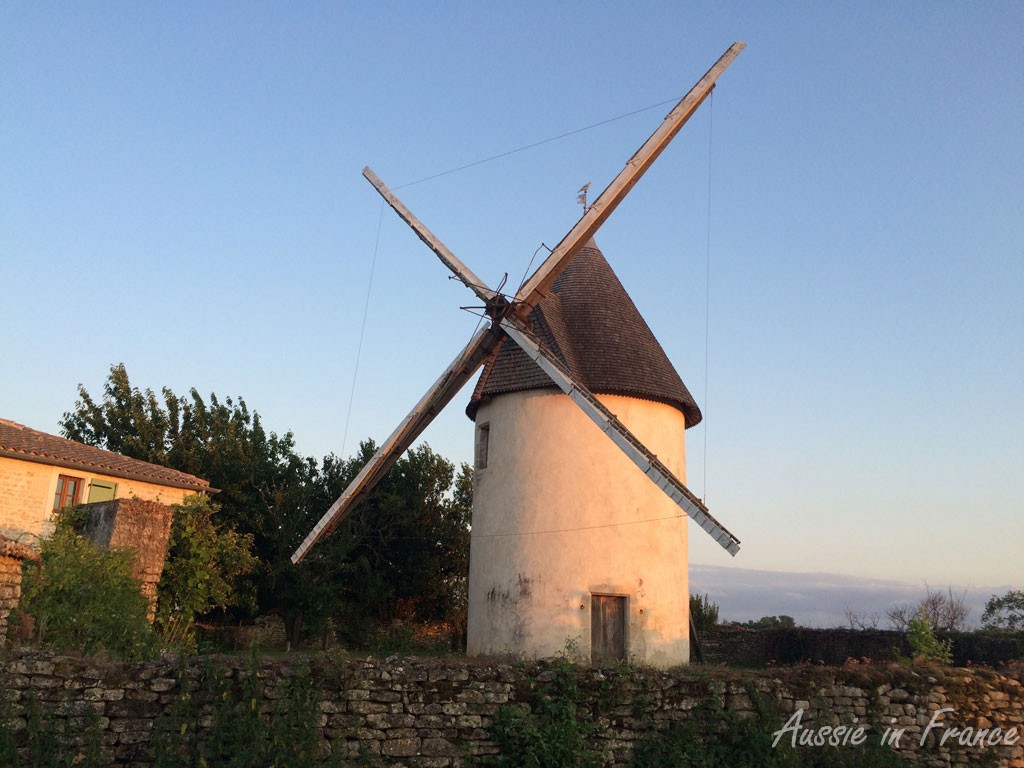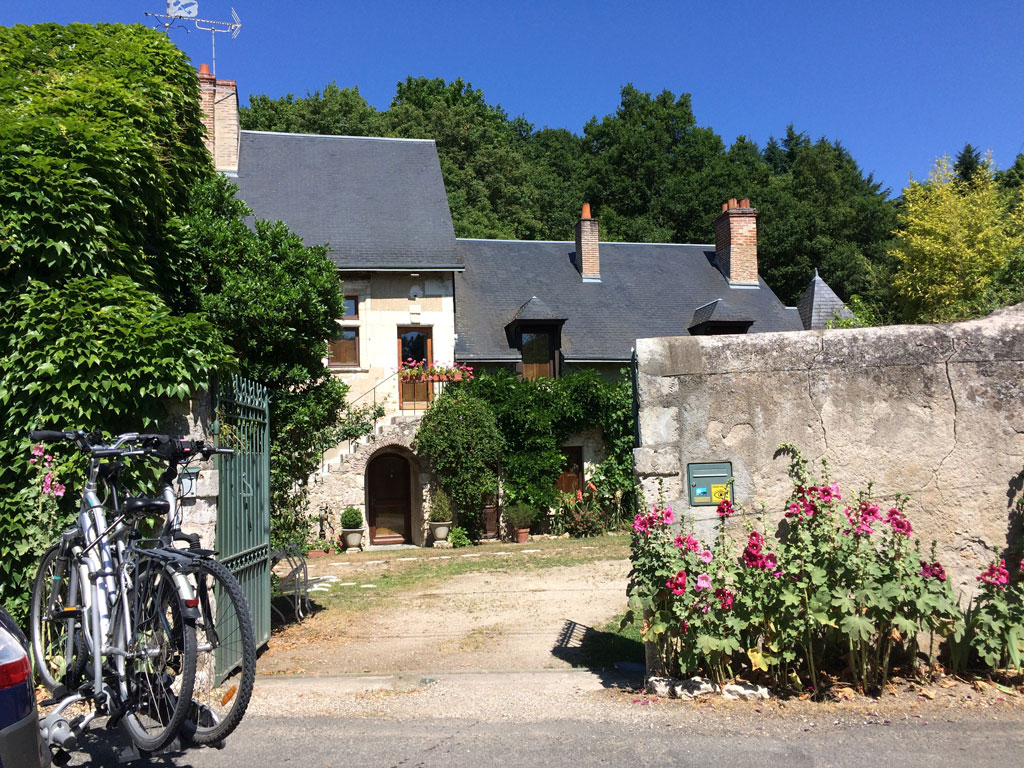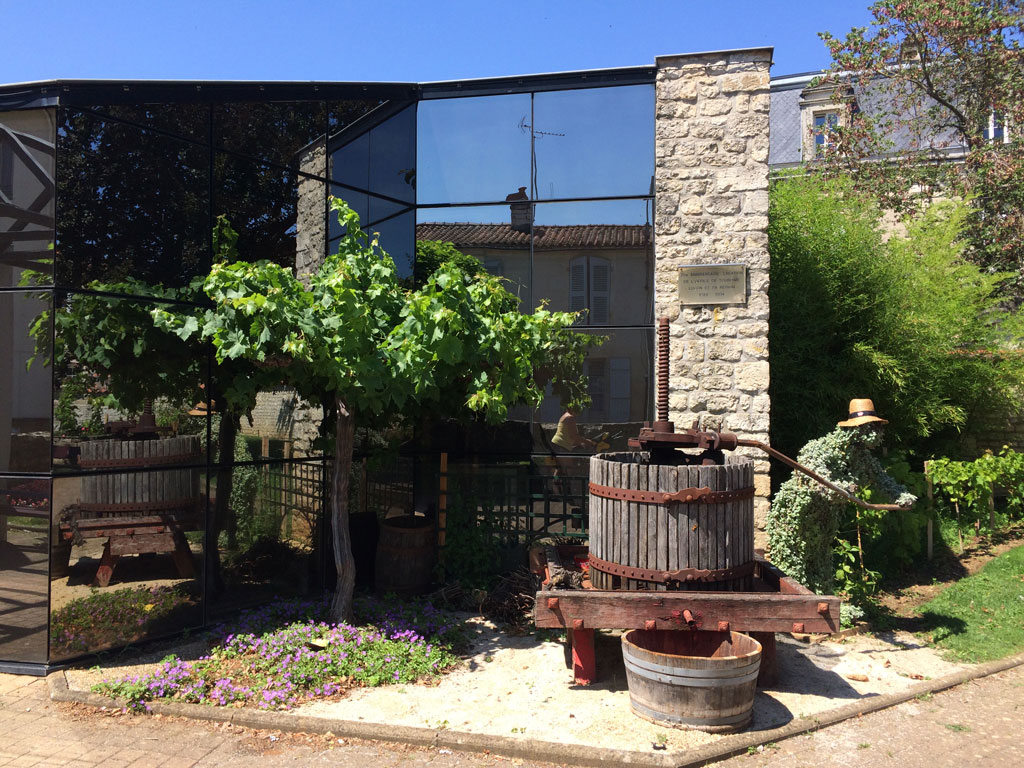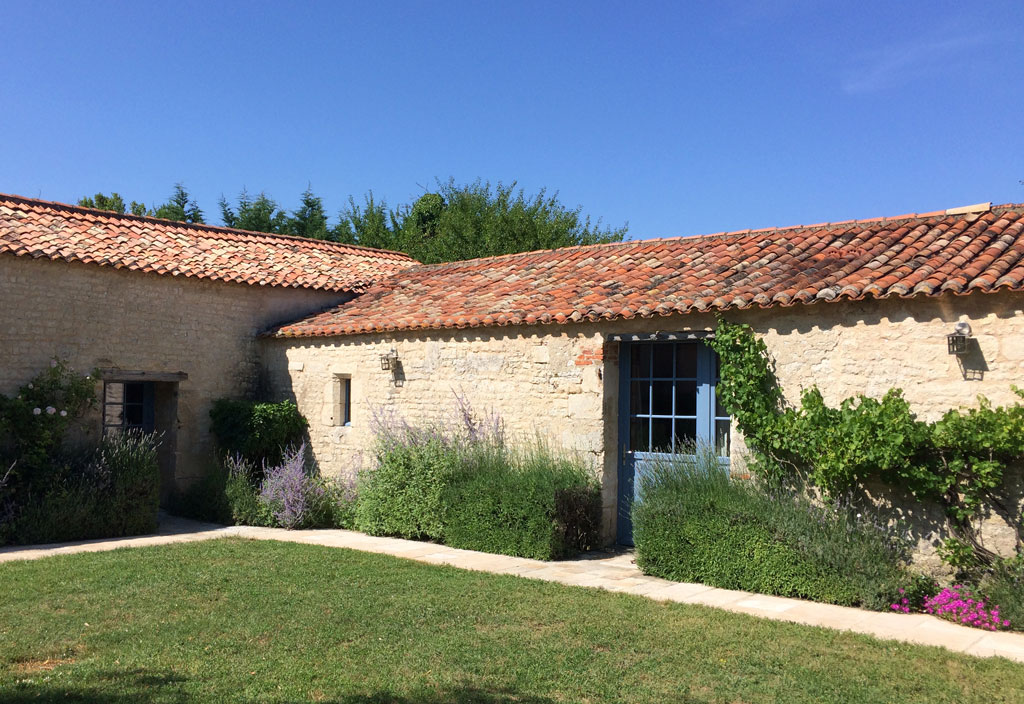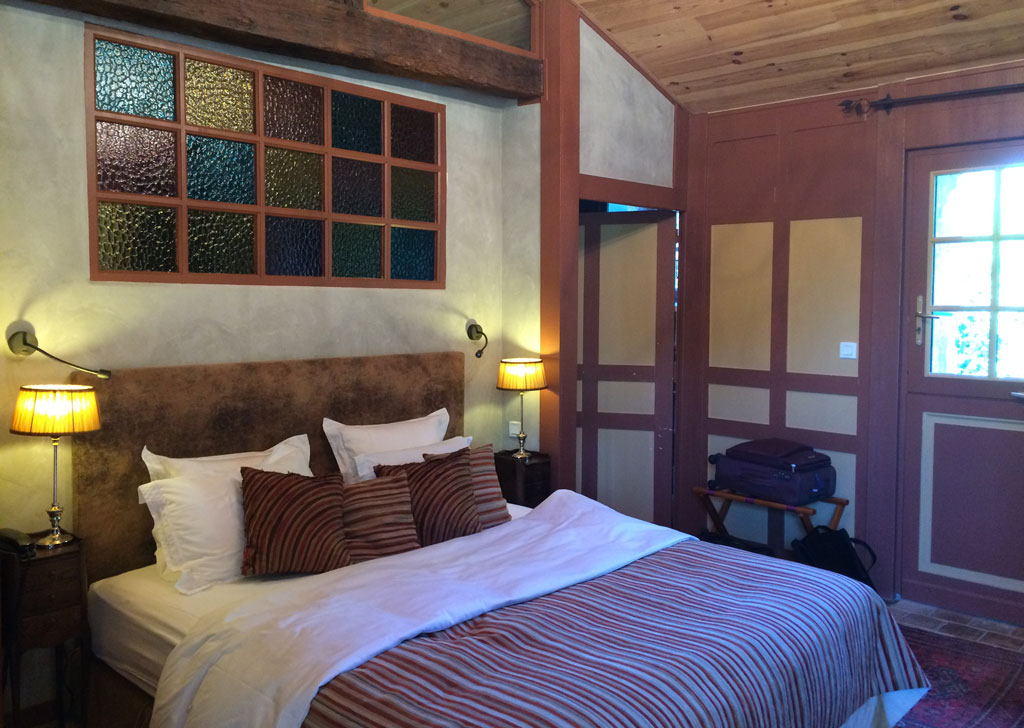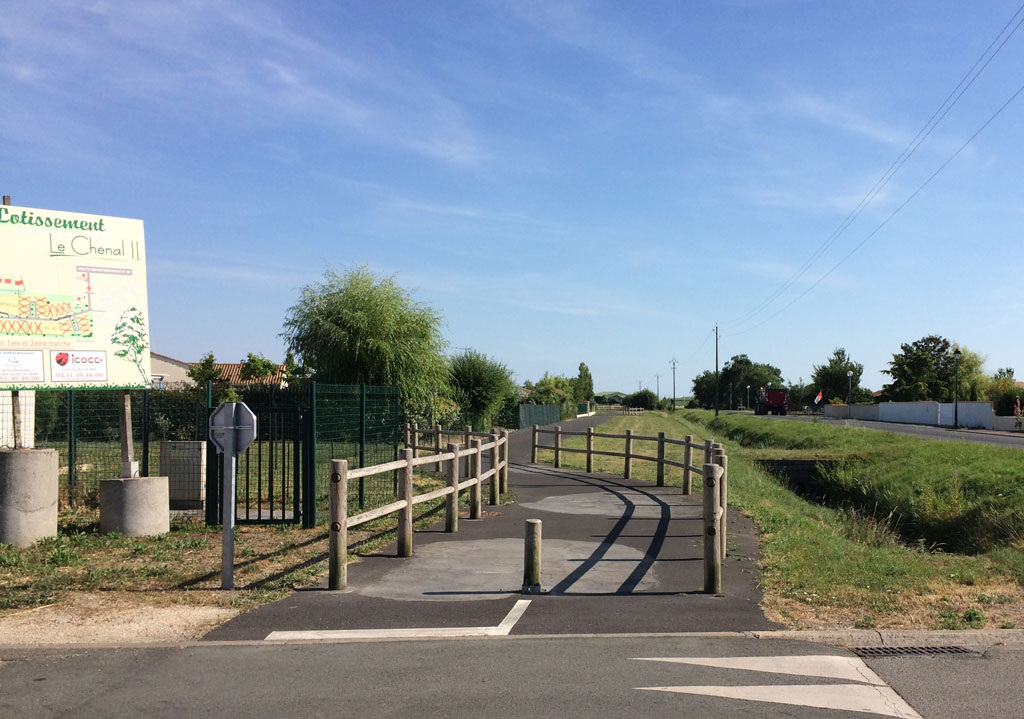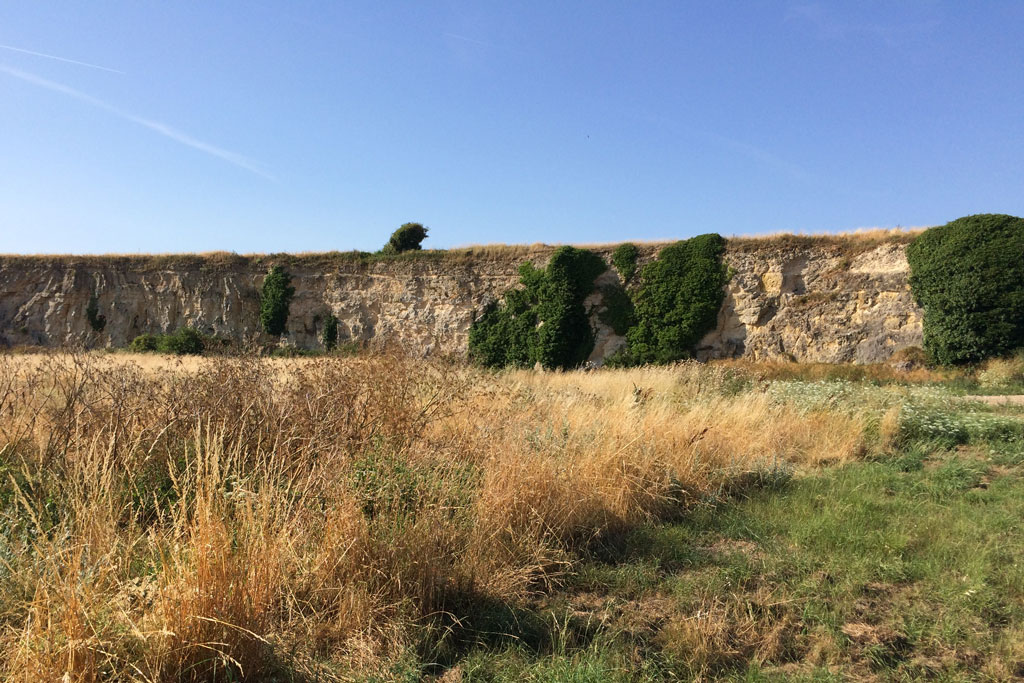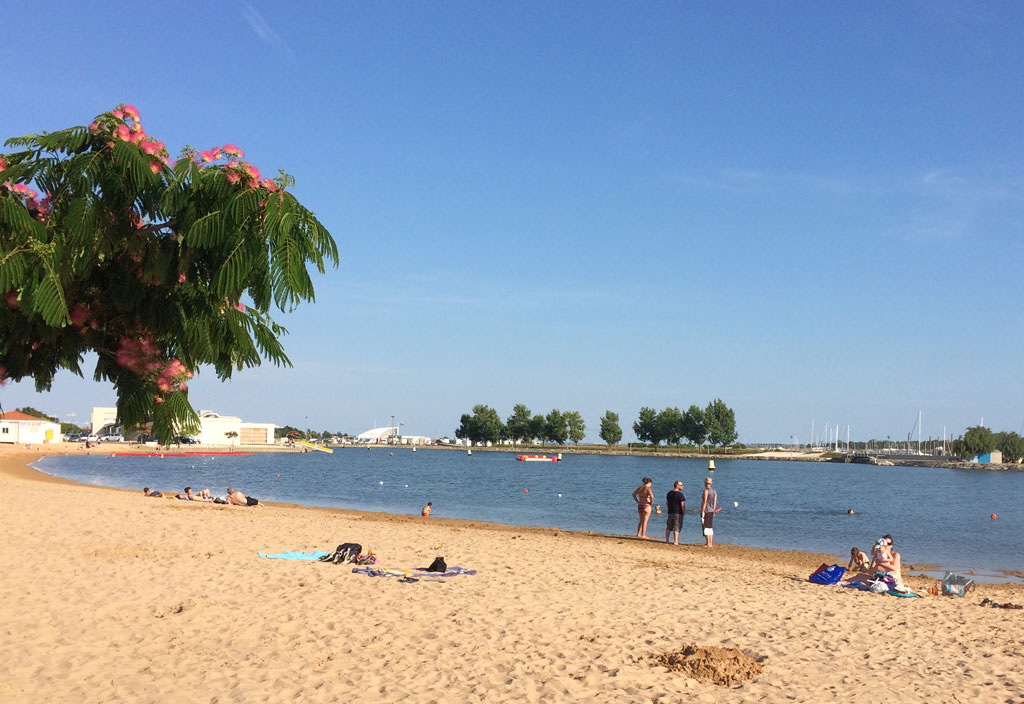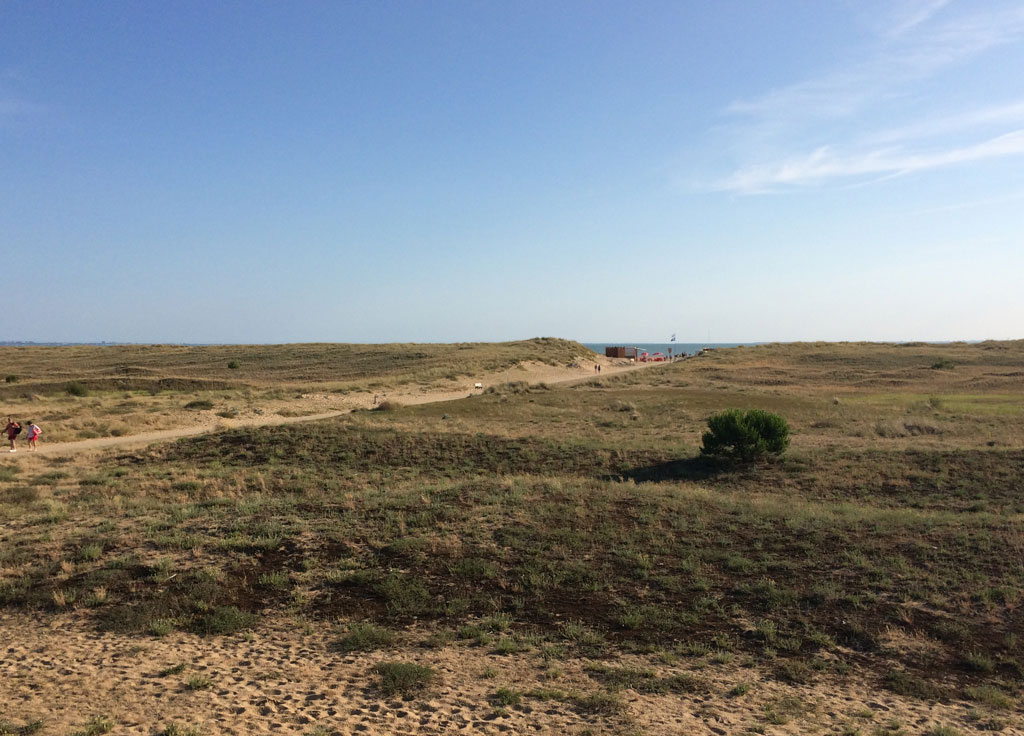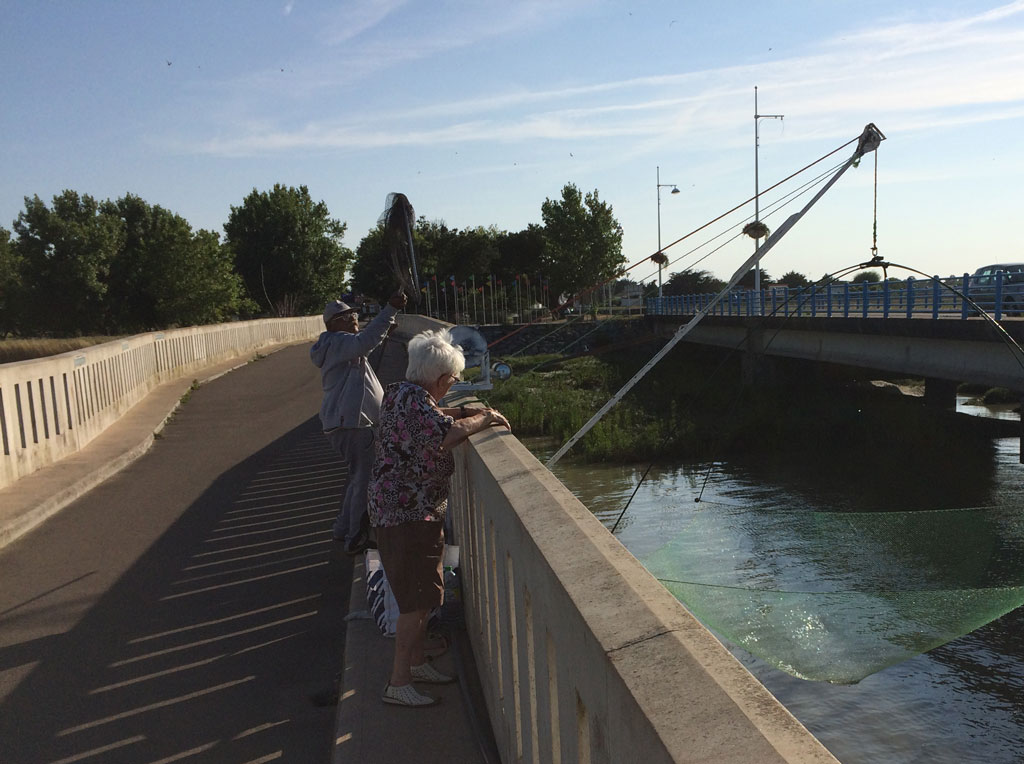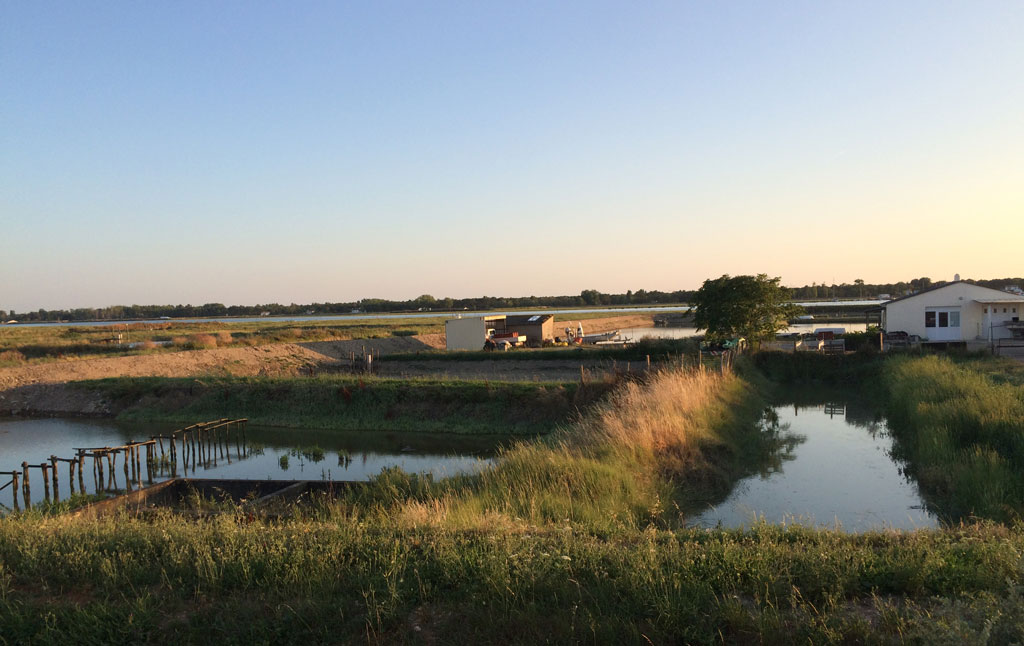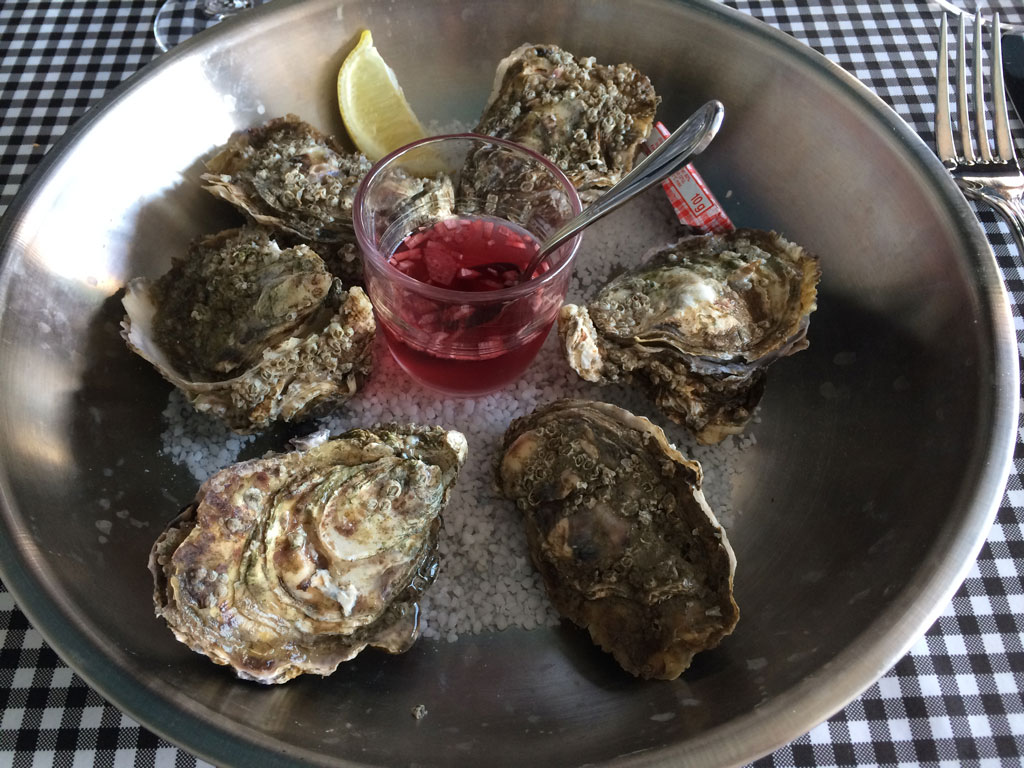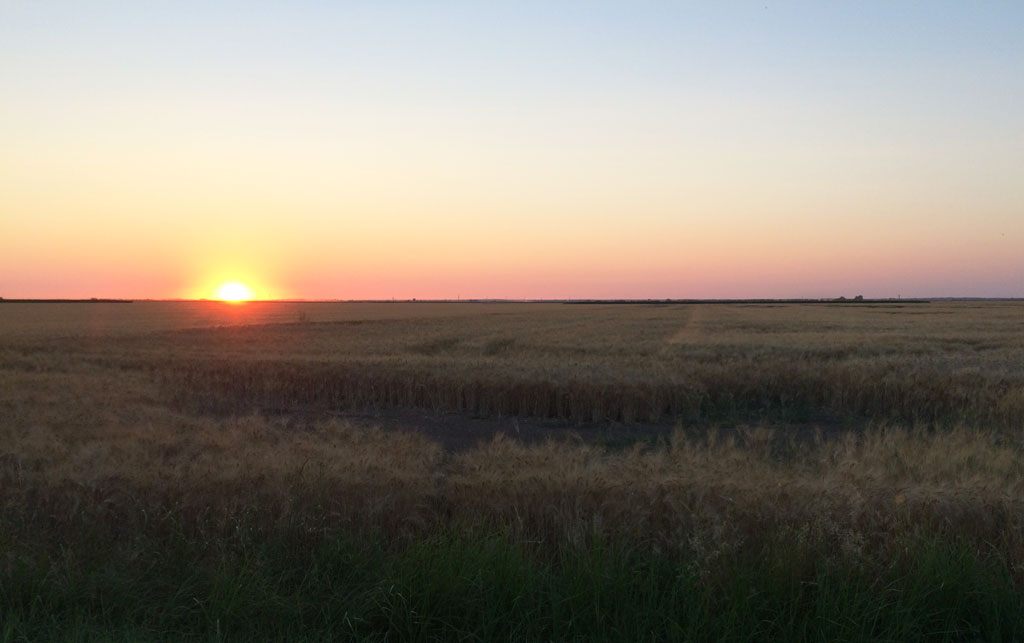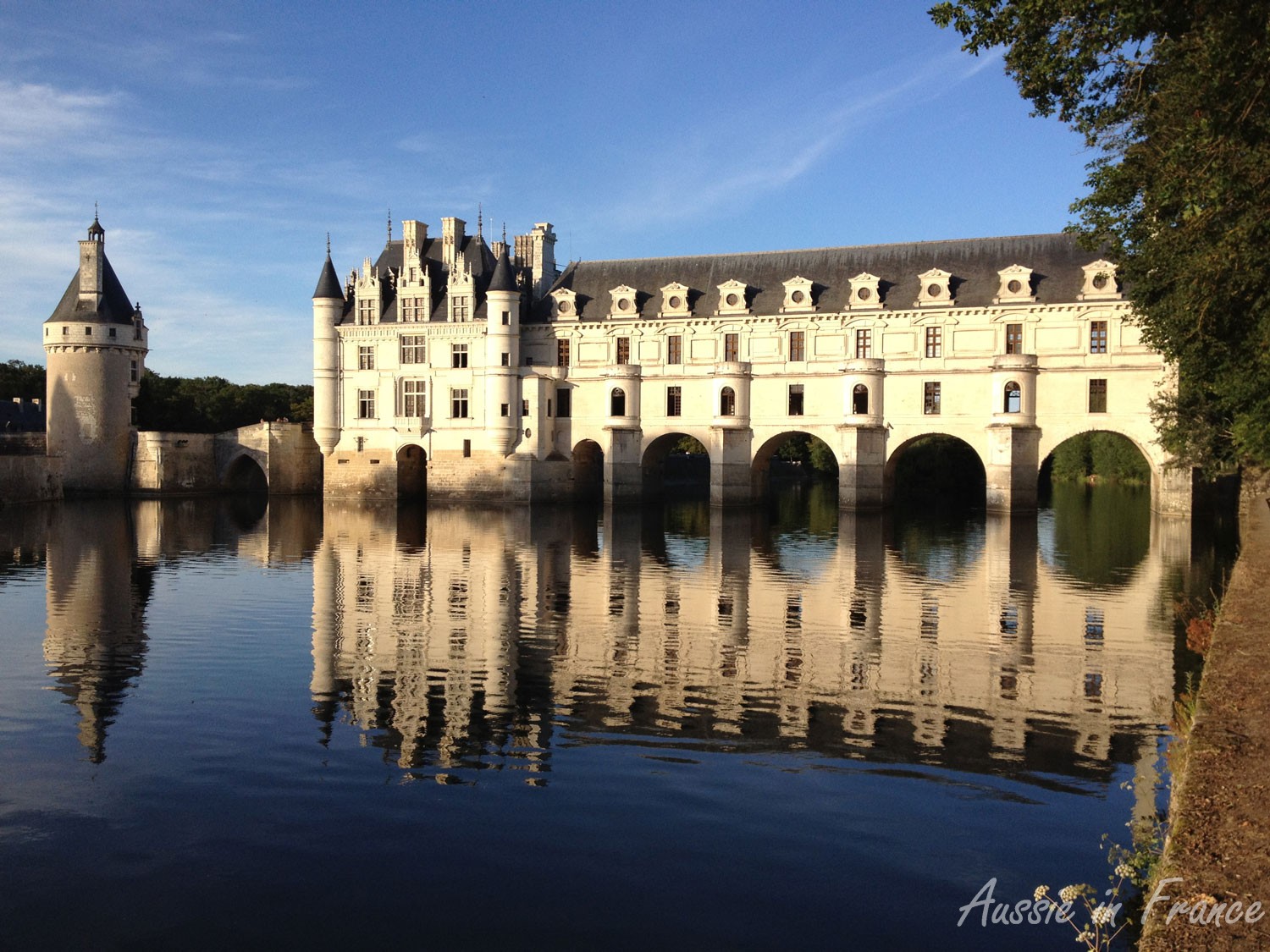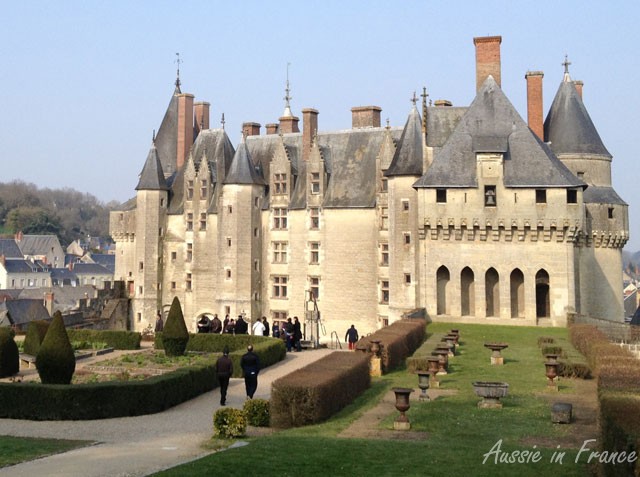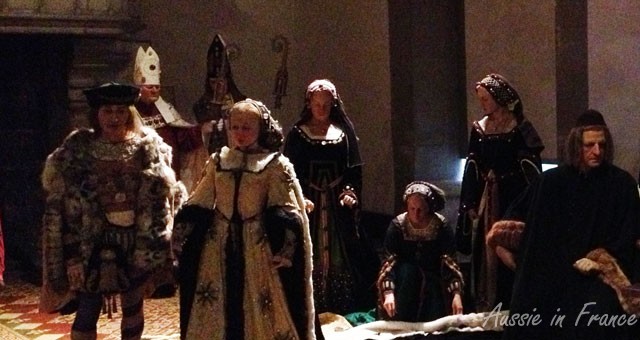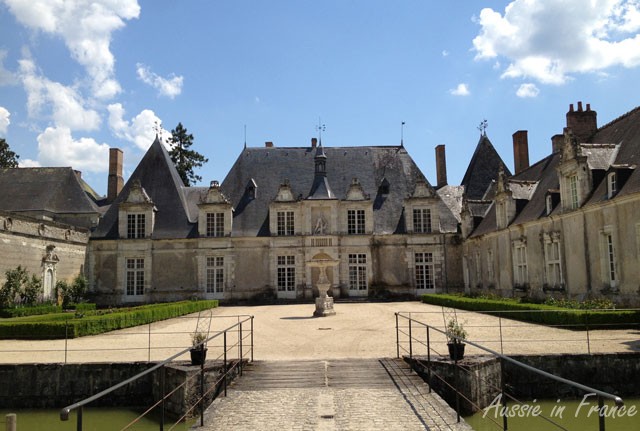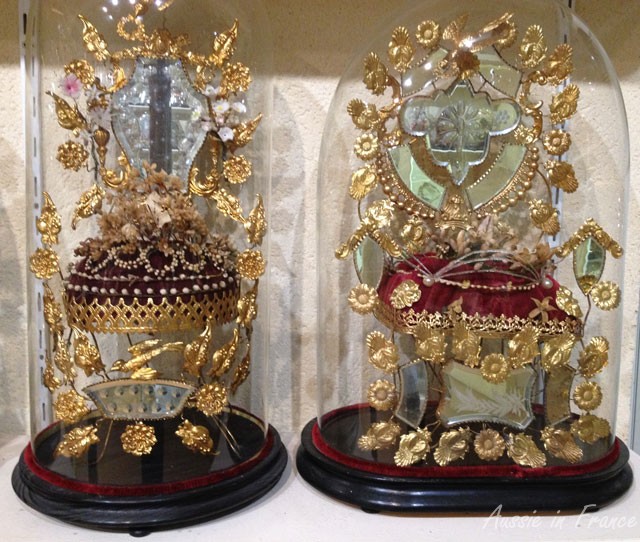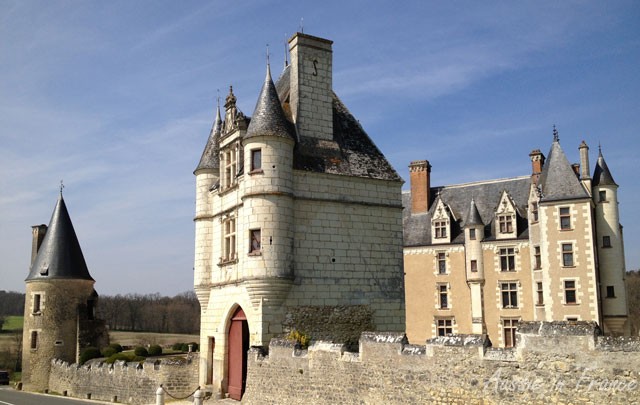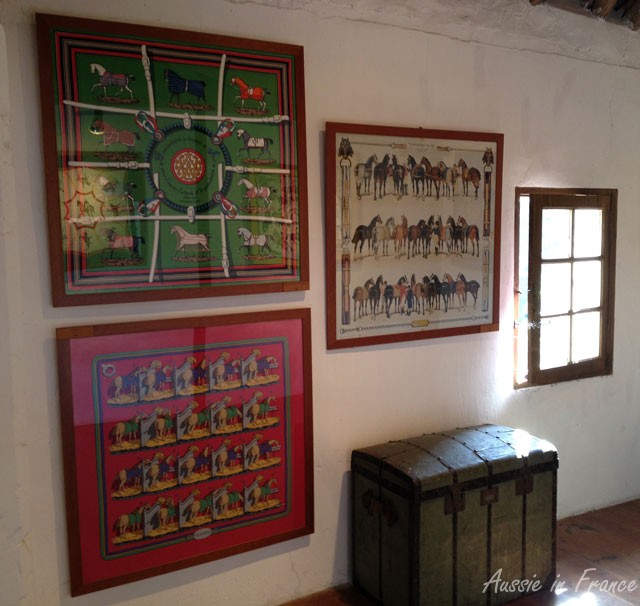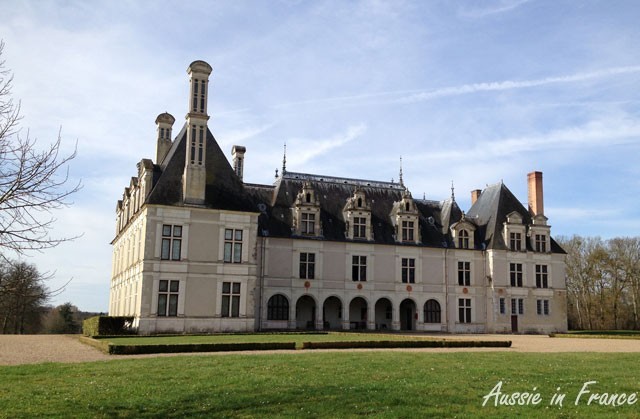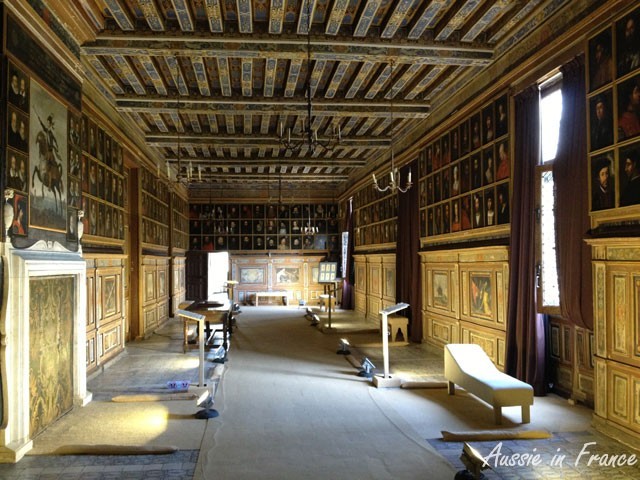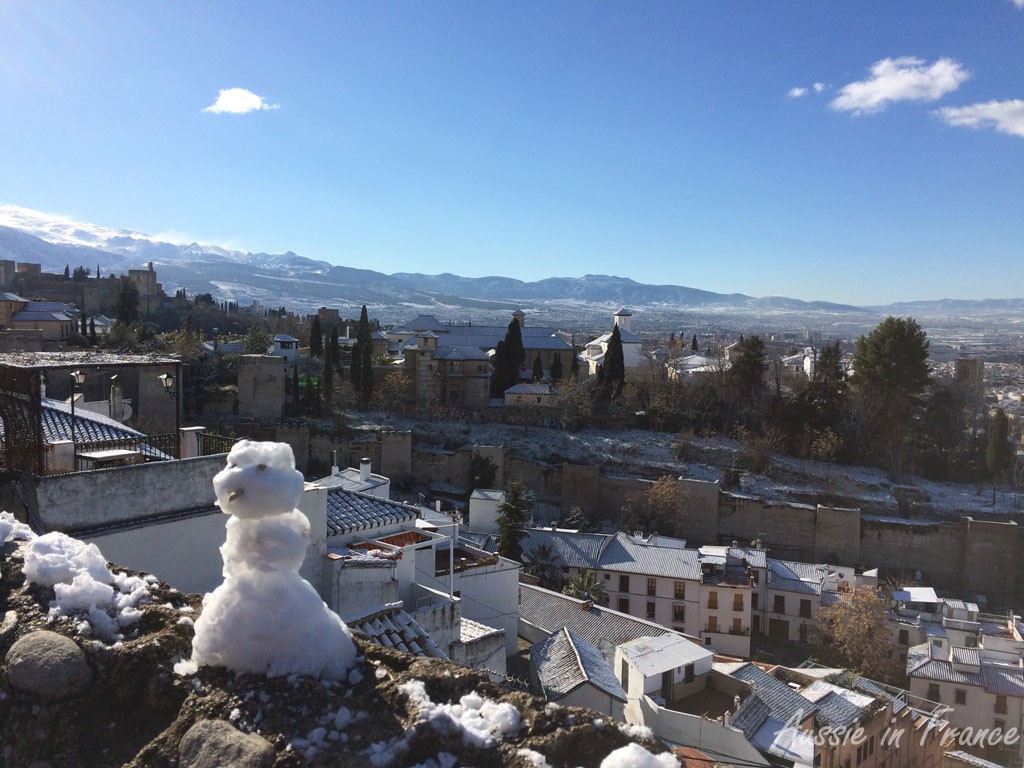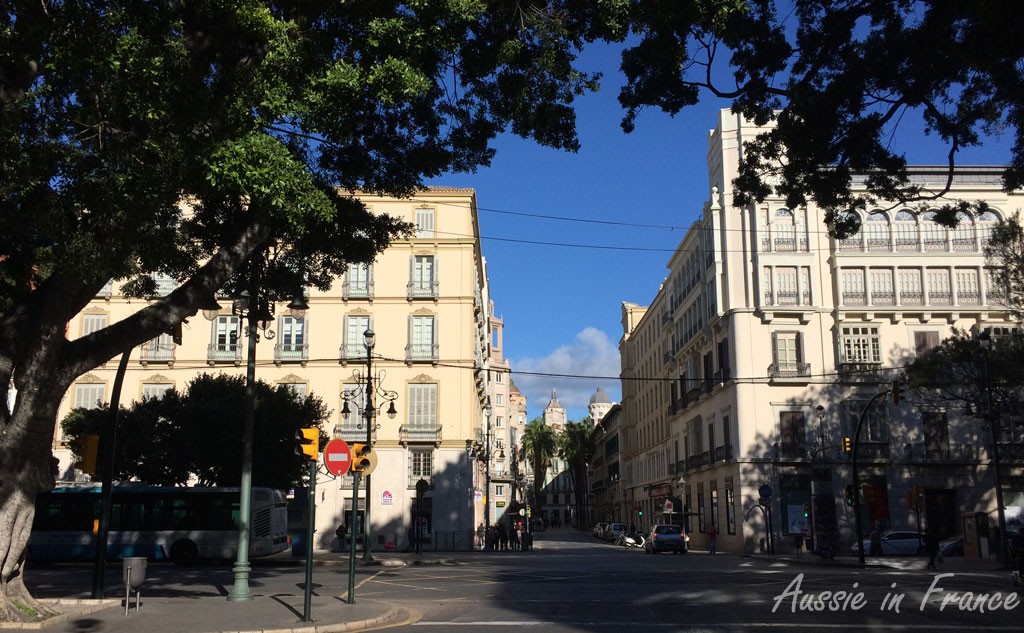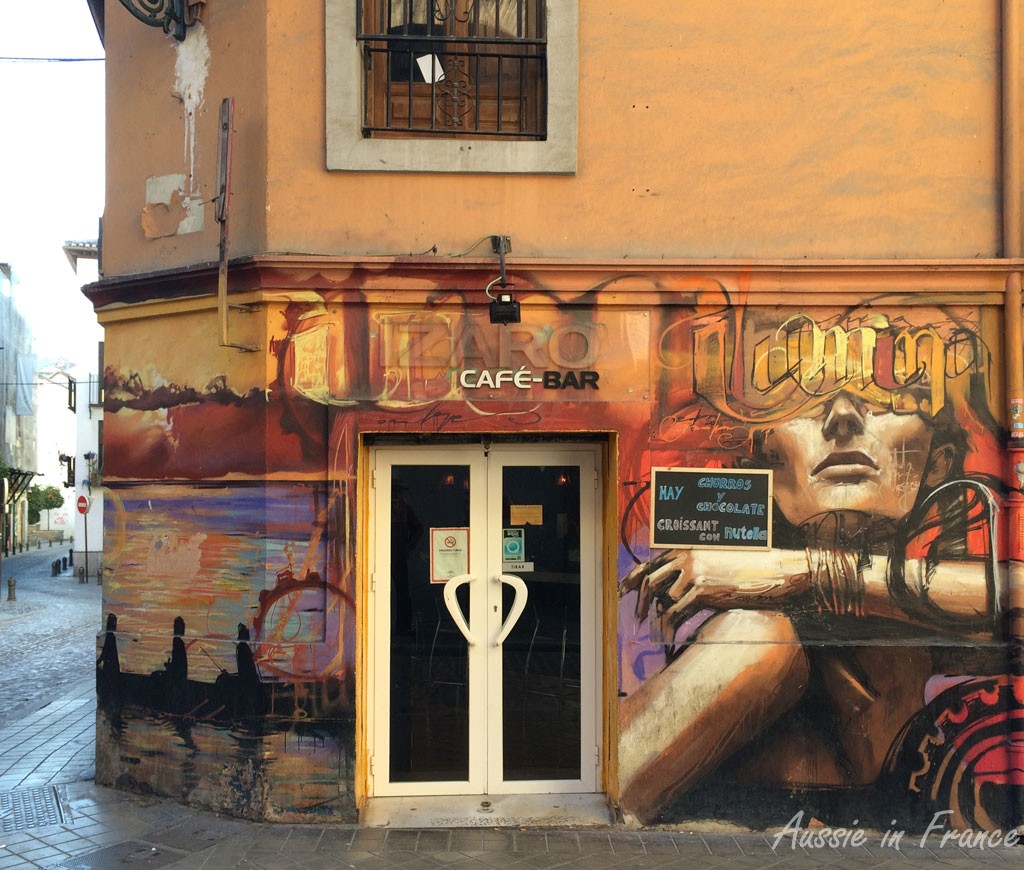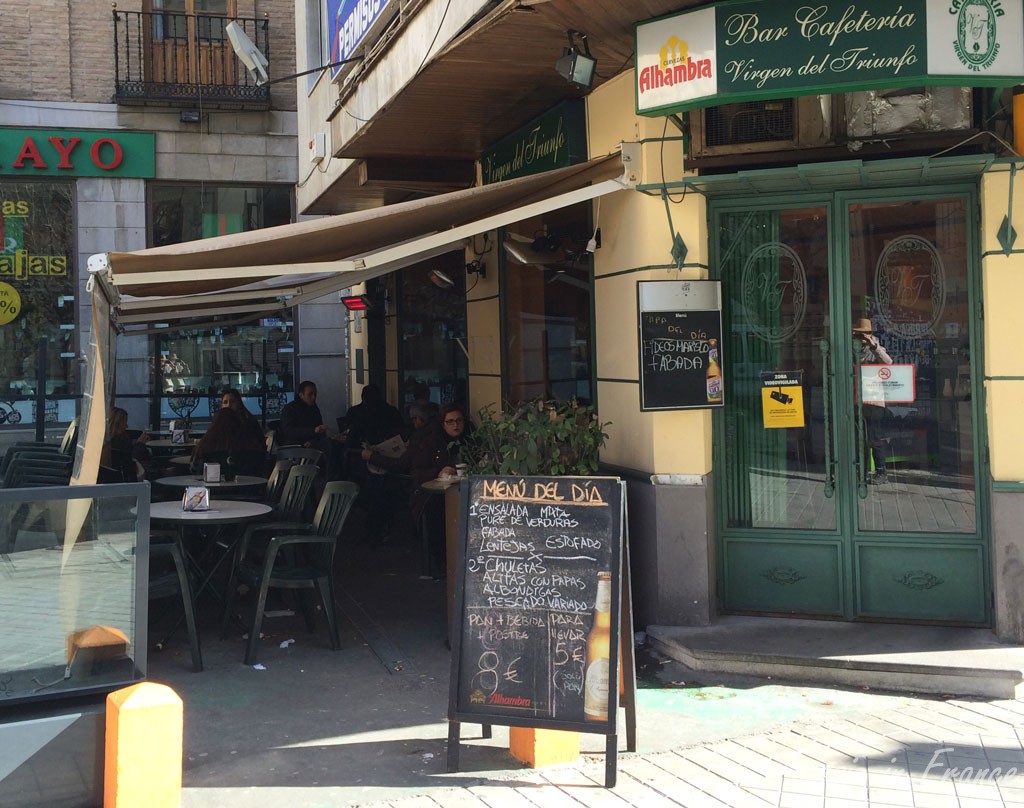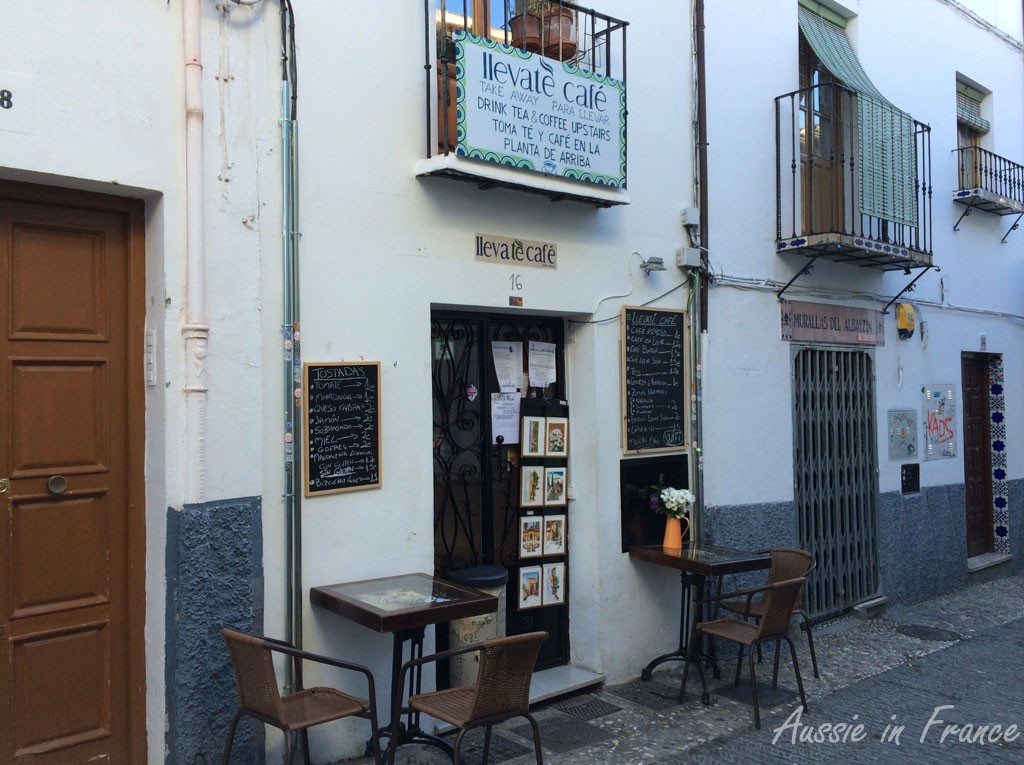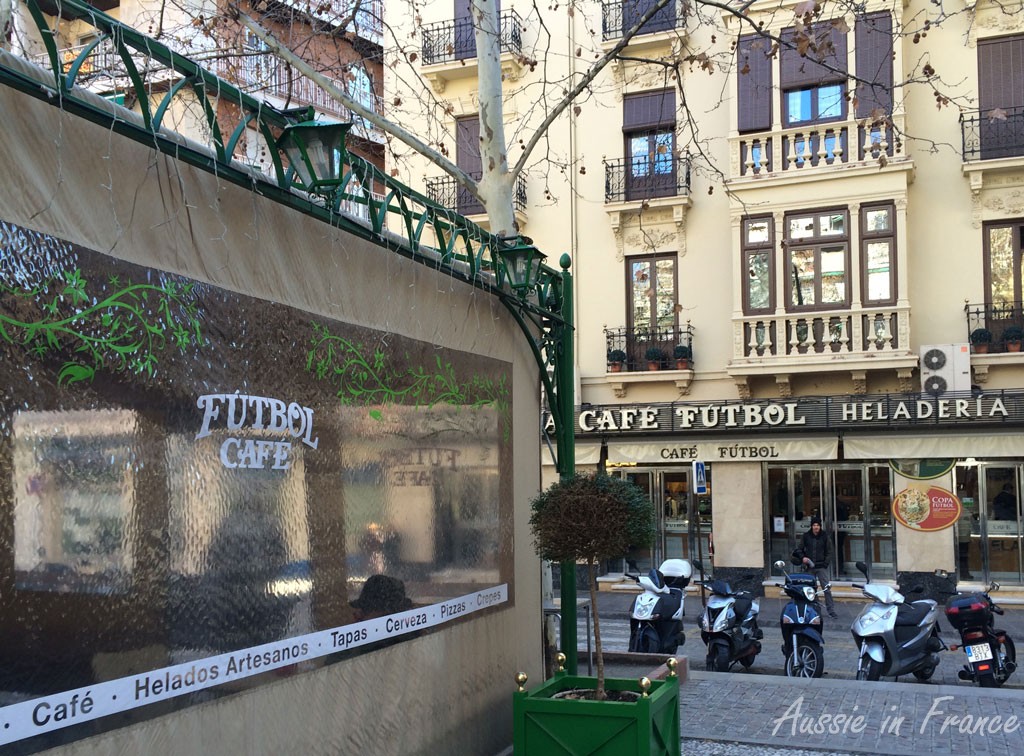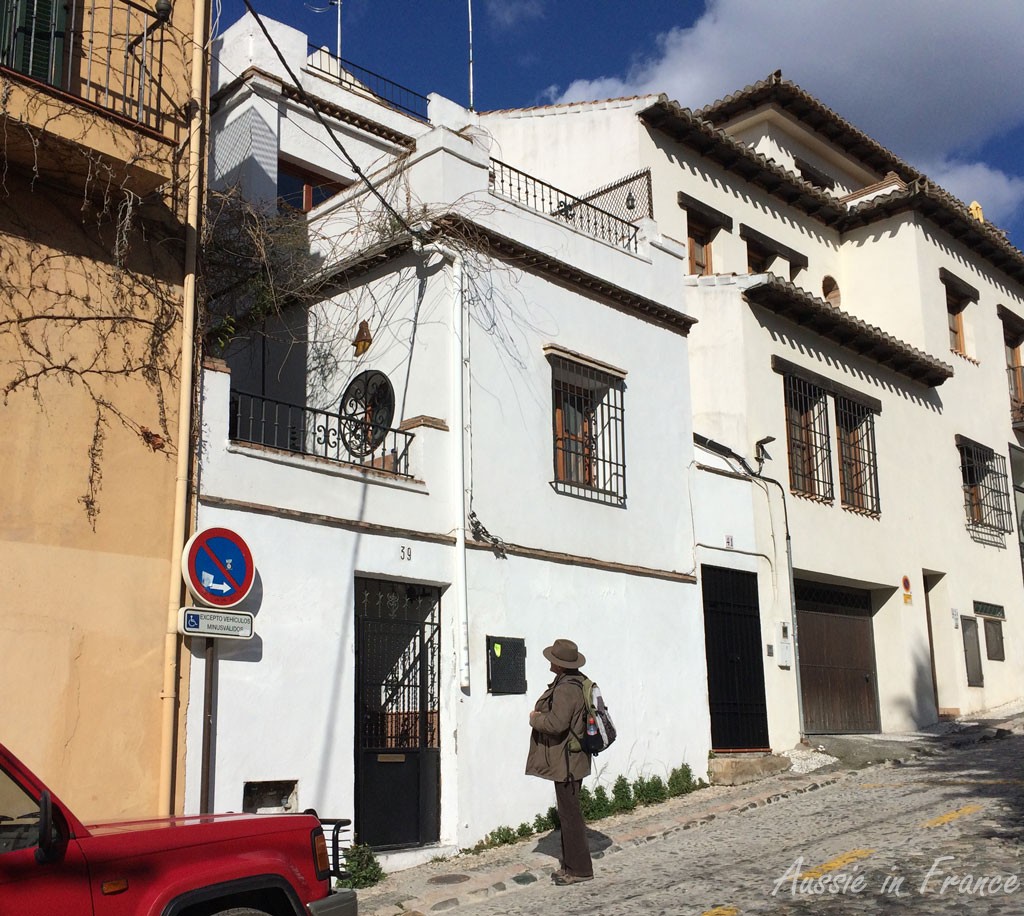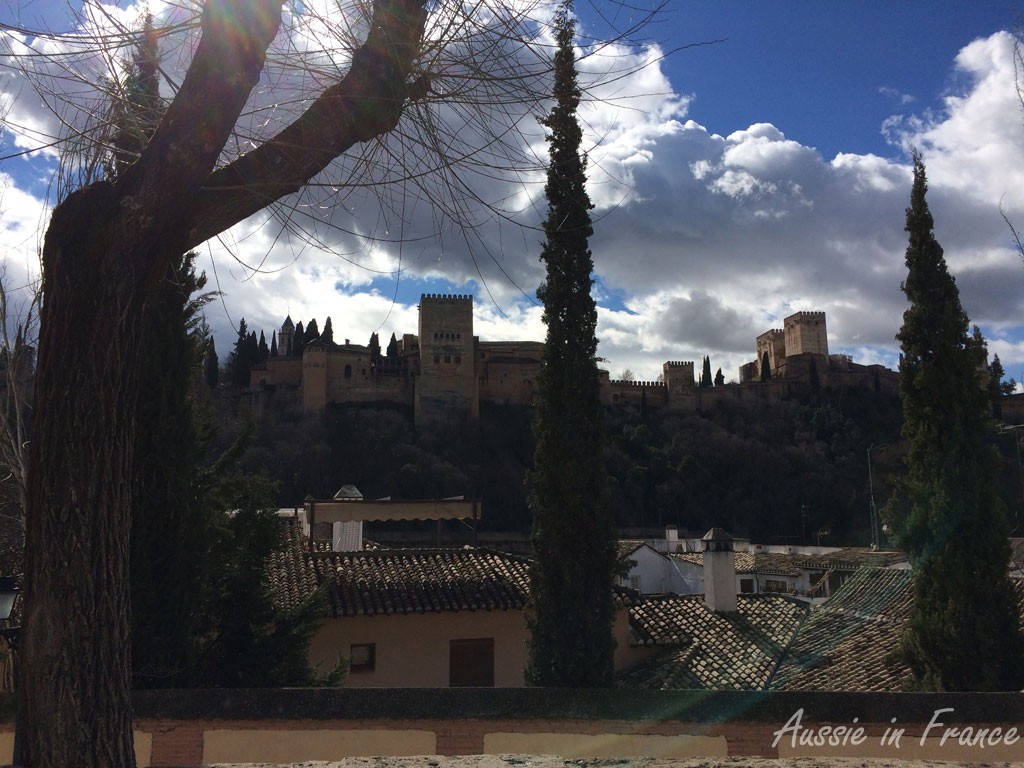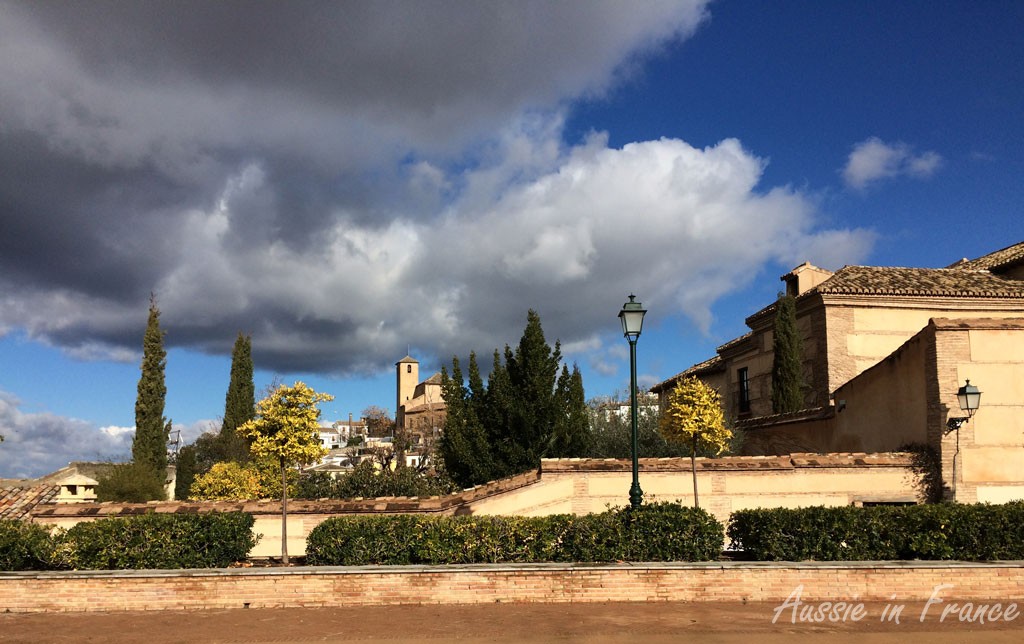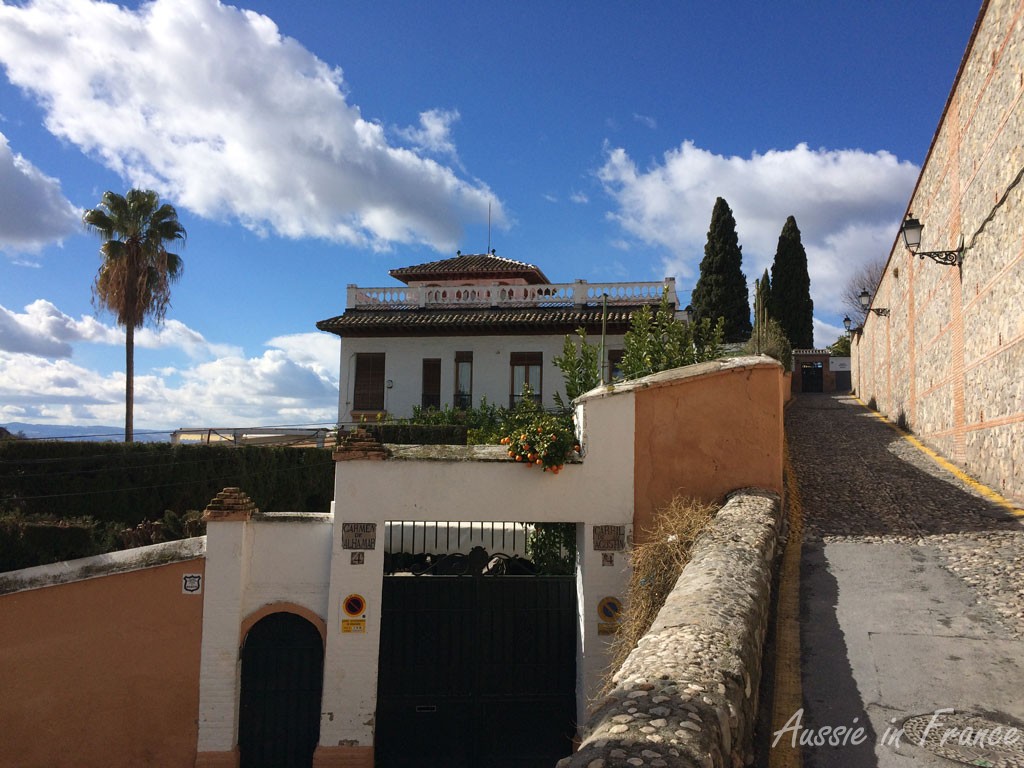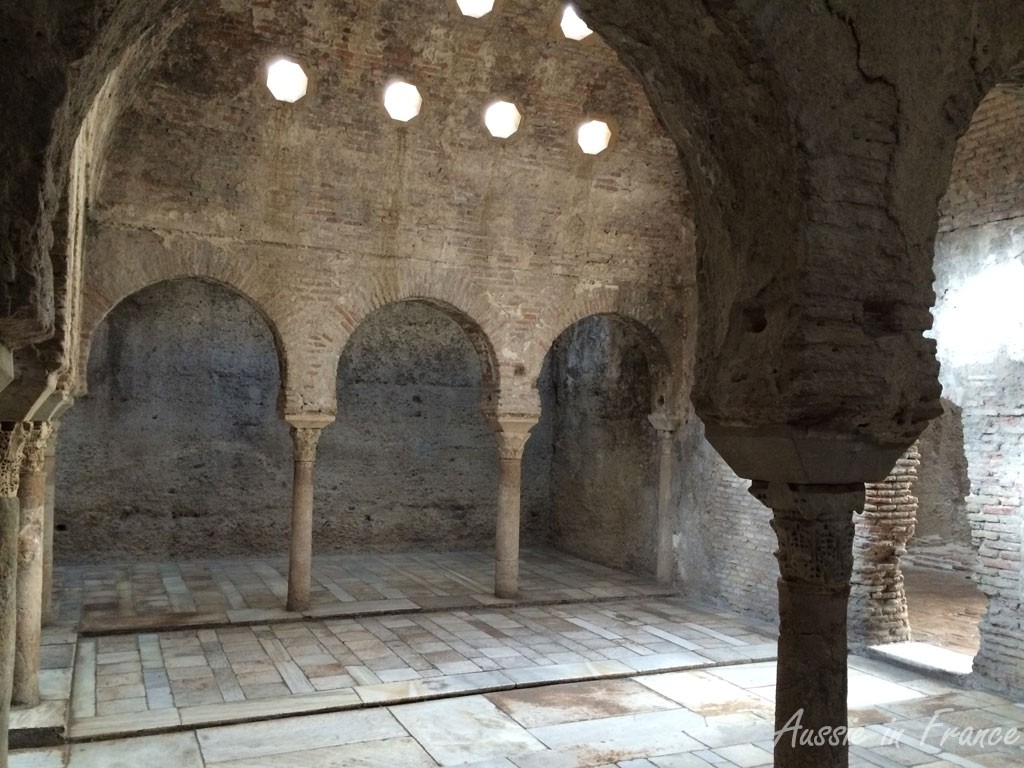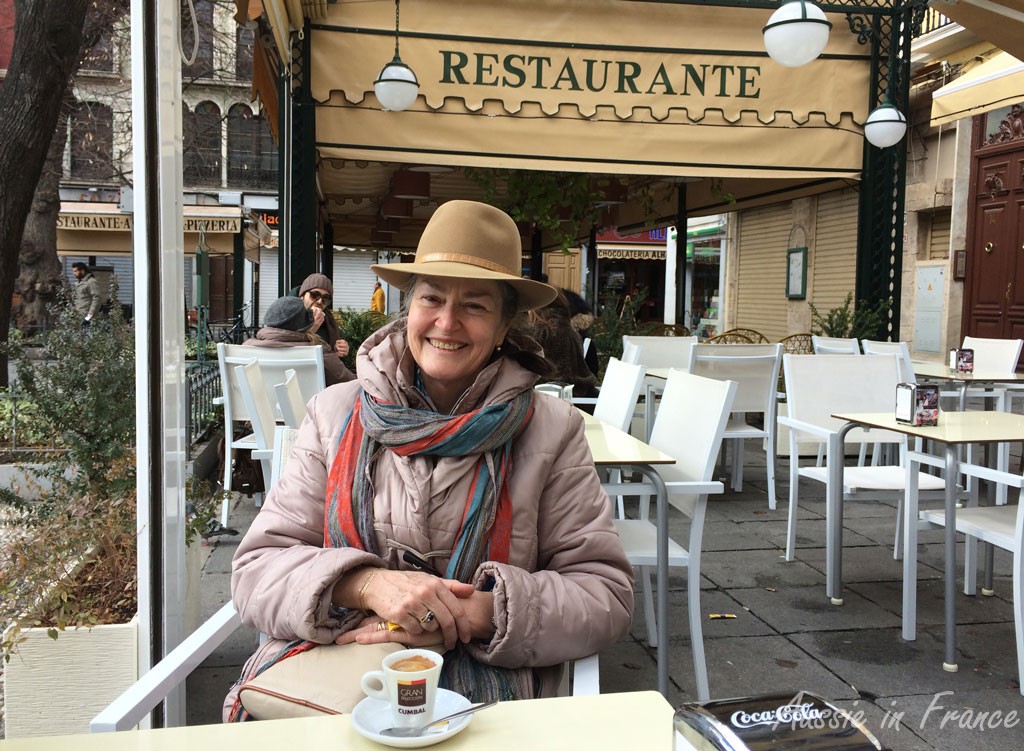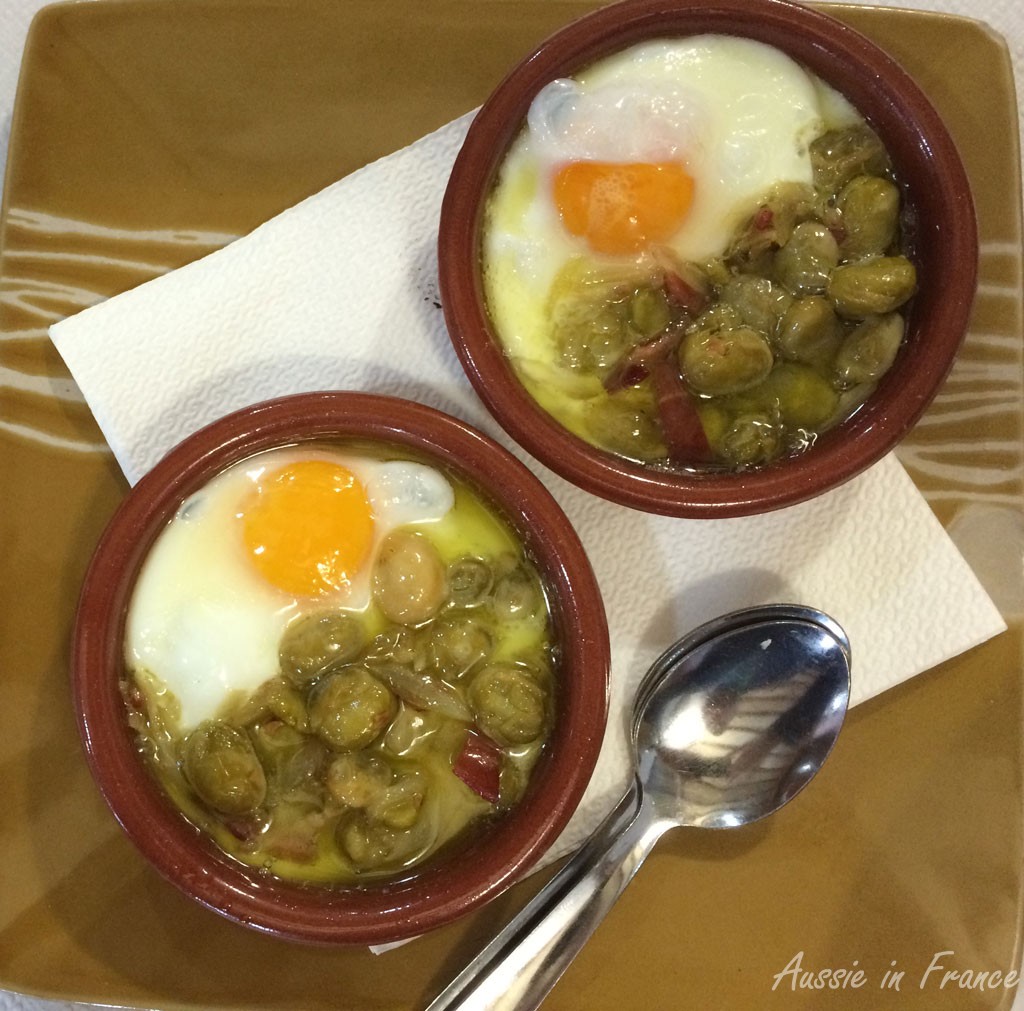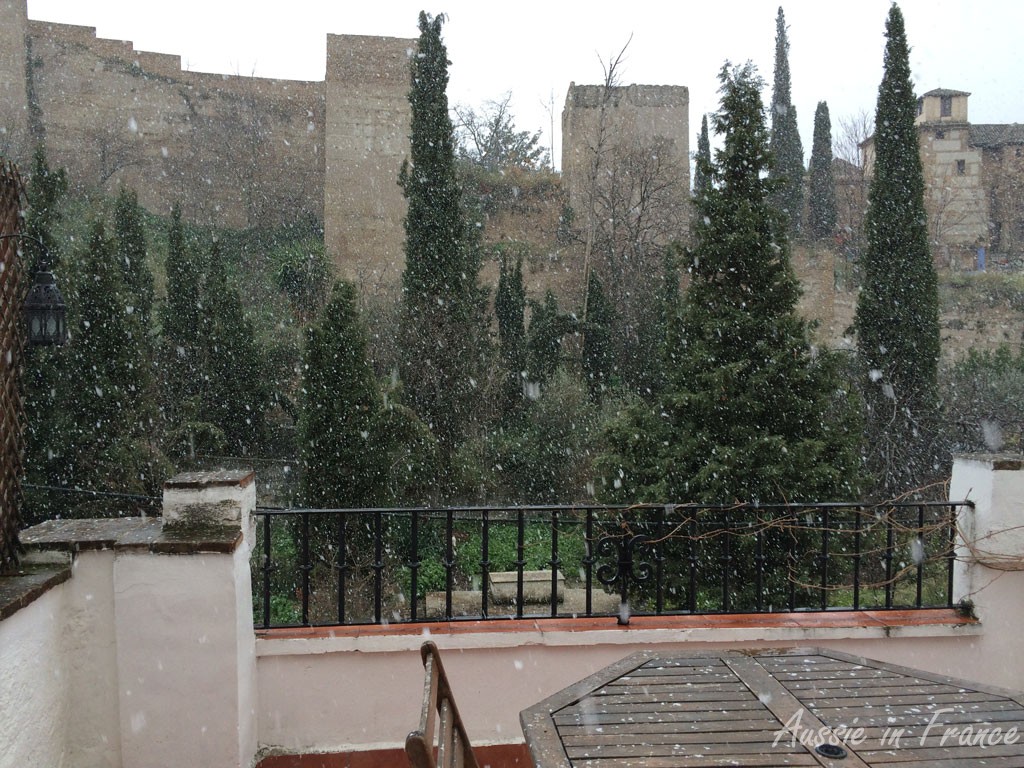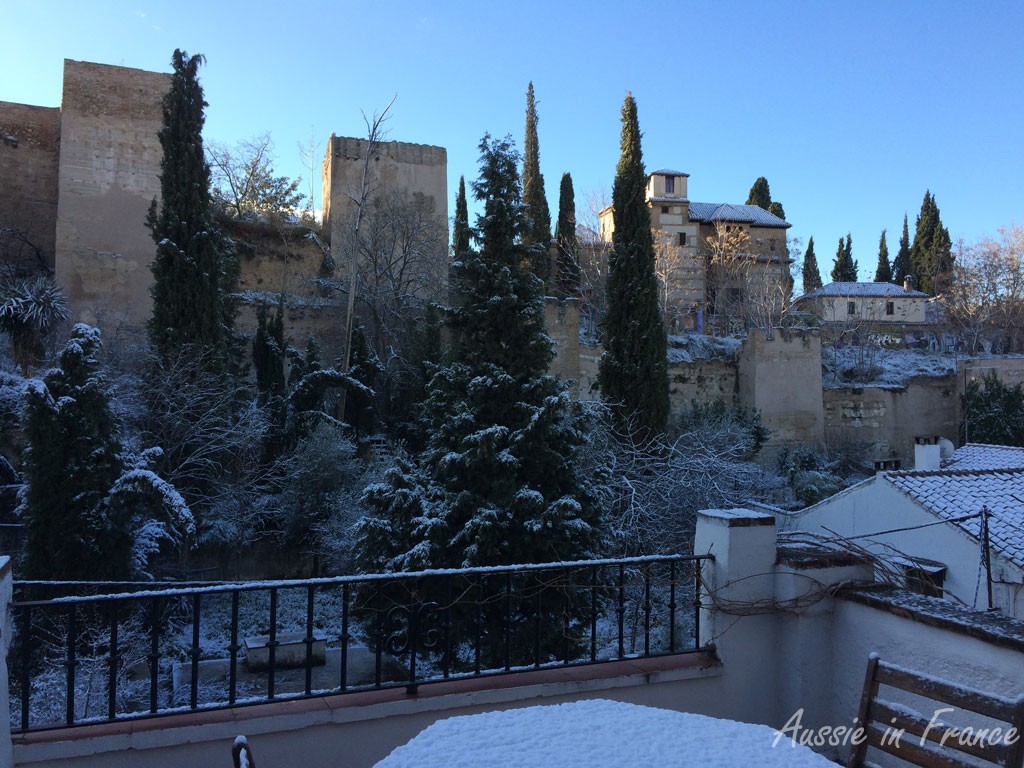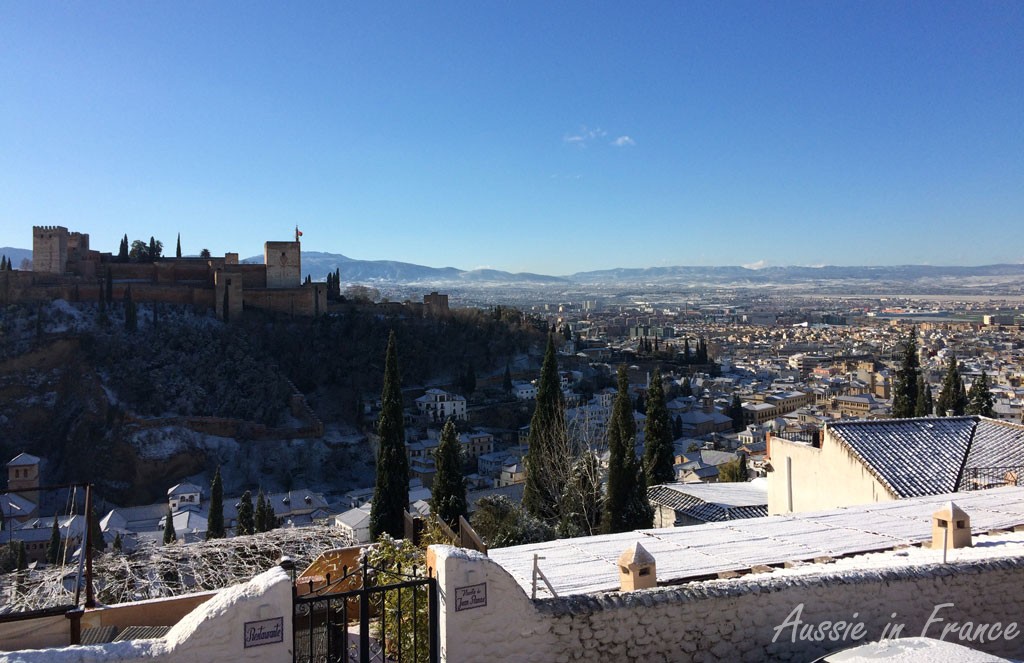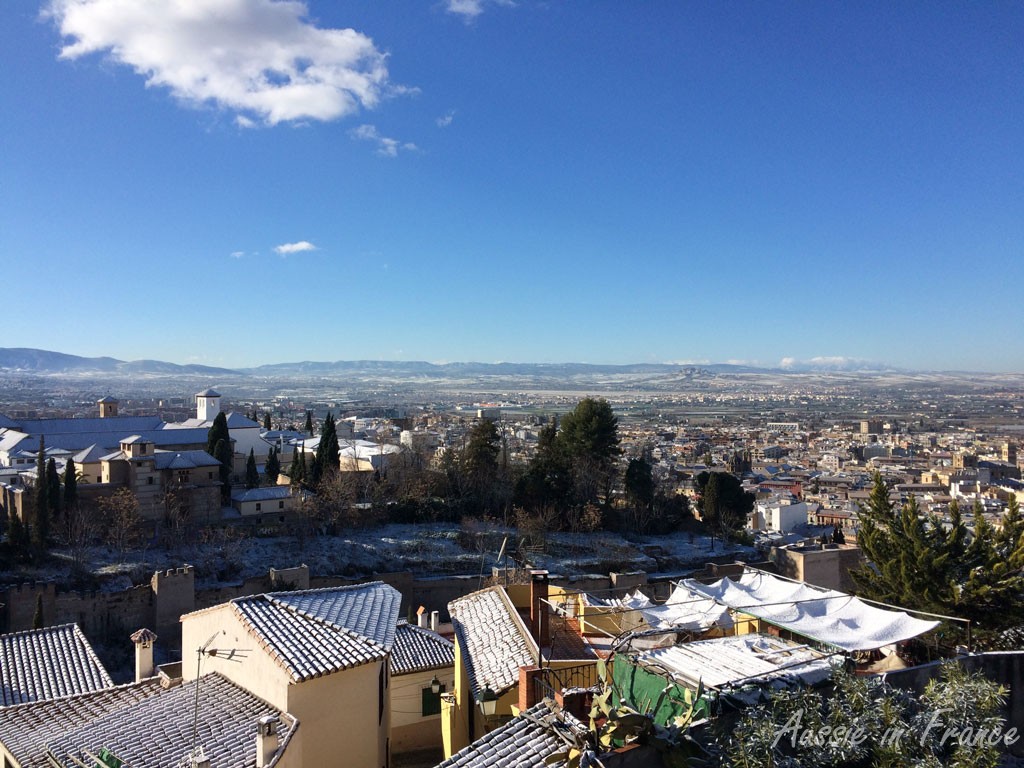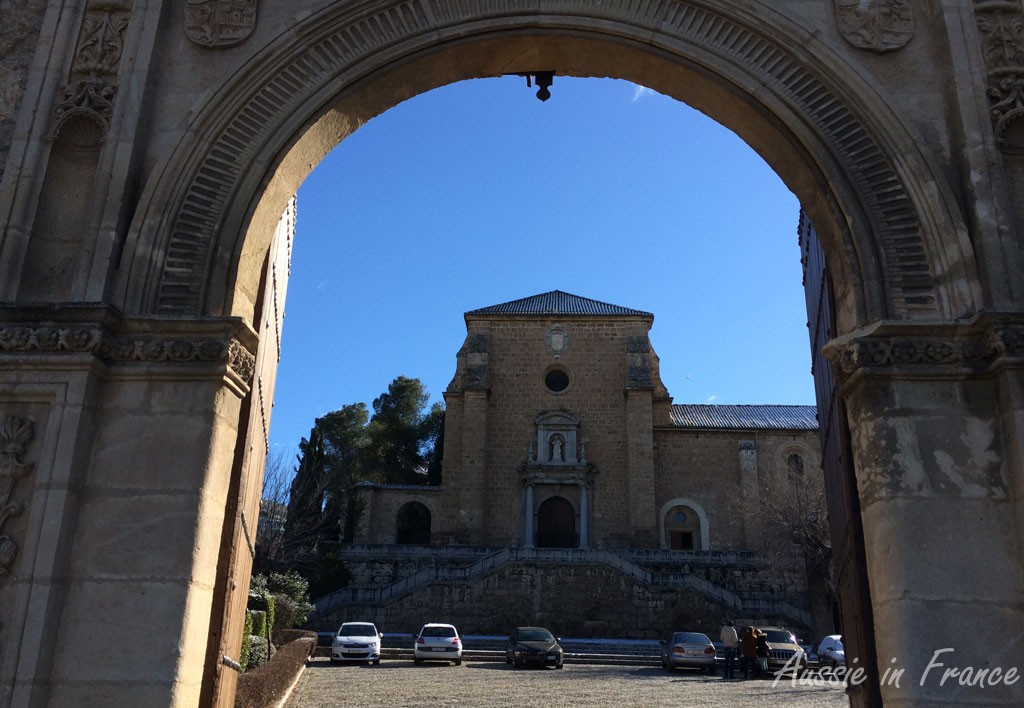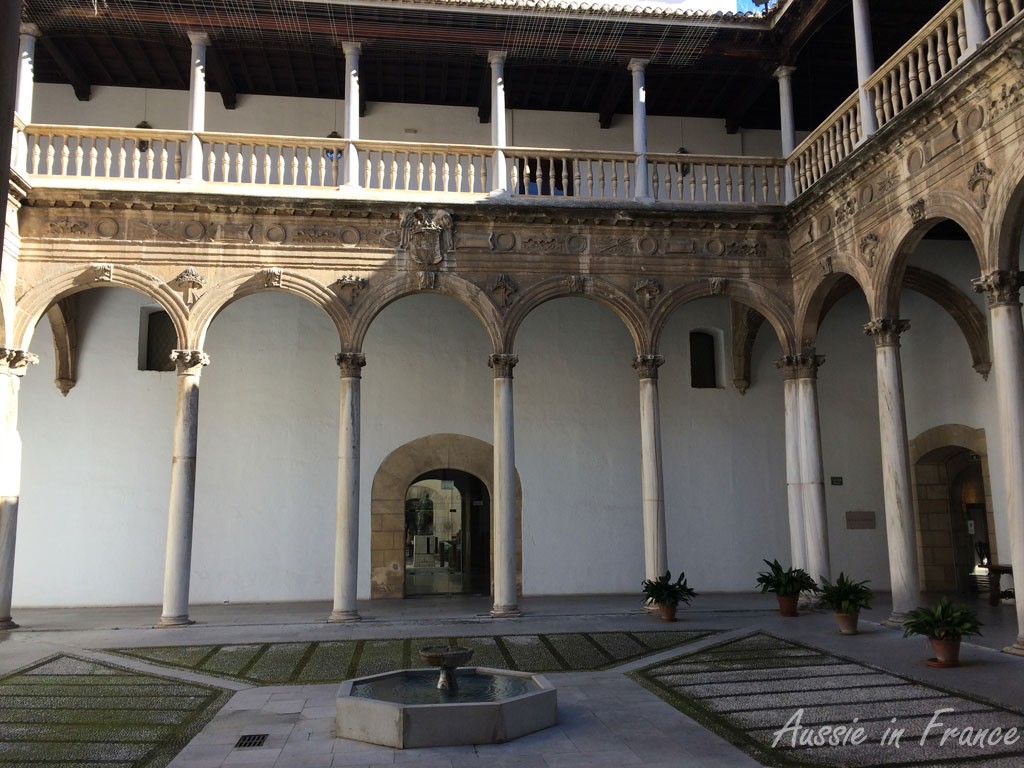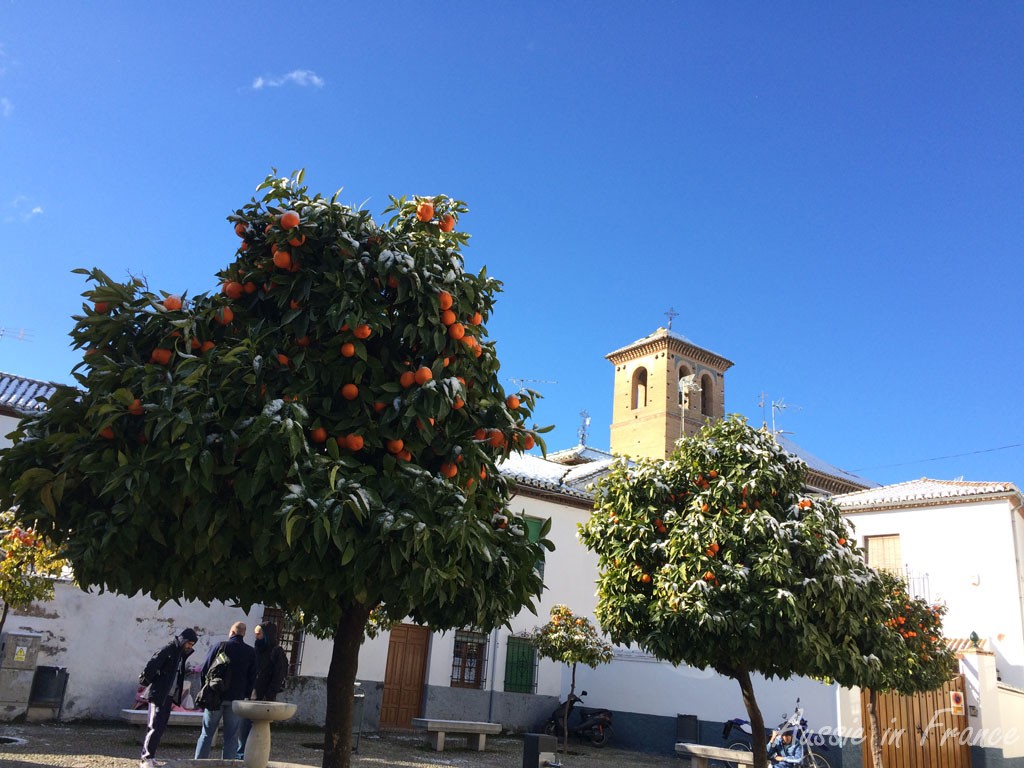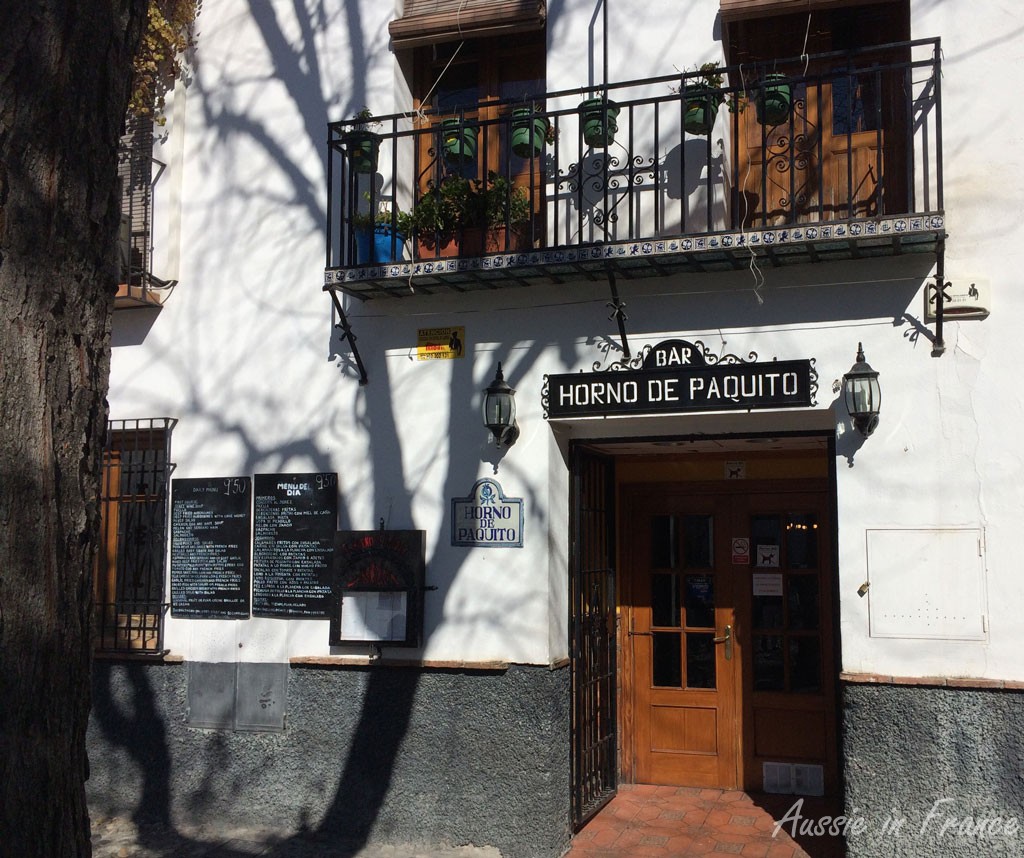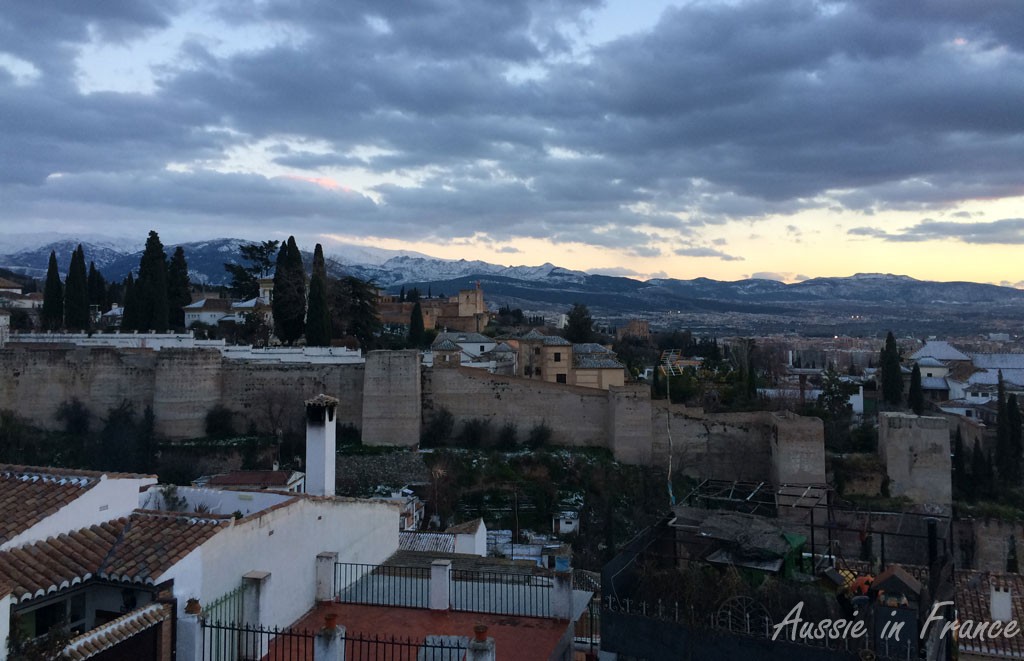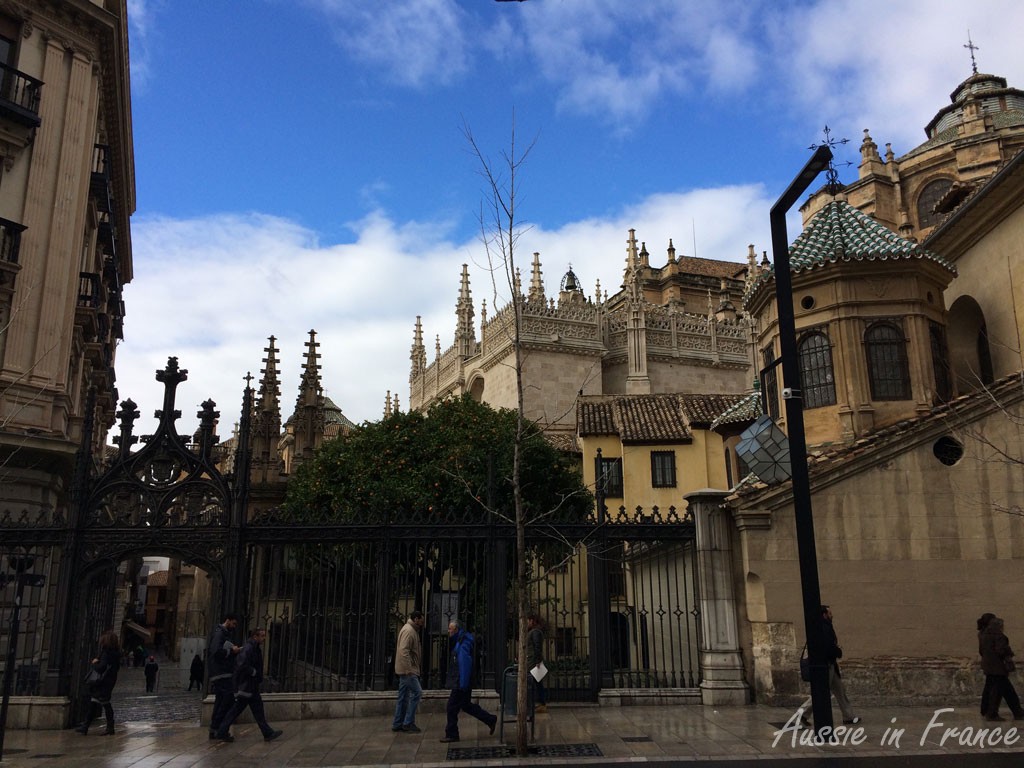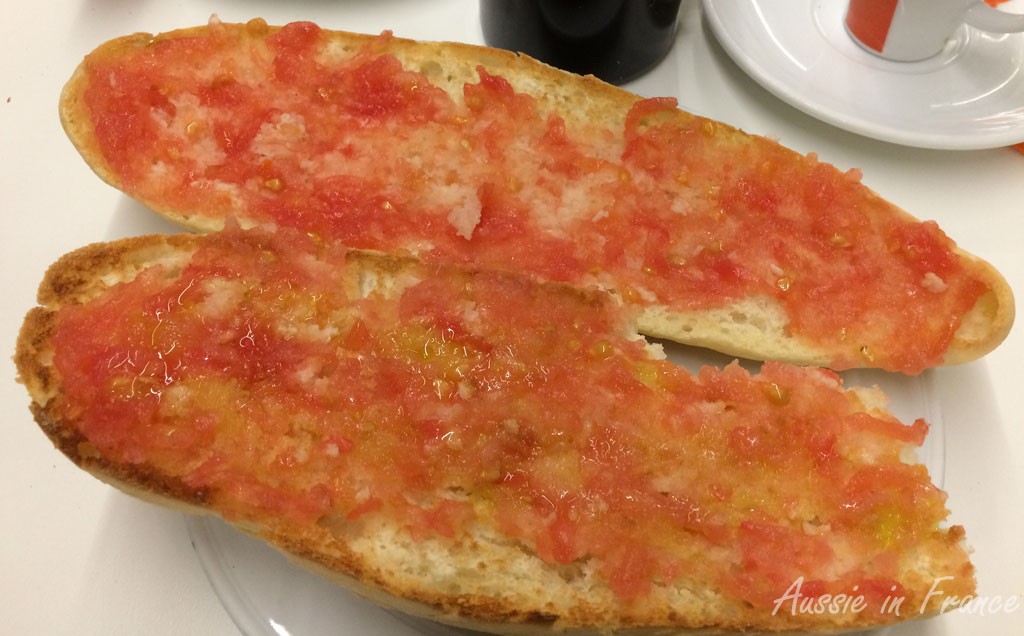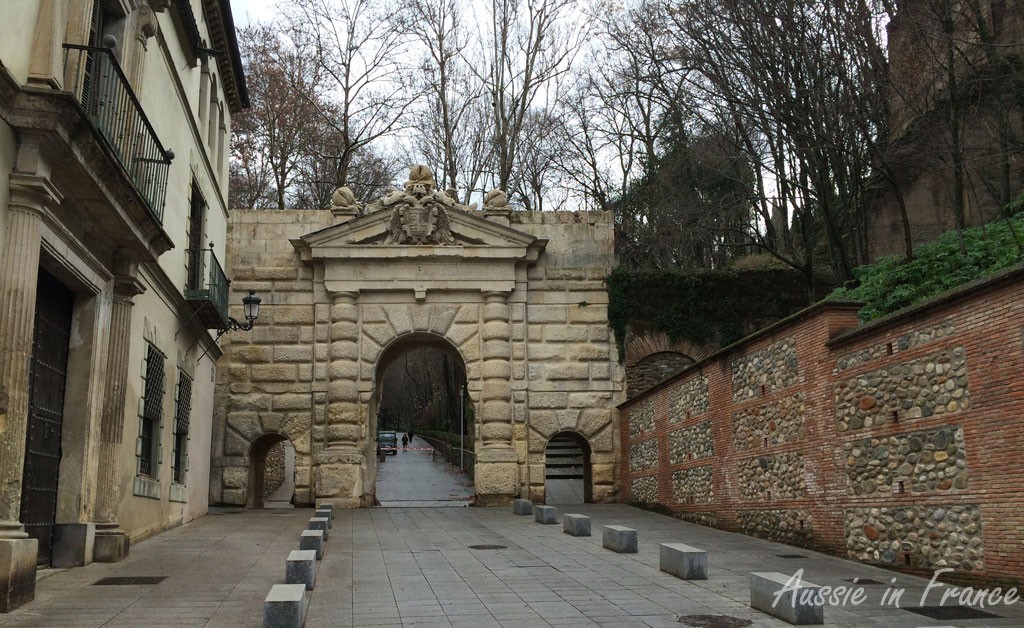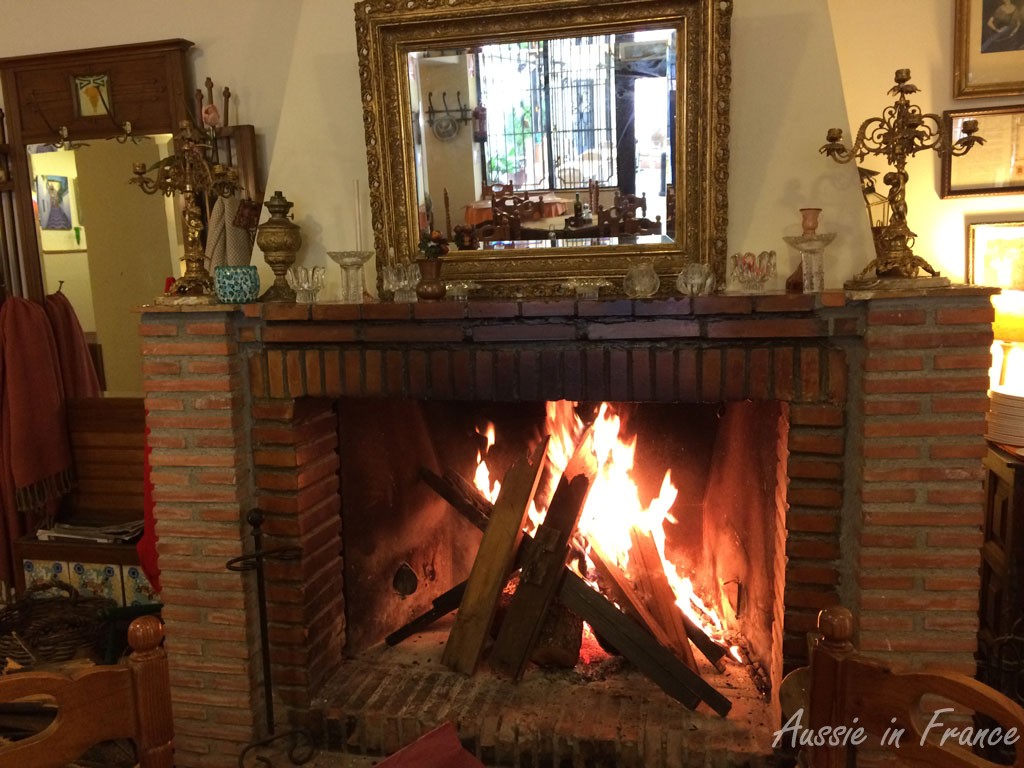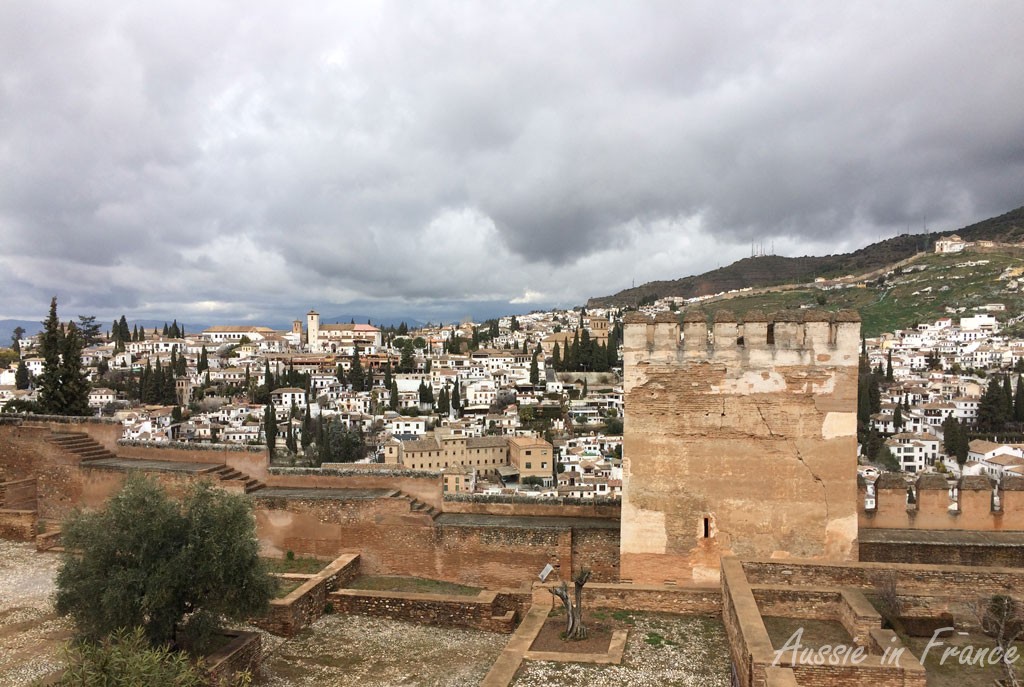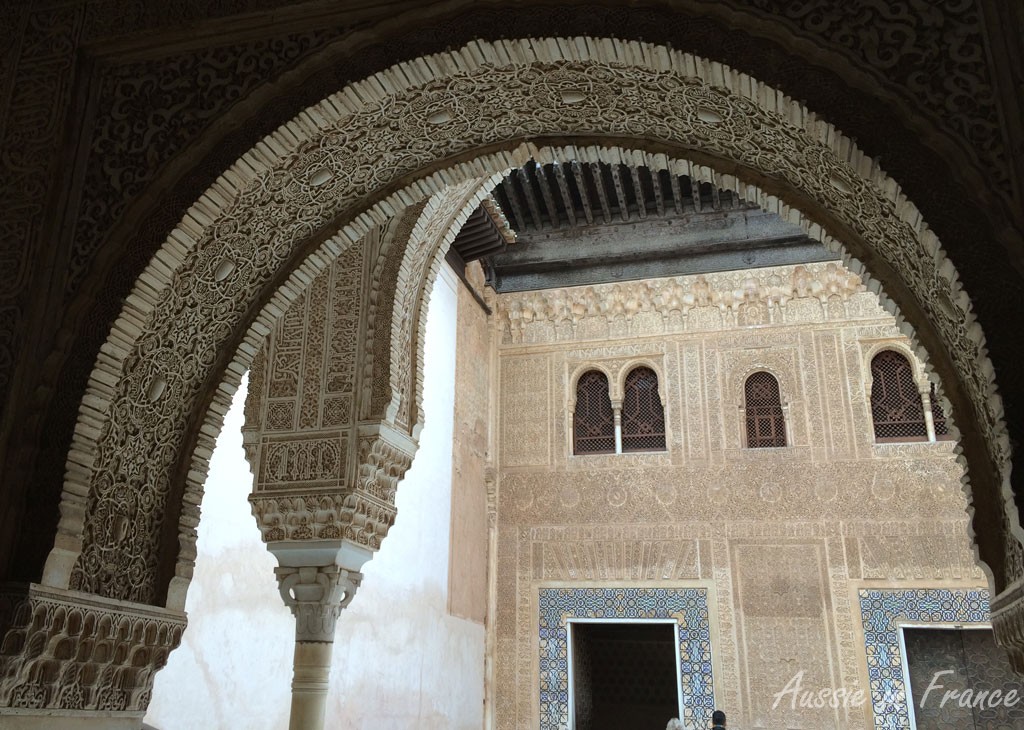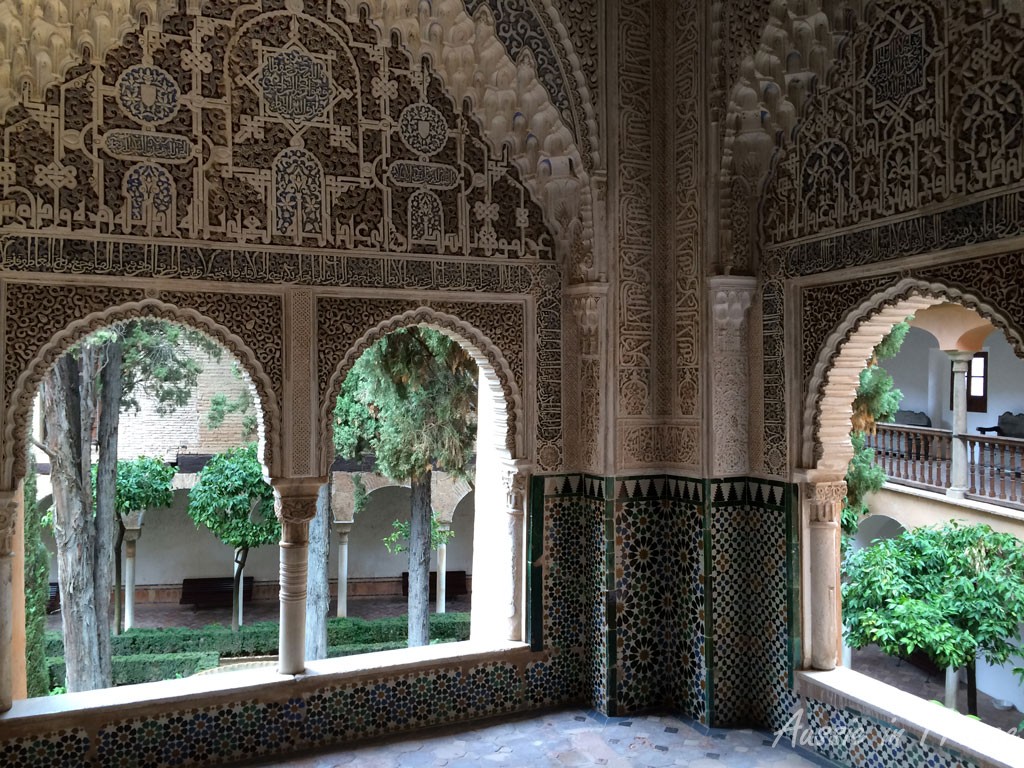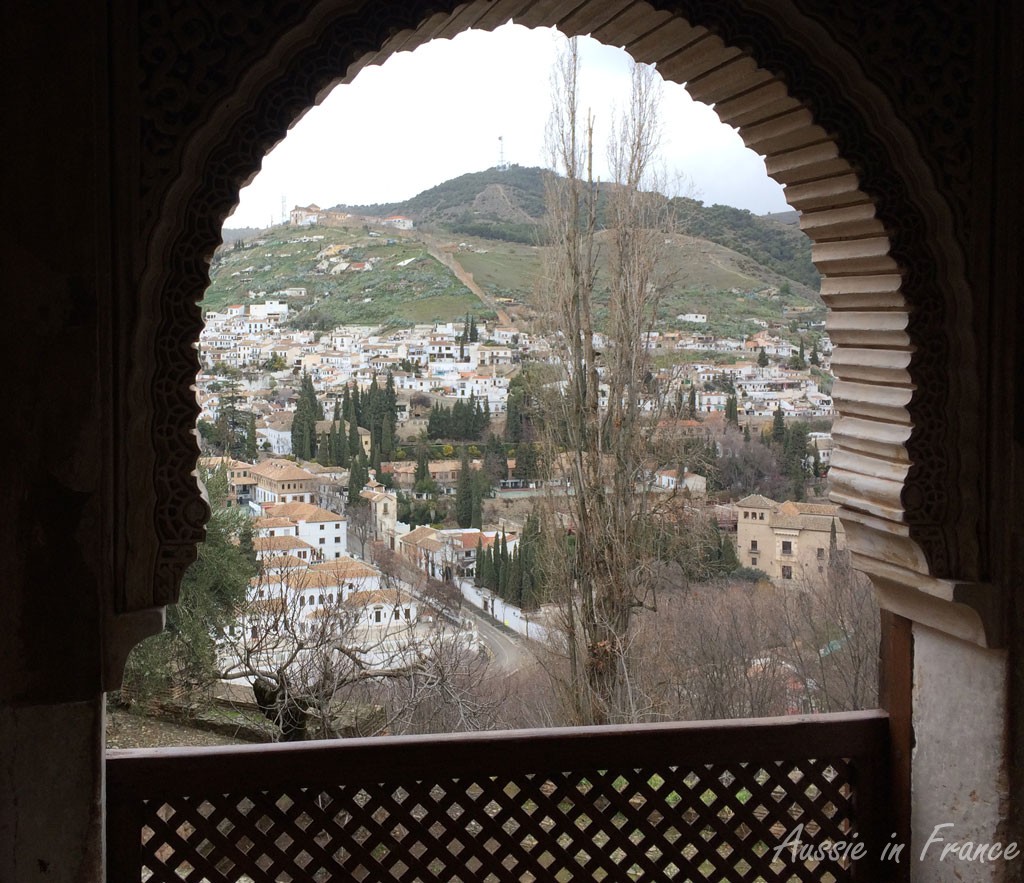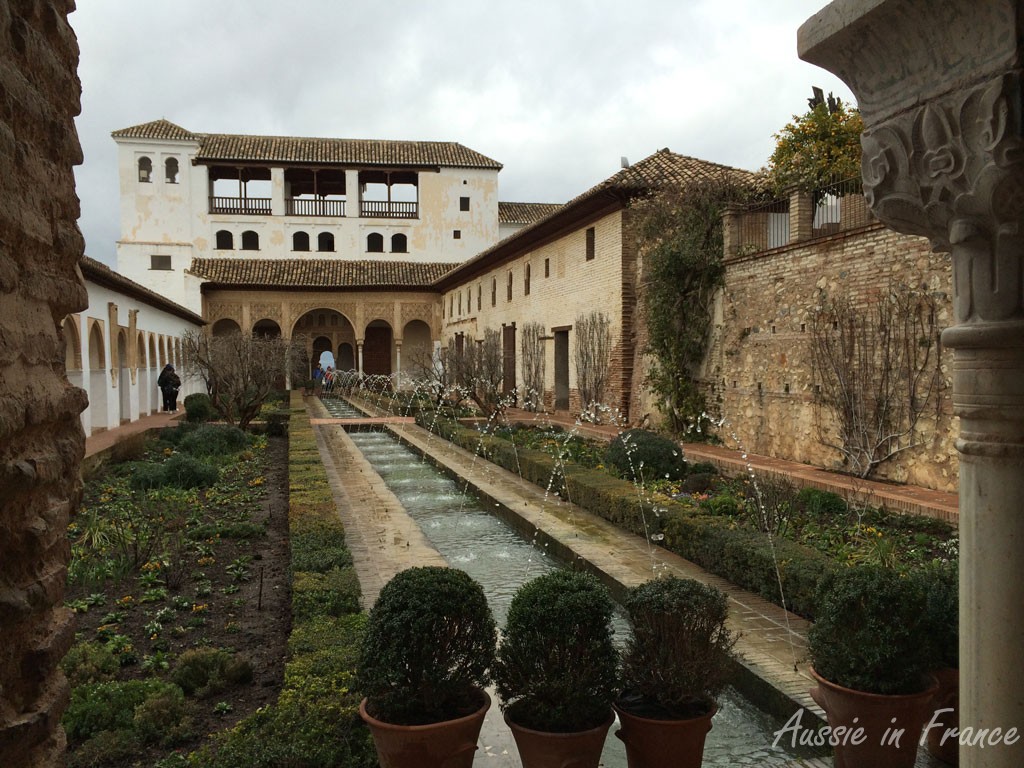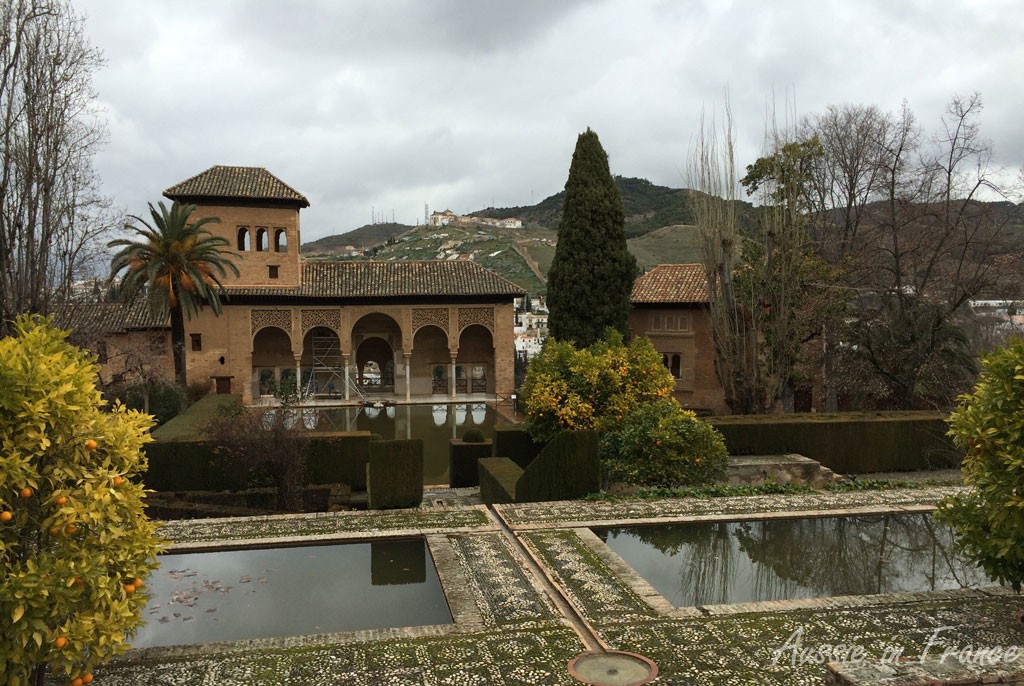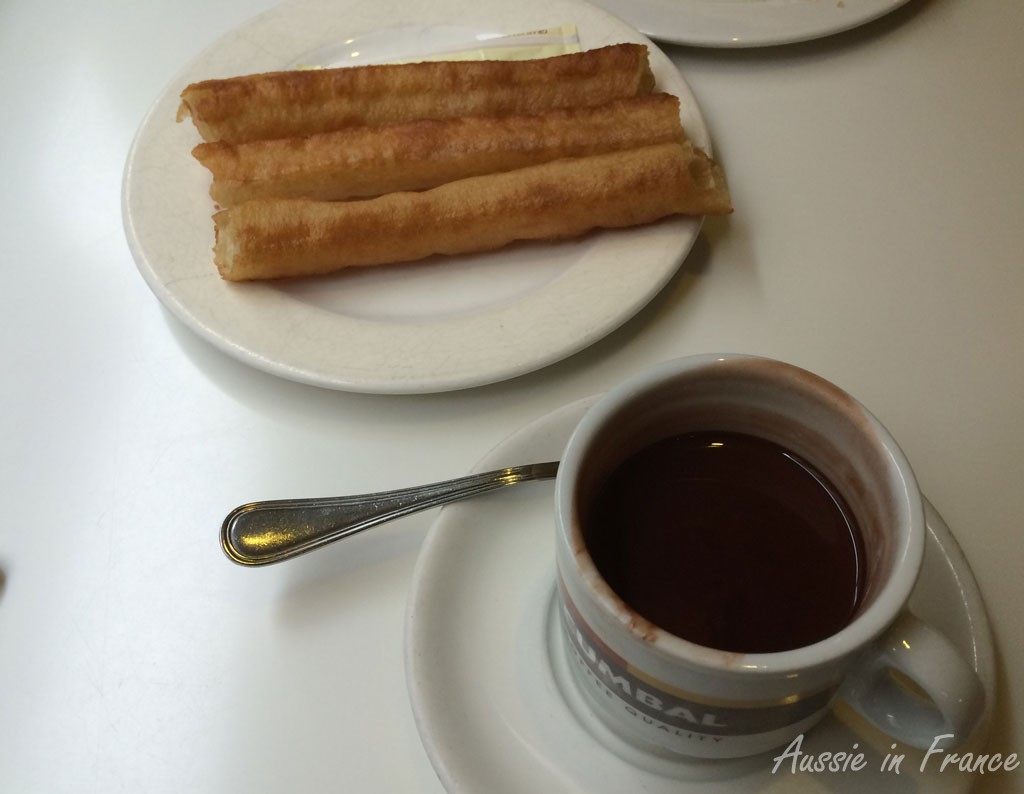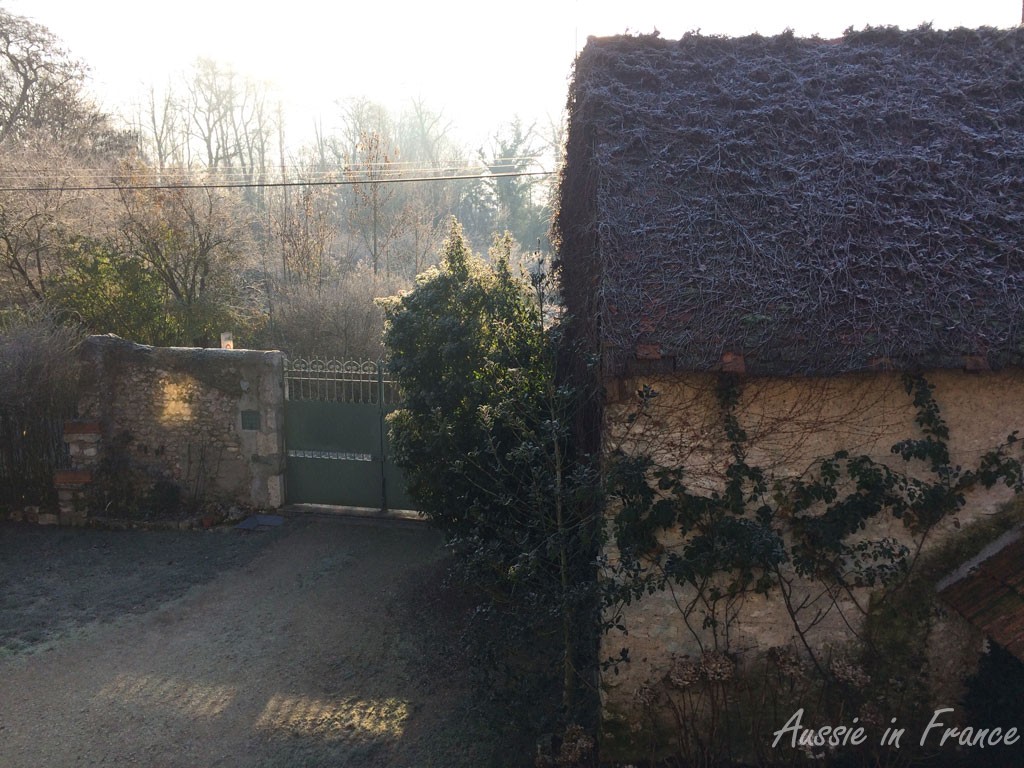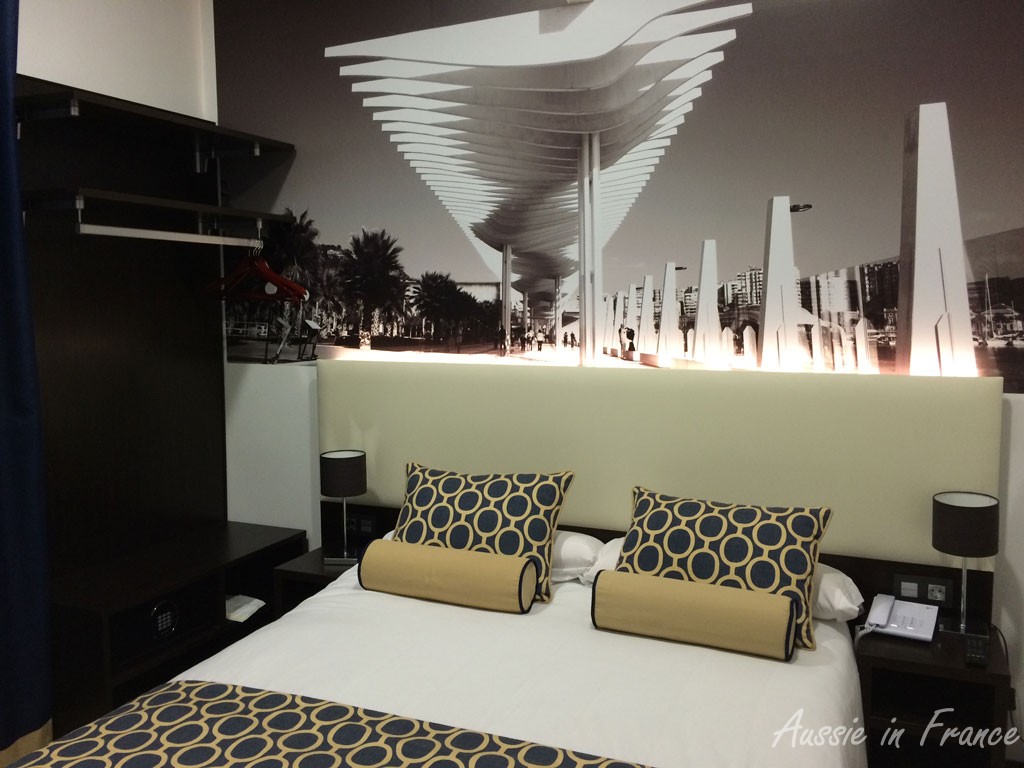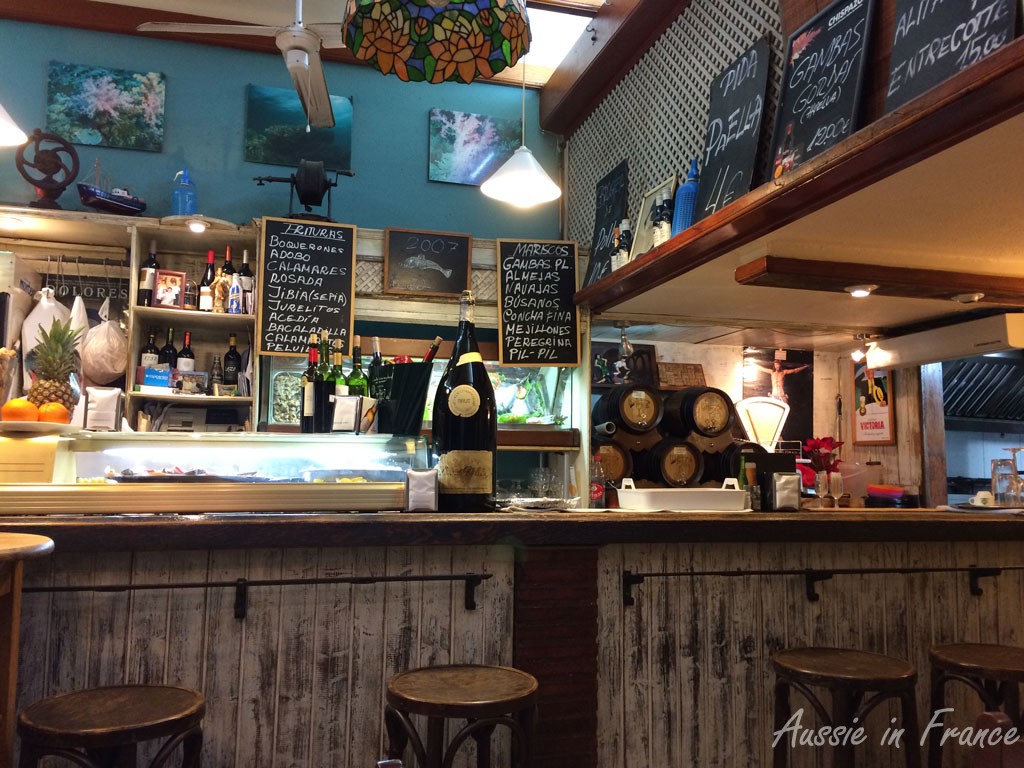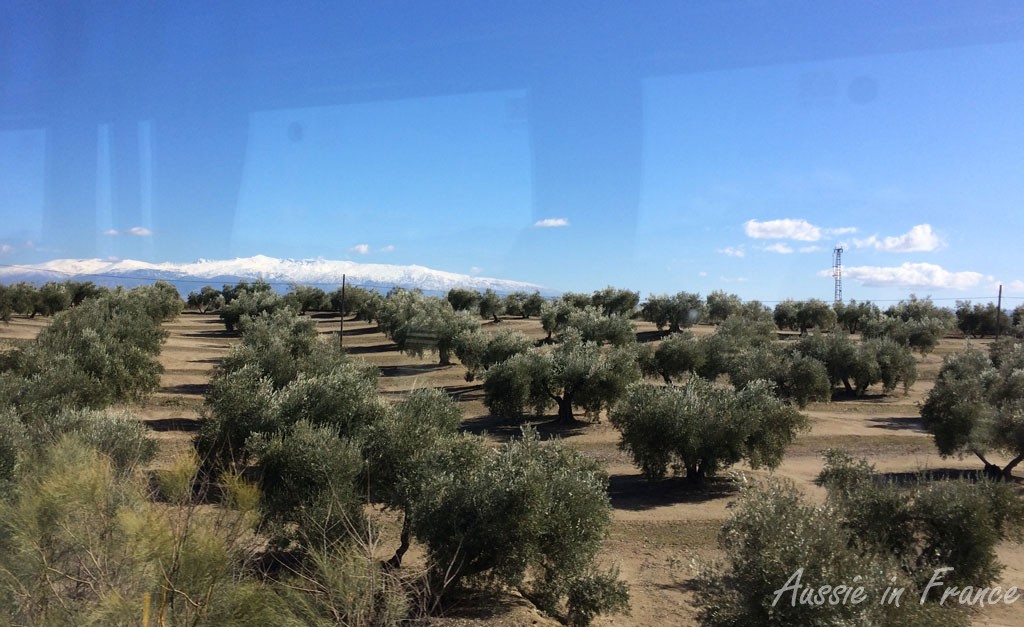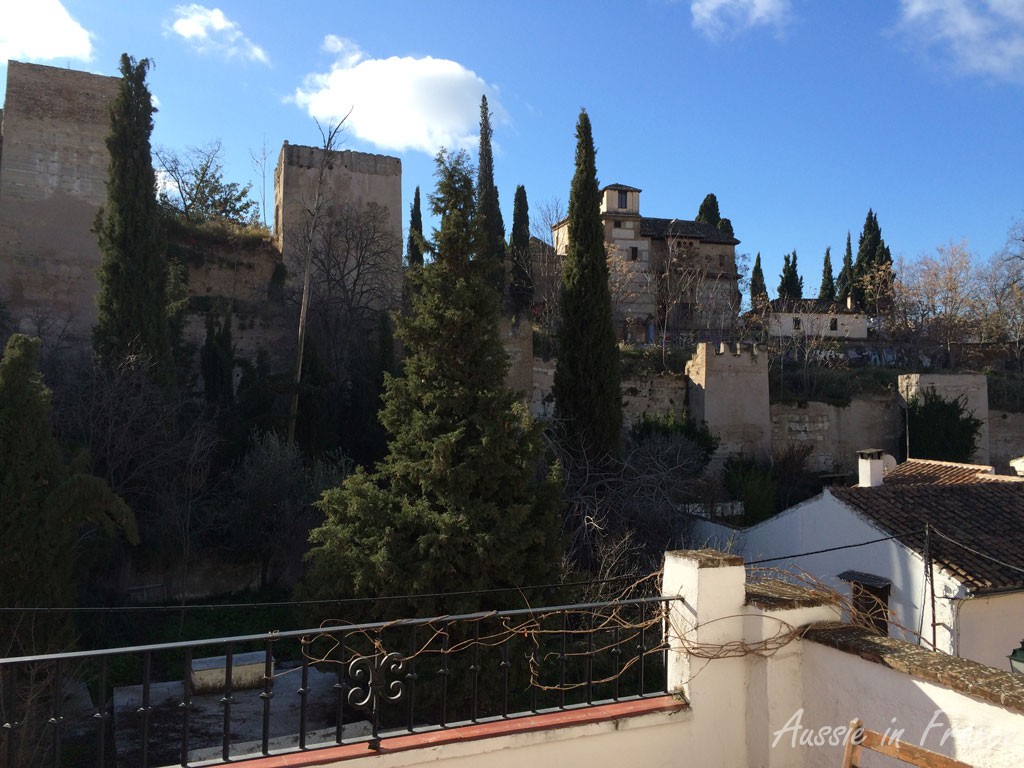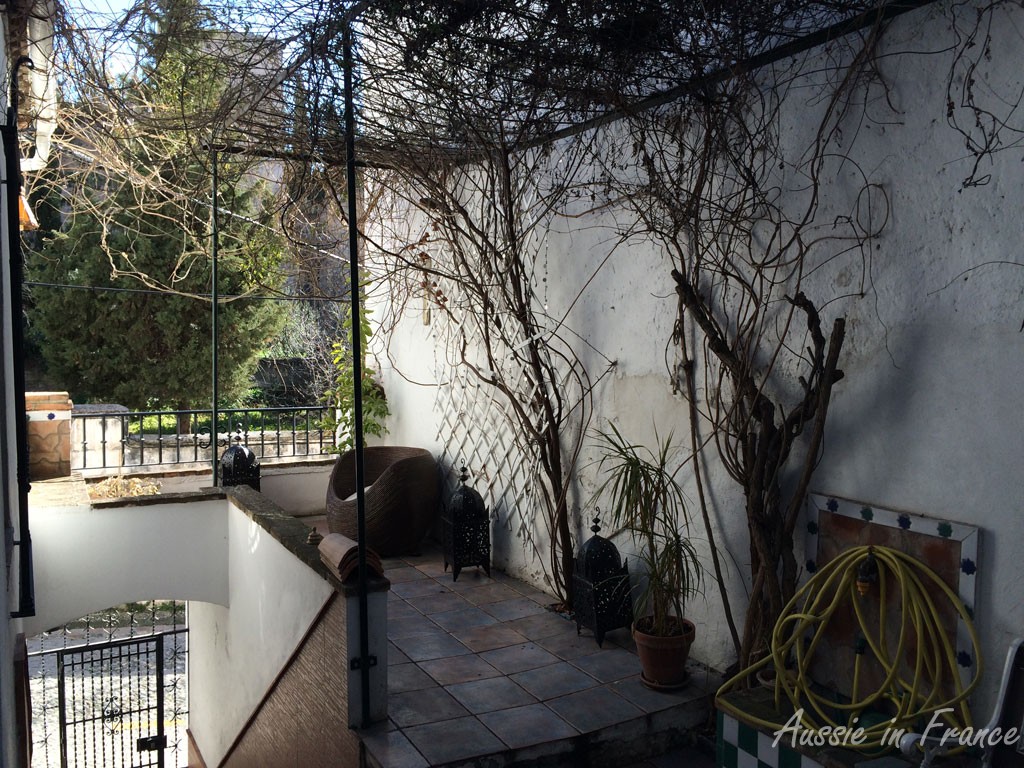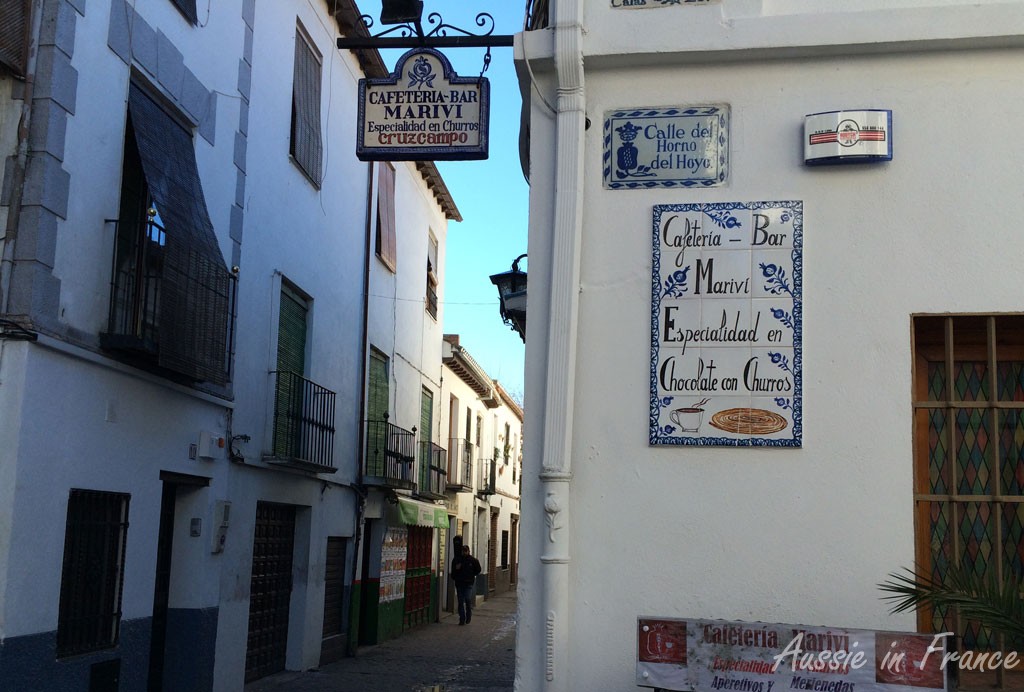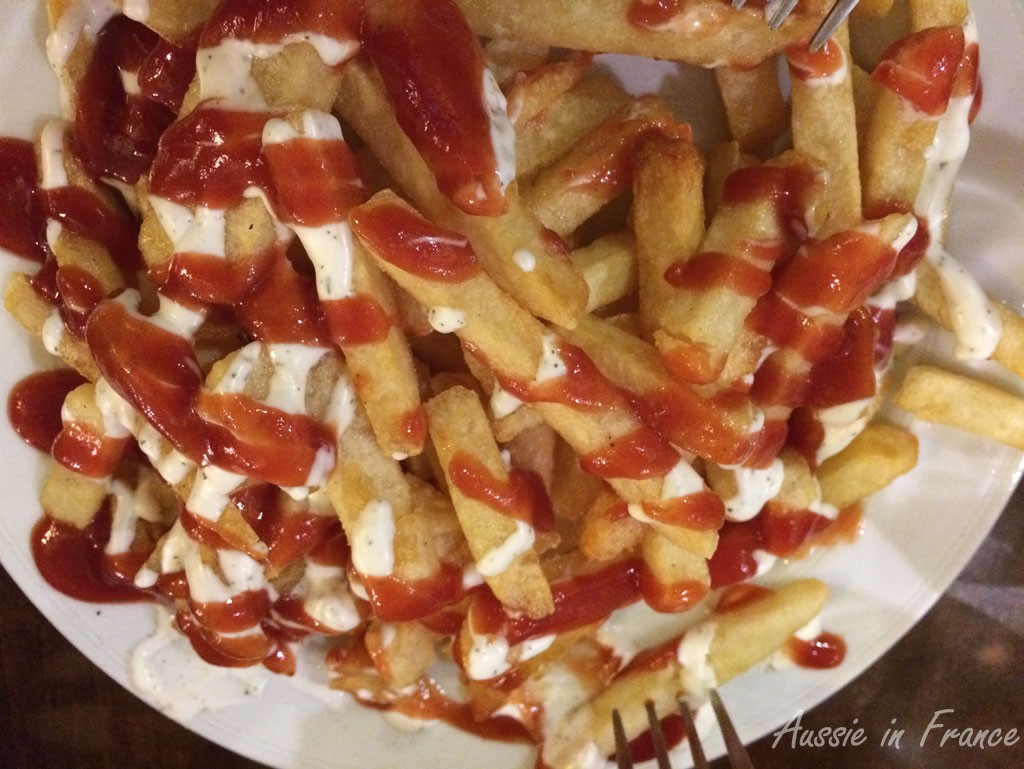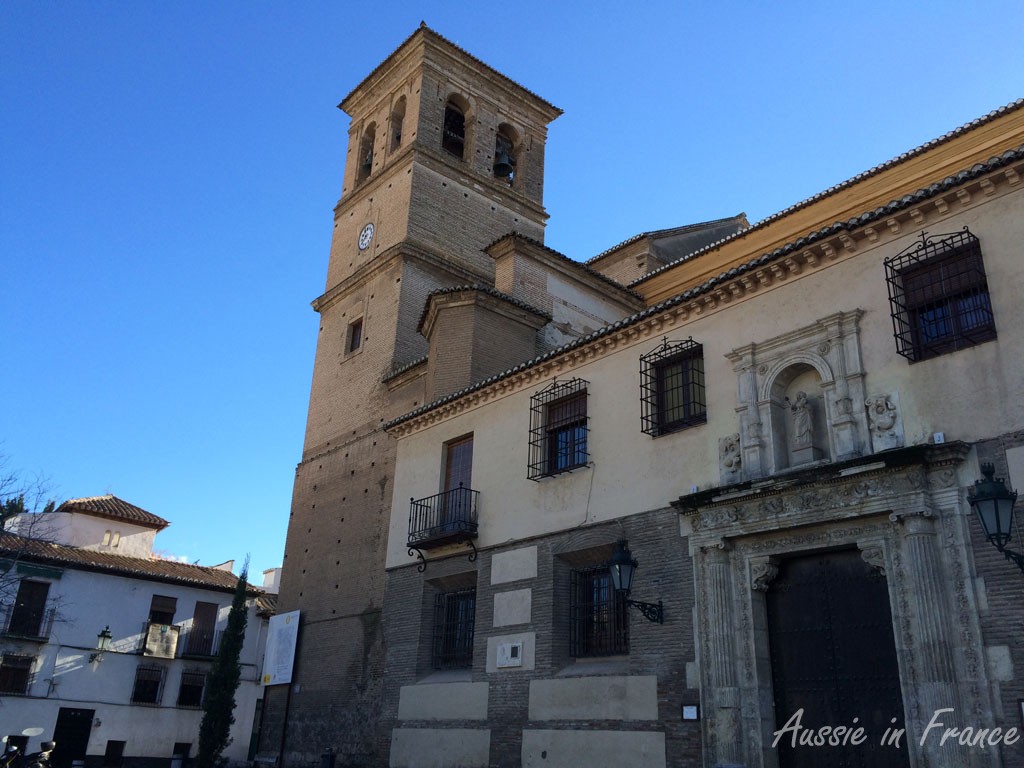The weather is rather overcast when we set out but the forecast says it’s going to improve. We’re a bit disappointed because we don’t have the magical light we had yesterday when we cycled to Malcesine.
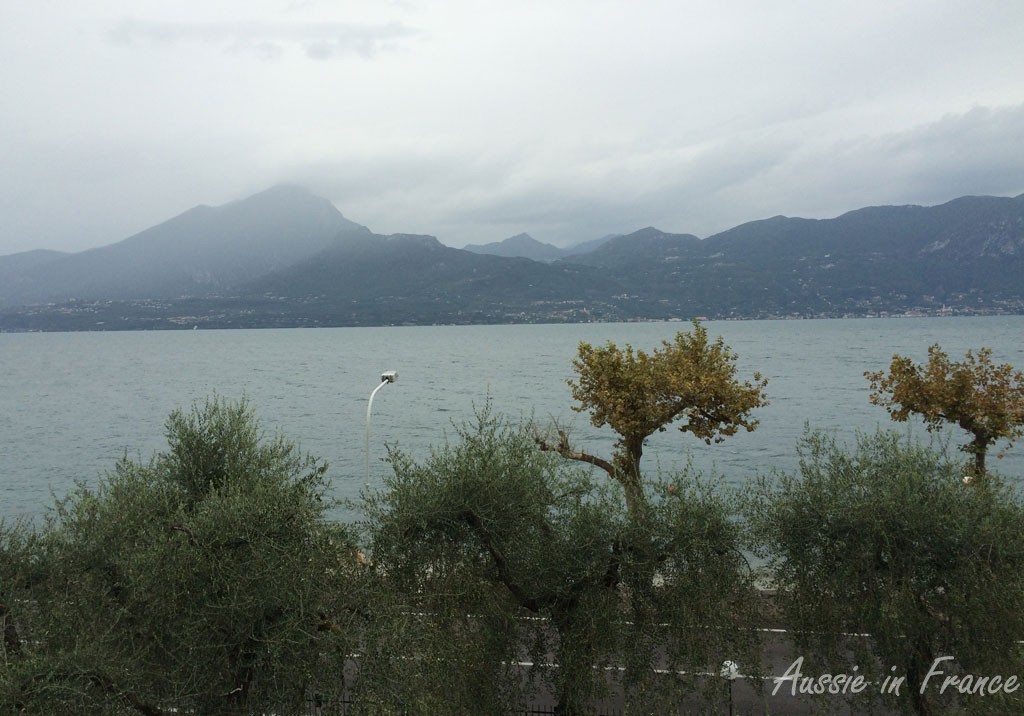
We decide to drive to Garda 9 k to the south and stop and visit Torri del Benaco on the way. It is our closest village, after all.
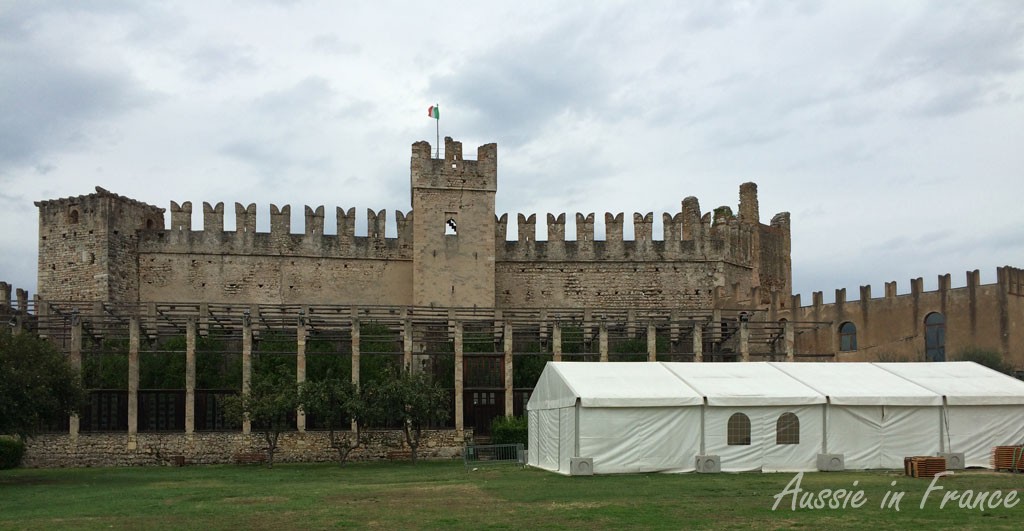
We admire the 14th century castle with its typical crenellations and the usual little rectangular port but the threatening rain doesn’t encourage us to linger.
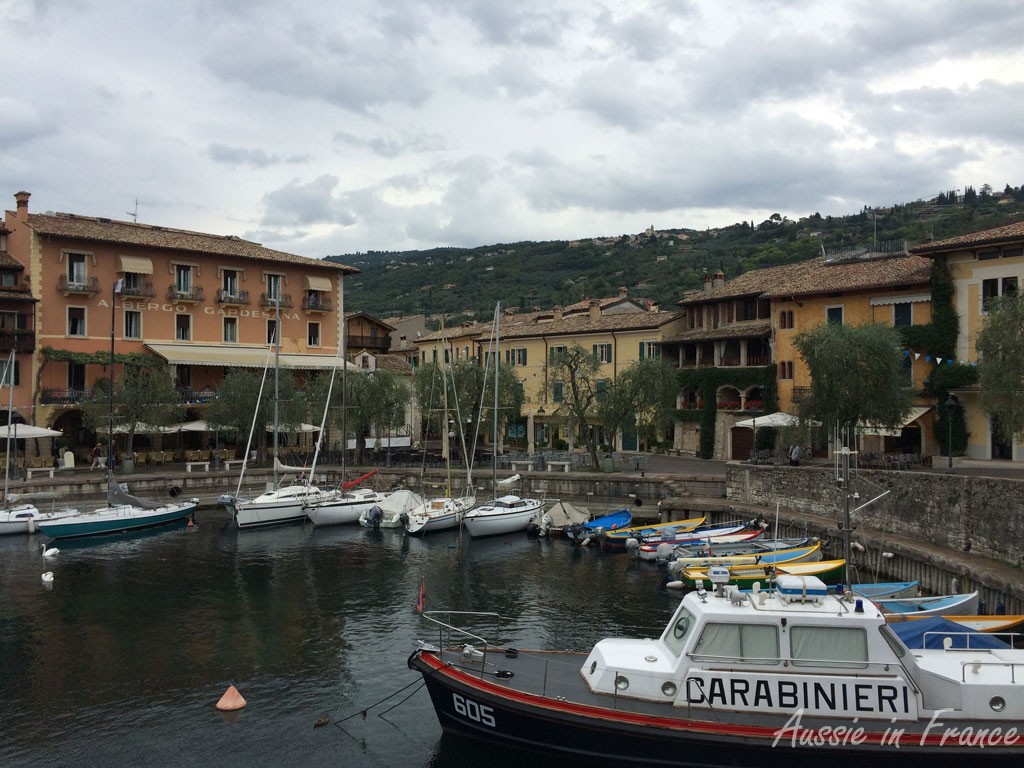
There is a lot of traffic at Garda and not much hope of free parking so we push on to Bardolino another 3 K south. We find a place to park on the side of the main road just before the town and set off on our bikes into the centre. After a couple of kilometres on the main road, we find a very pleasant bike path and discover a most delightful little town, though very different from the villages between Torri and Malcesine.
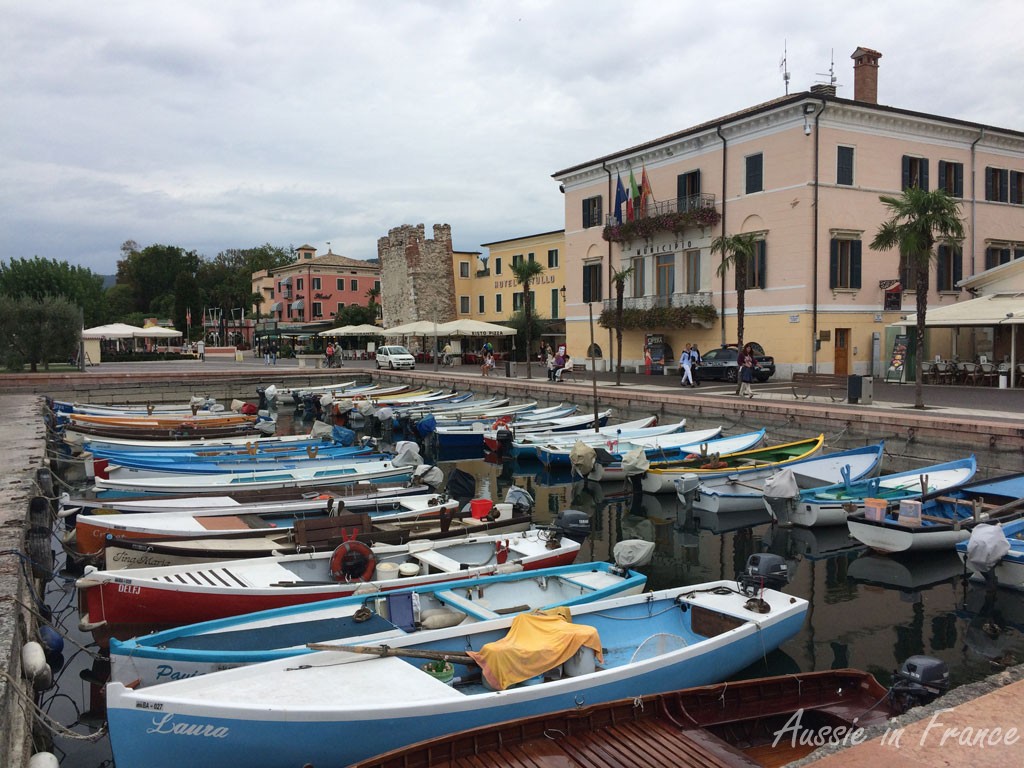
We continue along the edge of the lake passing a series of camping grounds all full of German and a few Dutch campers. Our hotel is full of Germans as well. Ours is the only car without a D on it!
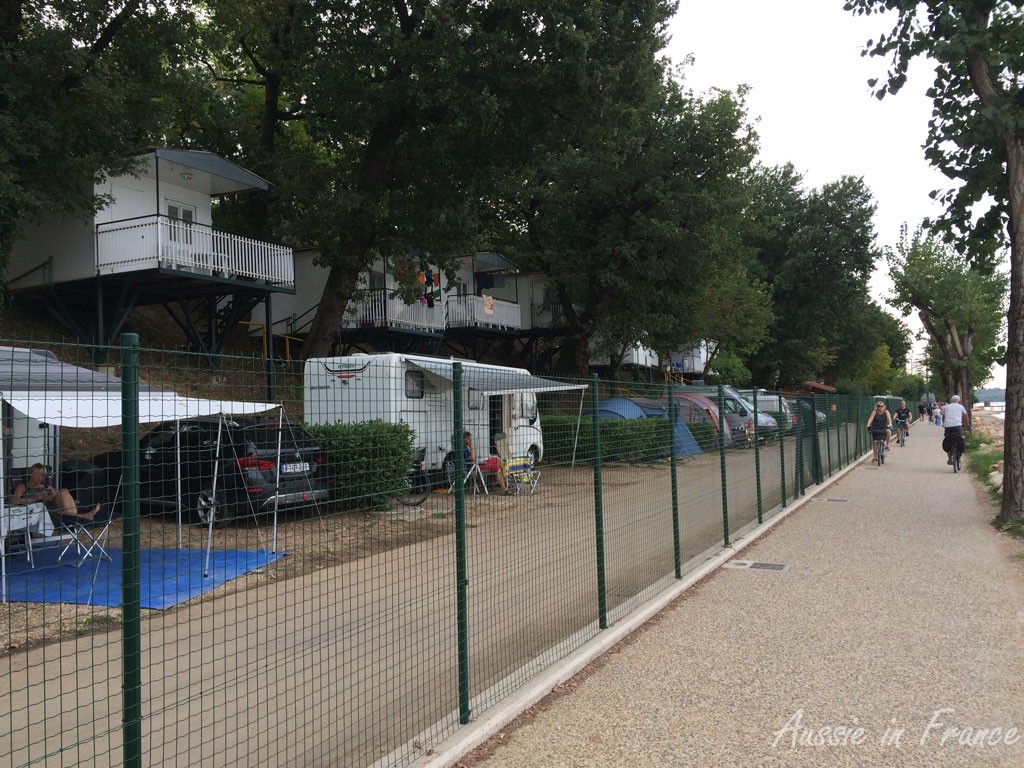
As we approach Lazise, there are more and more people on the path, which is no longer reserved for bikes. We often have to get off and walk. As we finally reach Lazise, we understand why. There is a huge market and the whole town is full of people. We have trouble getting through with our bikes.
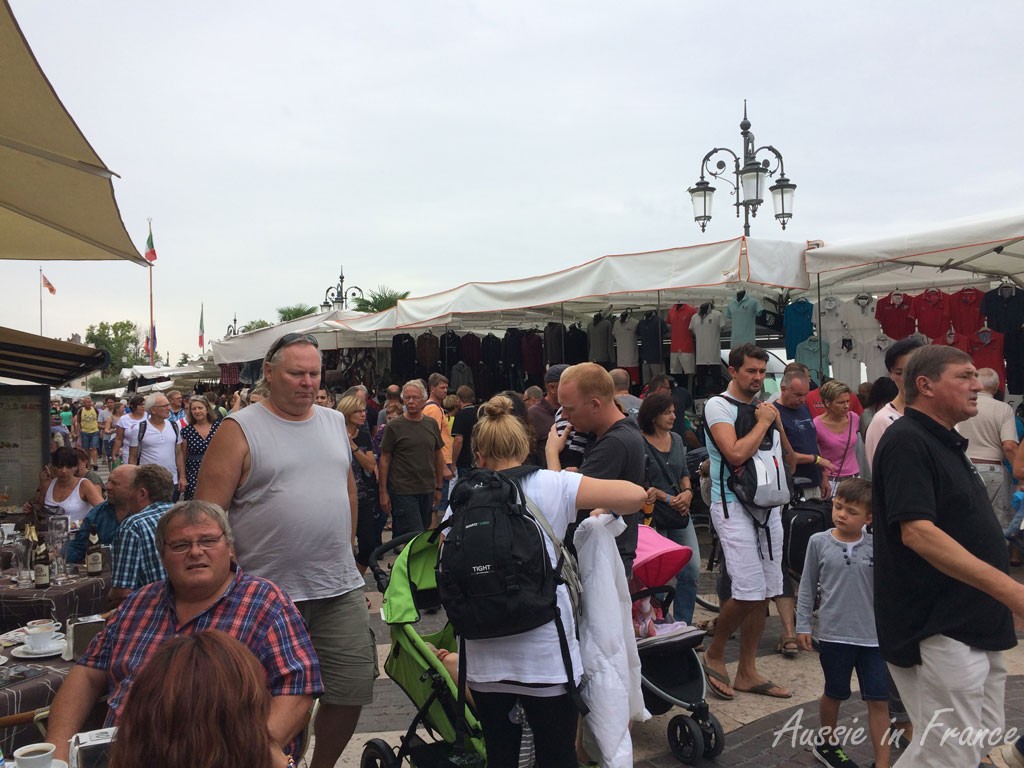
The market spreads so far that we find it difficult to even see the town!
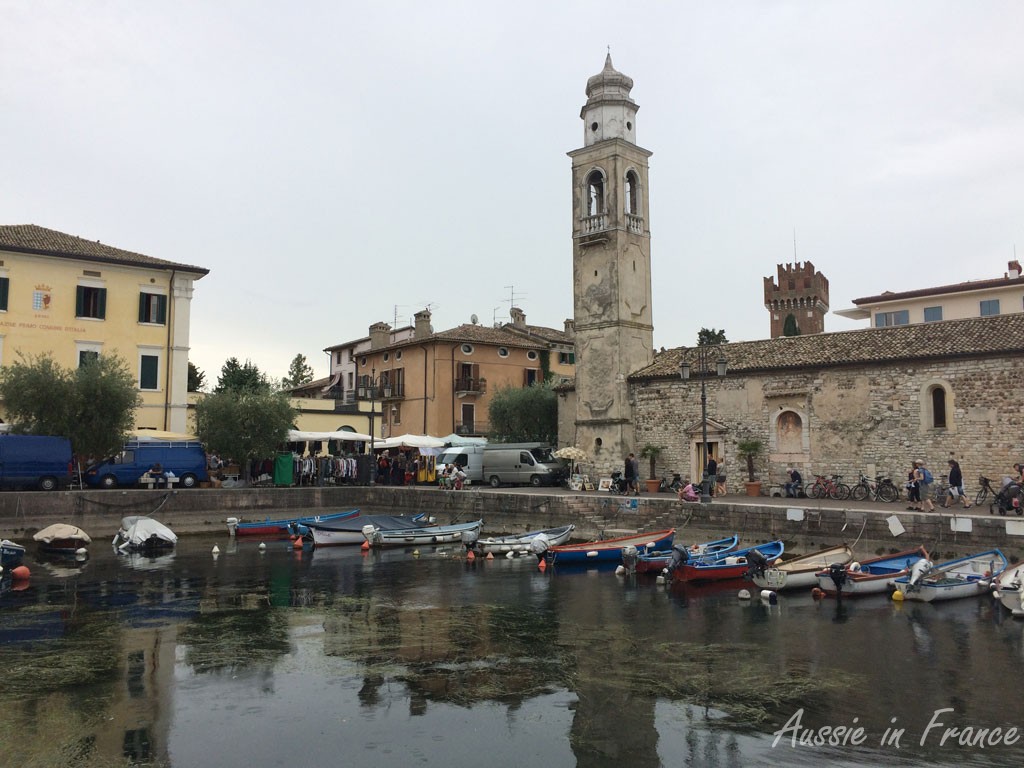
We find our way out as quickly as we can and finally come to a bike path again. The sky is clearing and the light is improving reminding us of yesterday’s magic.
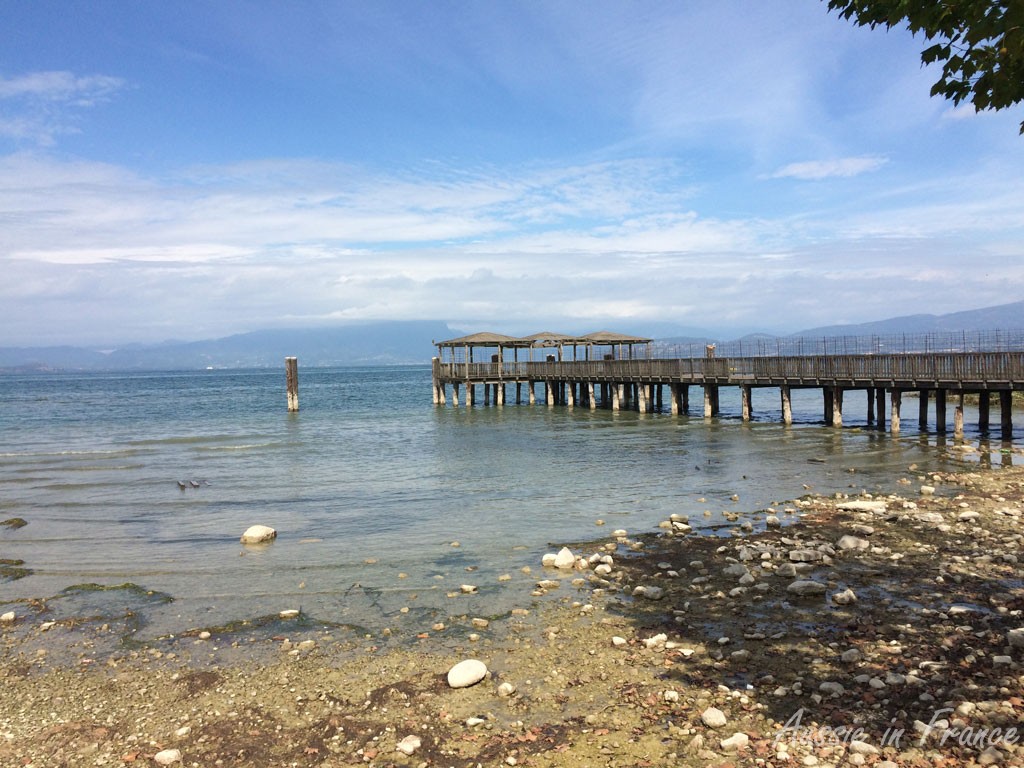
The path peters out and becomes a beach. The only way out is through a camping ground that takes us up to the main road again. A bike path along the edge goes past the Caneva World and Gardaland entertainment parks but it’s not very scenic to say the least !
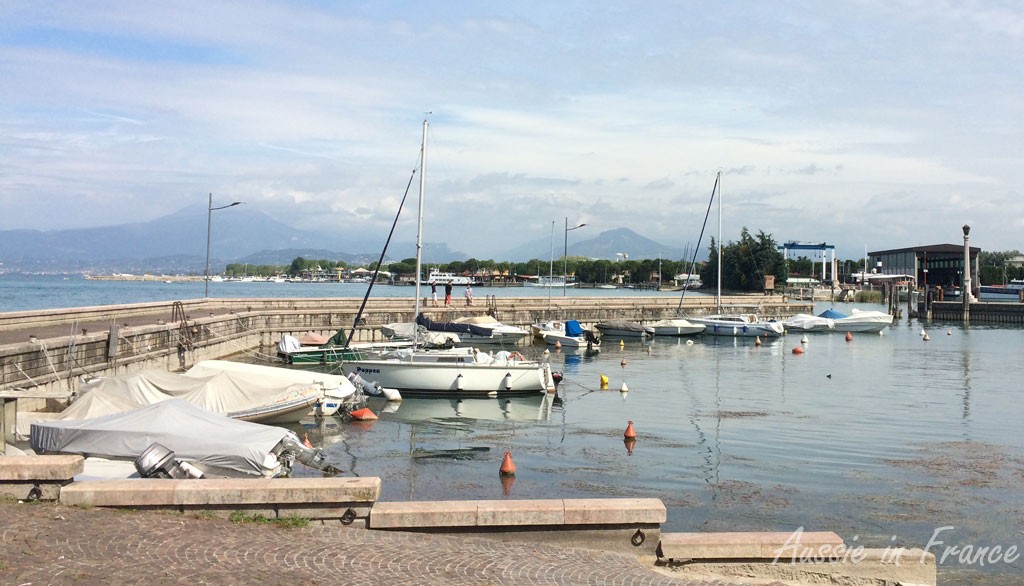
We finally arrive at what we think is Pescheria but is actually a marina outside. We hesitate to have lunch there but Jean Michel wants to go on to Pescheria and find something more typical. However, when we get there, it seems so full of tourists that we don’t go into the town and continue along the edge of the lake.
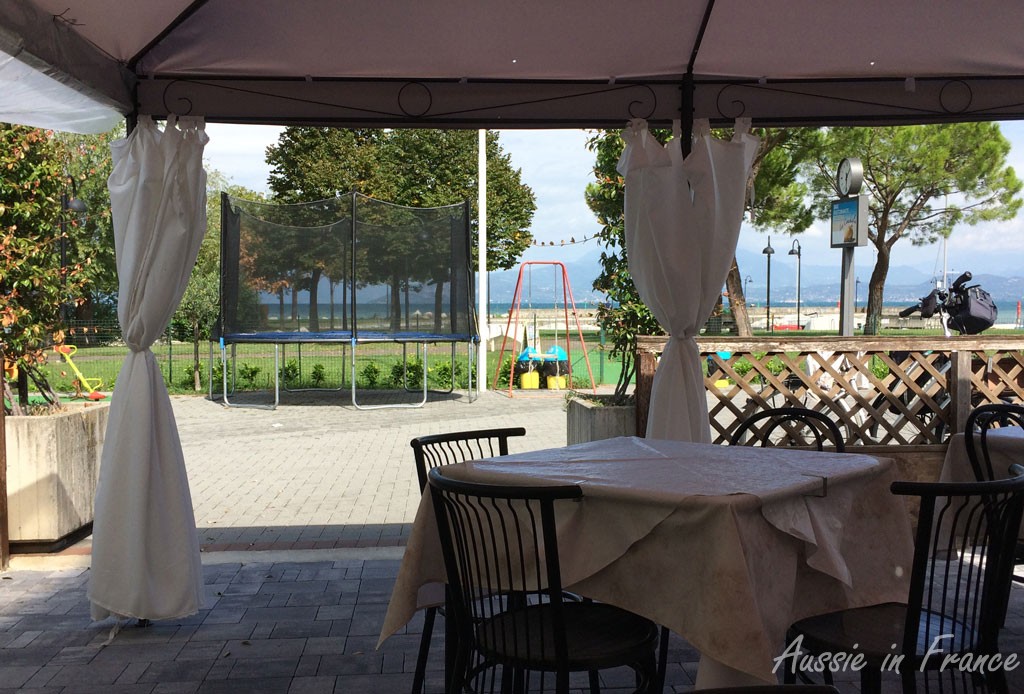
We’re forced back onto a bike path along the main road again, and eventually veer off to the right where we find a restaurant with a terrace called La Conchiglia which we later discover also fronts onto the main road! We’re nearly at Sirmione by then. It’s 1.30 pm and we’re hungry! We appreciate the excellent rib steak and cold house red.
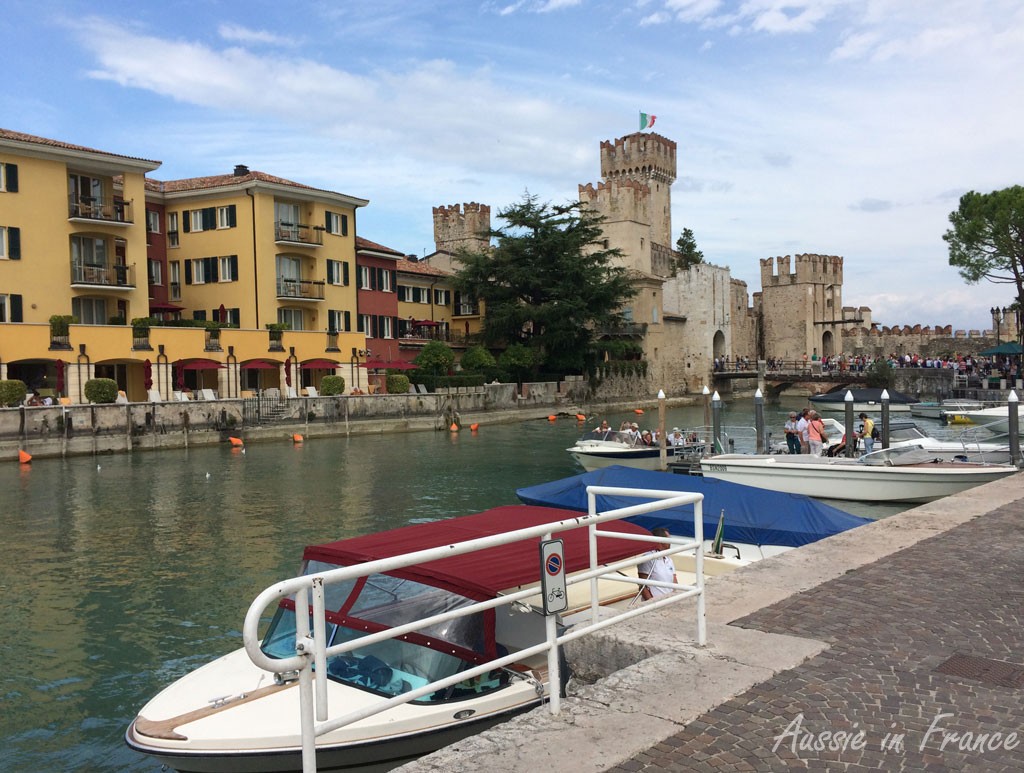
A bike path along the main road then takes us up the peninsula to Sirmione which is once again packed with tourists. It’s hard to really appeciate the surroundings with so many people in every direction. We buy our ferry tickets to back to Bardolino (28 euro for us and our bikes for a one-hour-trip), find somewhere to leave the bikes and vist the town.
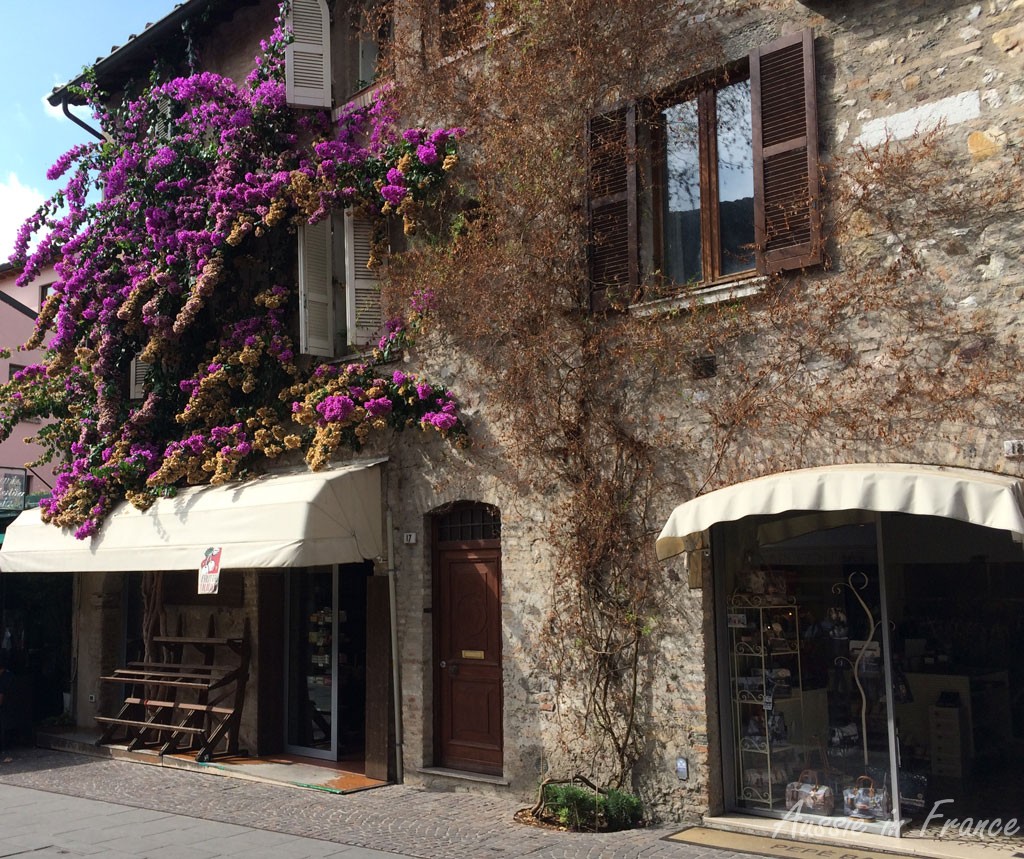
There is bougainvillea everywhere and despite the crowds and the shop fronts we can make out some lovely old buildings.
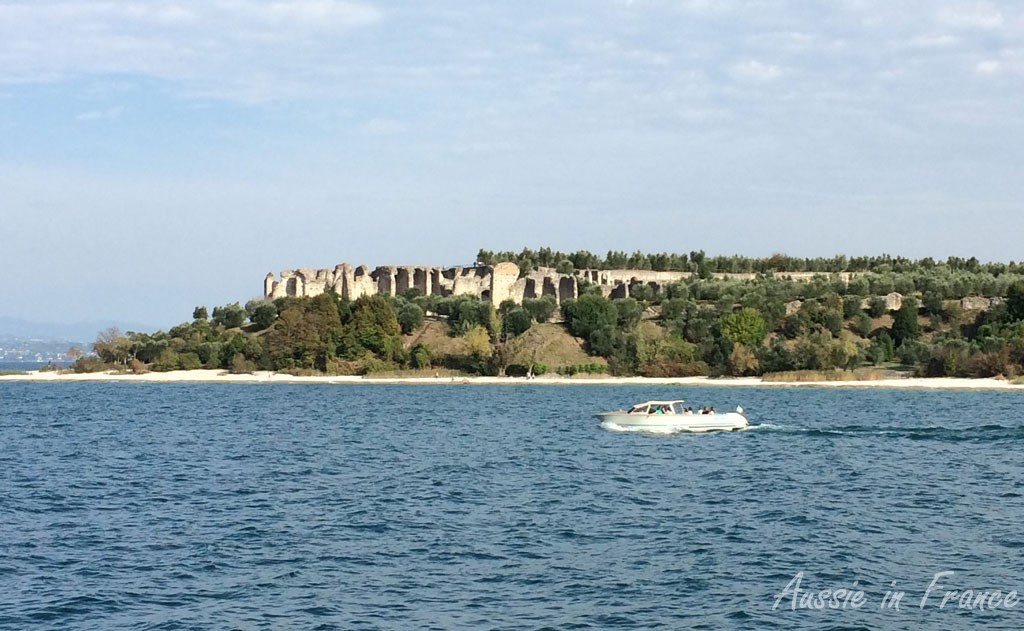
After the obligatory gelato, we wait for the ferry. Because we have bikes we’re taken to the top of the queue and get excellent seats on the top deck. We get a bird’s eye view of the Roman ruins of the Grottoes of Catullus and immediately regret we didn’t visit them.
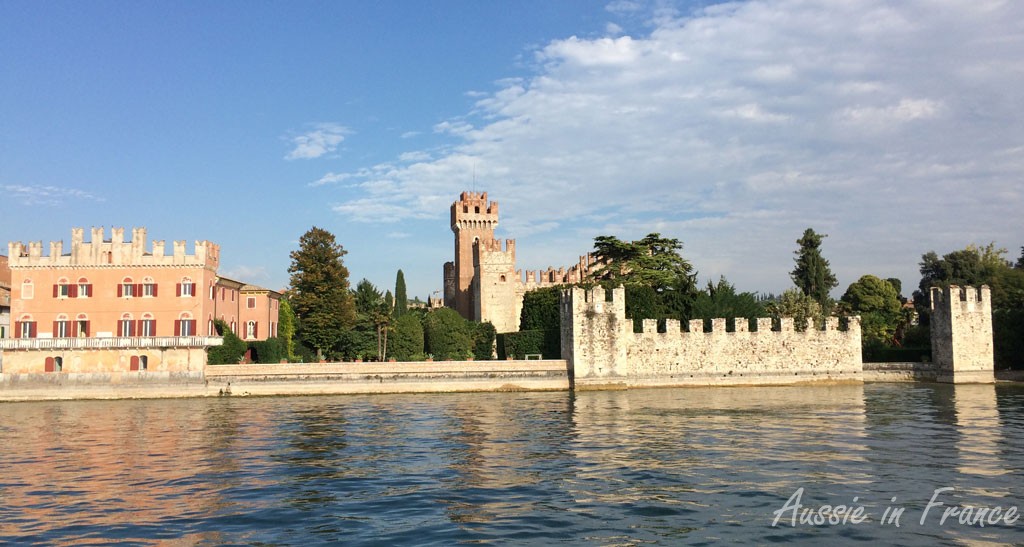
As we approach Lazise from the ferry, we are able to get a better view of the castle and waterfront that was obscured by the crowds in the morning. The streets are practically empty. Advice: always visit in the afternoon!
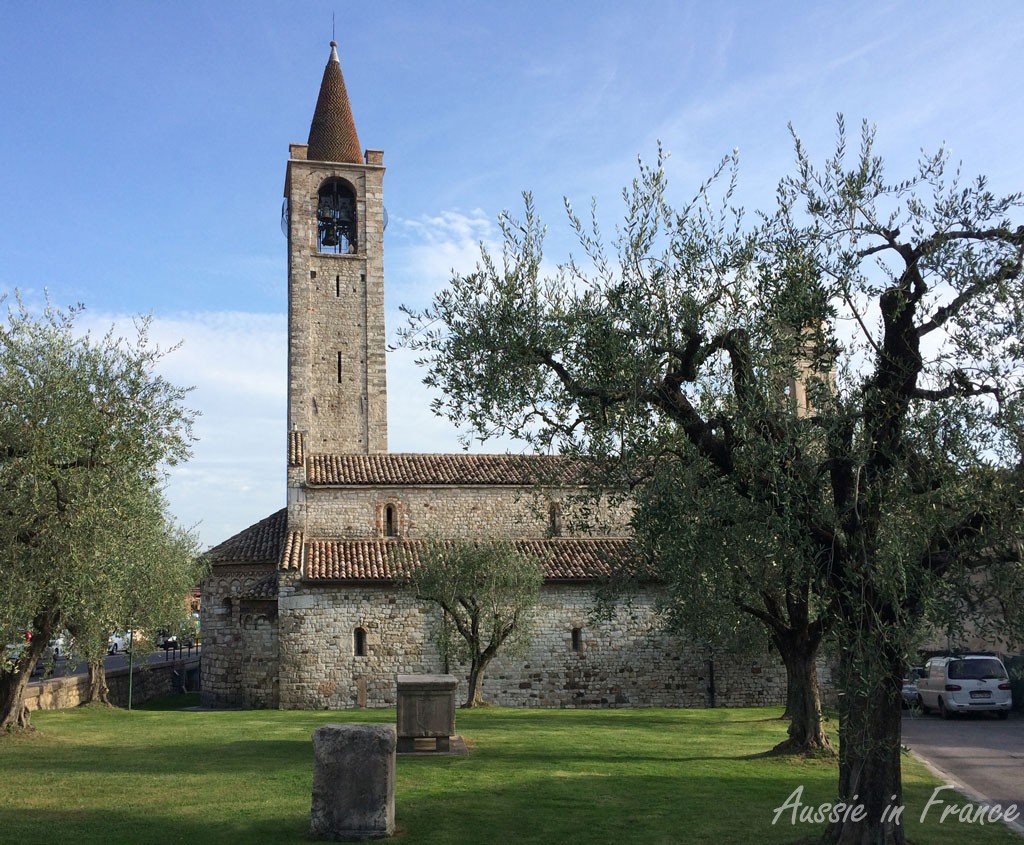
We soon arrive back in Bardolino and set out in search of the little Romansque church of San Severo. We visit in turns to avoid having to lock our bikes and the second time I go past I hear singing. I assume it must be recorded music although it’s very powerful. “No”, says Jean Michel, “it’s a young girl.” I go back in but she has stopped singing. “Encore,” I say hopefully and she obligingly sings again. Her voice brings tears to my eyes.
We cycle back to the car and are soon ensconced on our balcony with the usual glass of white wine. Although today is somewhat of a disappointed after yesterday, the sunset turns out to be the best so far. and the singing is unforgettable. Tomorrow we’re off to Padua.




